
- Living In Croatia
- Croatian Recipes
- Balkan Recipes

Home > 27 Traveling In Croatia Tips – First Time Travel Guide

27 Traveling In Croatia Tips – First Time Travel Guide

Written by our local expert SJ
Sarah-Jane has lived in Croatia for 10+ years. SJ, as she is known, has been traveling the Balkans & beyond since 2000. She now shares her passion for traveling with her husband & kids.
Planning your first trip to Croatia? You’re in for an unforgettable adventure! Croatia, with its stunning coastlines, rich history, and diverse landscapes, offers a unique blend of experiences for travelers.
As someone who fell in love with this country during my first visit in 2000 and now calls it home, I’m excited to share some valuable tips and insights to ensure your Croatian getaway is nothing short of amazing.
Whether you’re seeking sun-soaked beaches, exploring ancient cities, or indulging in local cuisine, Croatia has something for everyone. So, let this Croatia travel guide be your trusted companion as you embark on your Croatian journey. Get ready to discover hidden gems, soak in the culture, and create lasting memories in this beautiful Mediterranean paradise.
These tips will make your first break in Croatia extra fun and extra exciting.

- Croatia now uses the euro
- Check if you need a visa
- Don’t be afraid of driving
- Book ahead of time
- Hop from island to island
- Know about tipping
- Croatia is safe
- Make use of public transportation
- Avoid peak season and travel in the shoulder season
- We speak English
- Don’t forget the national parks
- Check the cruise ship schedules
- Keep some cash with you
- Don’t be afraid to try new foods
- Know that the beaches are rocky
- Venture outside of the main cities
- Explore the Istrian Peninsula
- Check out a local sporting event
- Take a day trip (or more)
- Rental apartments can be a great option
- Drink local
- Use Zadar as a base
- Spend time on Pag Island
- You can drink the tap water
- Don’t be drunk
- Croatia is now in the Schengen Zone
- Pack comfortable shoes
I am going to assume that “tips” like “ visit the old city of Dubrovnik ,” “ see Plitvice Lakes National Park ,” or “ check out Croatia’s islands ” are apparent and don’t need to be repeated.
If you’re planning a trip to Croatia, Dubrovnik is likely the first place you’ve heard about. Instead, here are some suggestions that are guaranteed to make your journey that much smoother, take you a bit off the beaten path, and even save you a little money no matter the time of year you go.
1. We Now Use The Euro

Since January 2023, Croatia has adopted the euro as its official currency. This means you won’t need to exchange currency if you’re coming from a Eurozone country. It simplifies your financial transactions during your stay.
- Money & Currency In Croatia
2. Check If You Need A Visa
Visa rules vary according to nationality, so always make sure that you check your particular needs before traveling. Croatia is now in the Schengen zone, so if you travel to other countries in the group, they’re going to add up within your allowance.
- Croatia Visa Requirements Info
- Croatia Digital Nomad Visa Requirements
3. Book Ahead Of Time
A lot of Croatia’s most popular spots tend to become very full during the summer months, particularly Dubrovnik. If you want to avoid disappointment and get the best rates, make sure you book accommodation well ahead of time.
You can head online and find plenty of options, no matter where you want to go.
4. Skip The High Season And Travel In The Shoulder Season
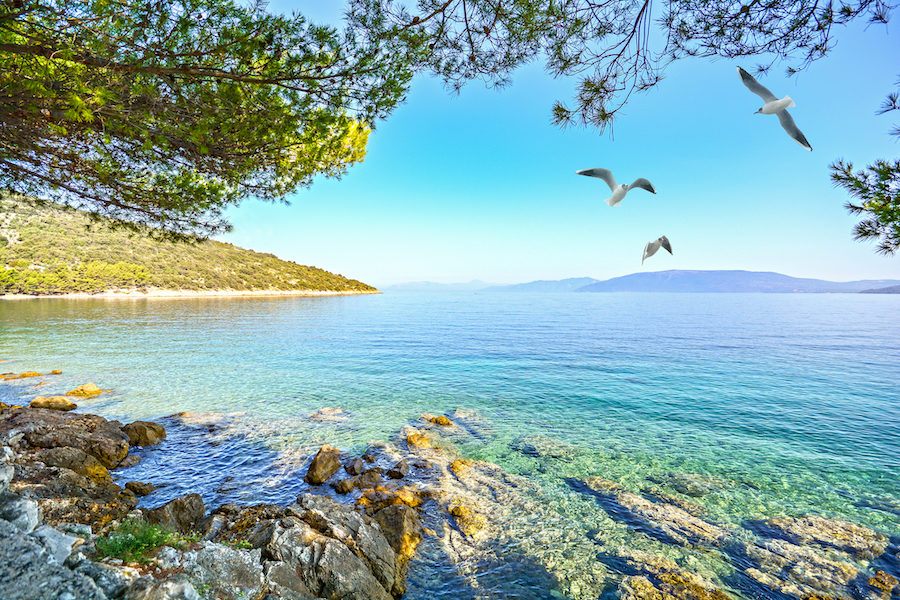
If possible, avoid the prime tourist season months of July and August. Temperatures are high, tourist crowds are insane, and hotel prices are at their peak. You’ll also pay more for ferries, national park entry fees, and other attractions. Do you need any more reasons to avoid the prime months of the year?
We visited Croatia for three weeks in September, starting north of the country and working south. The weather was still warm and comfortable, the sea temps were still suitable for swimming, it was easy to find excellent accommodation , and the worst of the tourist hordes were gone. Now, don’t get us wrong, places like Dubrovnik and Split were still crowded…but imagine how much worse it could have been!
However, one quick heads-up: If you’re traveling to the islands by ferry, the number of scheduled boats reduces dramatically outside of June through to September. Keep that in mind if traveling outside those peak times.
- Best Time To Visit Croatia
5. Croatia Is Safe
Croatia is a destination where you can explore with peace of mind.
Croatia is widely considered safe for you, with low crime rates, especially when it comes to violent crimes against tourists. While petty theft can happen, it’s not rampant, so a little vigilance goes a long way.
Our locals are welcoming and often speak English, making it easy to navigate and ask for help. Croatia’s healthcare system is reliable, and Croatia offers excellent medical facilities if you need them.
6. Make Use of Public Transport
If you want to explore further, don’t be afraid of using the local buses. The inter-city services are efficient and very clean while also being mostly tourist-friendly. Buses visit all popular tourist sites and cities, and it’s a lot cheaper than taxis or car hire.
- Croatia Bus Timetables, Information & Online Tickets
7. Don’t Be Afraid Of Driving, But Do So Carefully
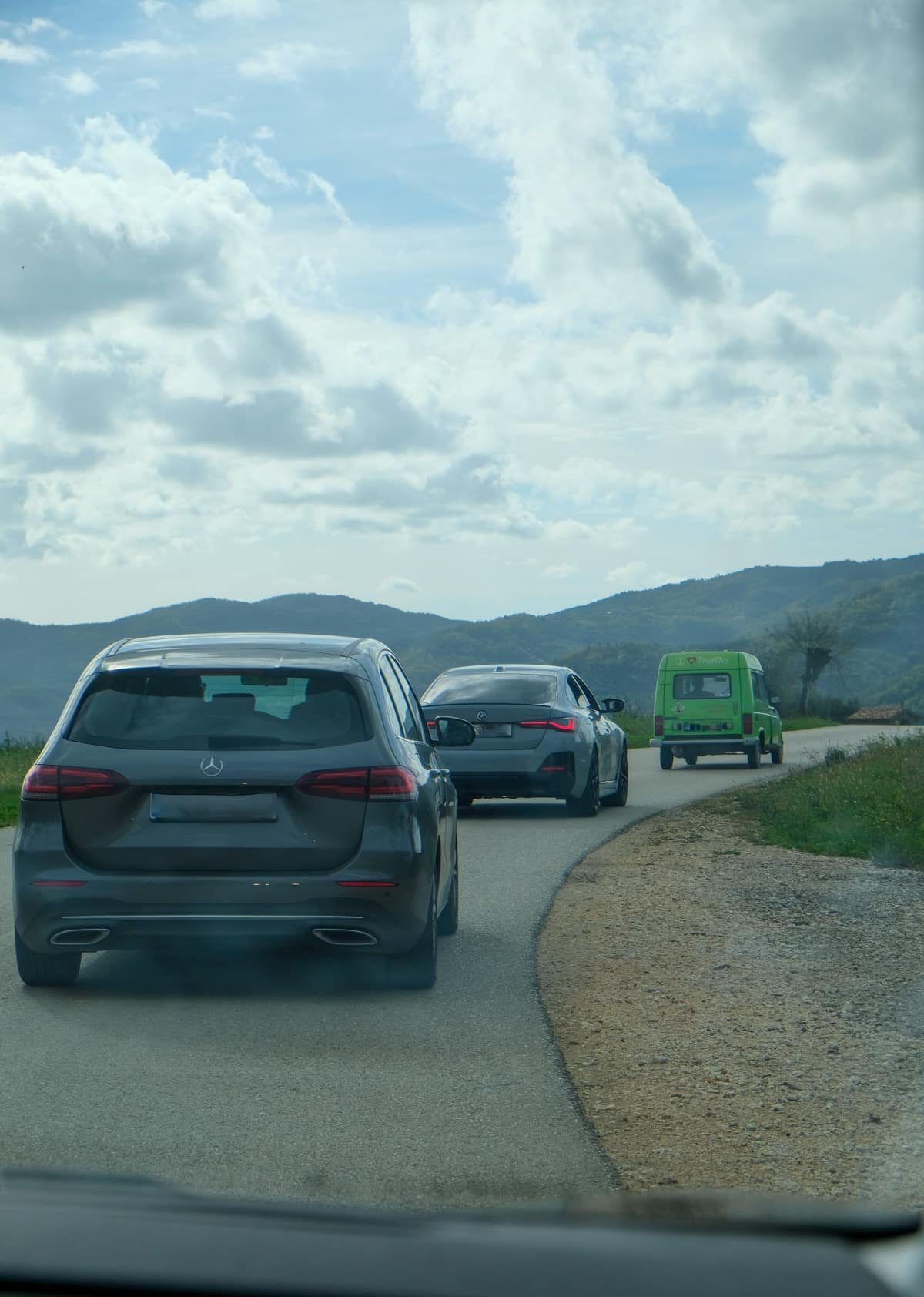
If you want the freedom to explore on your own steam, you could hire a car. However, do be aware that some of Croatia’s roads are very steep and winding. Don’t let that put you off; make sure that you stick to the speed limit and only use the roads you feel comfortable on.
- Car Rental In Croatia
8. Croatia Is Now In The Schengen Zone
As of January 2023, Croatia has officially become a member of the Schengen Zone, marking a significant milestone in its integration with the European Union.
After years of preparation and meeting the necessary criteria, Croatia’s entry into the Schengen Area has streamlined travel for both its citizens and international visitors. This development allows you passport-free movement across borders between Croatia and other Schengen countries, making travel within the region more convenient and efficient.
9. Hop From Island To Island
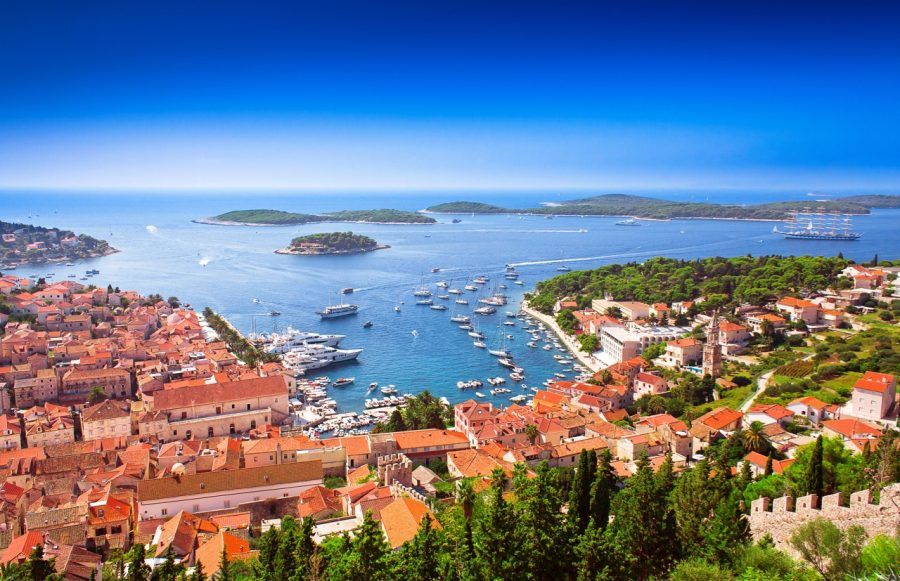
Rather than making day trips from Split or Dubrovnik to the islands of Hvar , Vis, Korcula, etc., plan your itinerary to jump from one island to the next. Each has a distinctly different character, and there are ferries and shared water taxis that will take you from one to the next without having to backtrack to the main port.
A bit of planning will save you time and money and is an excellent way to work your way from Split to Dubrovnik or vice versa.
- Planning Your Croatia Island Hopping Adventure
We visited both Hvar (as a day trip) and Korcula (over several days) and vastly preferred Korcula . While Hvar is beautiful and definitely has its charm, its higher-end type of travel seems to attract more of the “monied” party crowd . Since we left our yacht at home, it wasn’t our scene. It depends on what you’re looking for, but Korcula was our favorite.
In contrast, Korcula is quiet, laid back, beautiful, and relaxing. If you go, rent bicycles to tour the island and explore beautiful beaches and fun beach bars. If you’re into wine, you should also pop into local wineries and try some of their Grk wine, found only in Korcula.
10. Know About Tipping
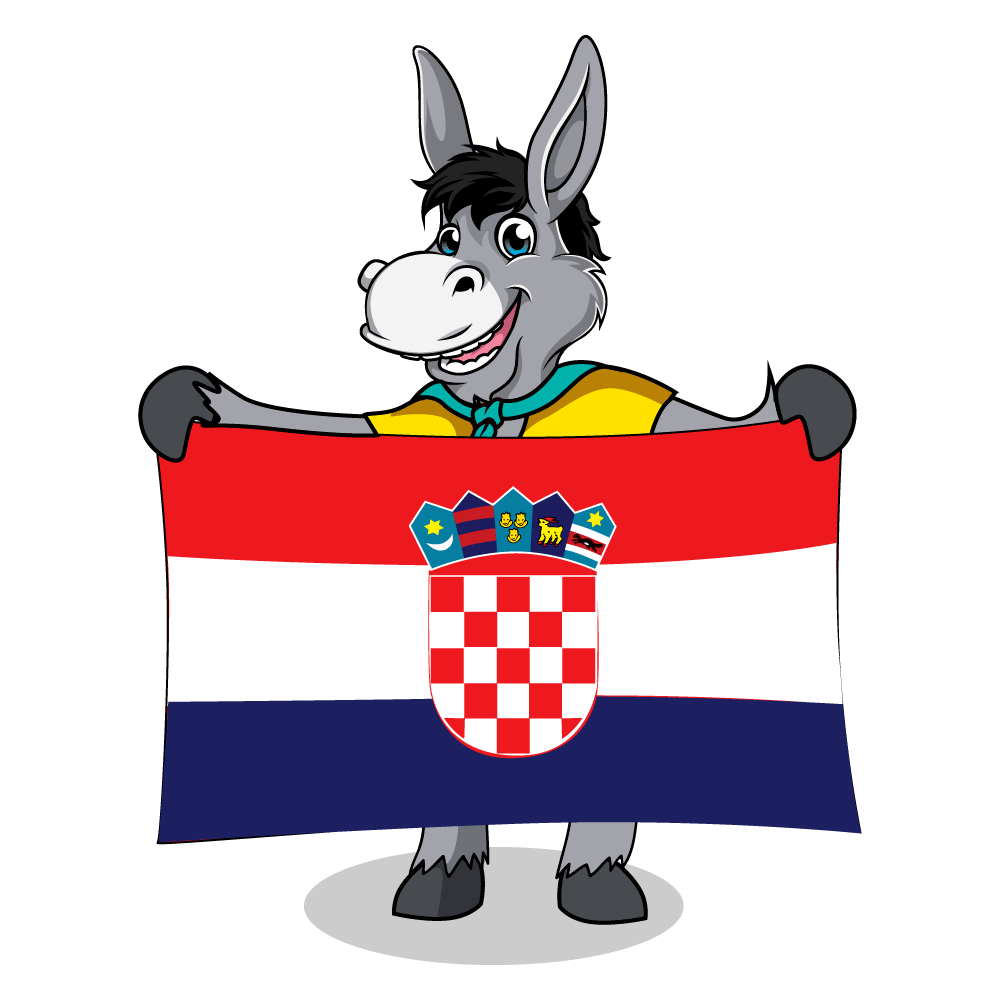
It can be hard to know from location to location about tipping. You’re not expected to tip in Croatia, but it’s always appreciated. If you want to do so, e.g., you enjoyed the service you received, then around 10-15% of the total bill is a good rule of thumb.
- How To Tip In Croatia
11. We Speak English
While many Croatians in tourist areas speak English, it’s always appreciated when travelers make an effort to speak a bit of the Croatian language. Simple phrases like “hello” (bok), “thank you” (hvala), and “please” (molim) can go a long way in enhancing your interactions with us locals.
- Croatian Phrases With Pronunciation
12. Don’t Forget The National Parks

It’s easy to stick to the beaches and cities, but the national parks in Croatia are so blindingly beautiful it would be a crying shame to miss them. Check out Plitvice Lakes (a UNESCO world heritage site, by the way), Krka National Park , and Paklenica to get you started.
- 8 National Parks In Croatia
13. Check The Cruise Ship Schedules
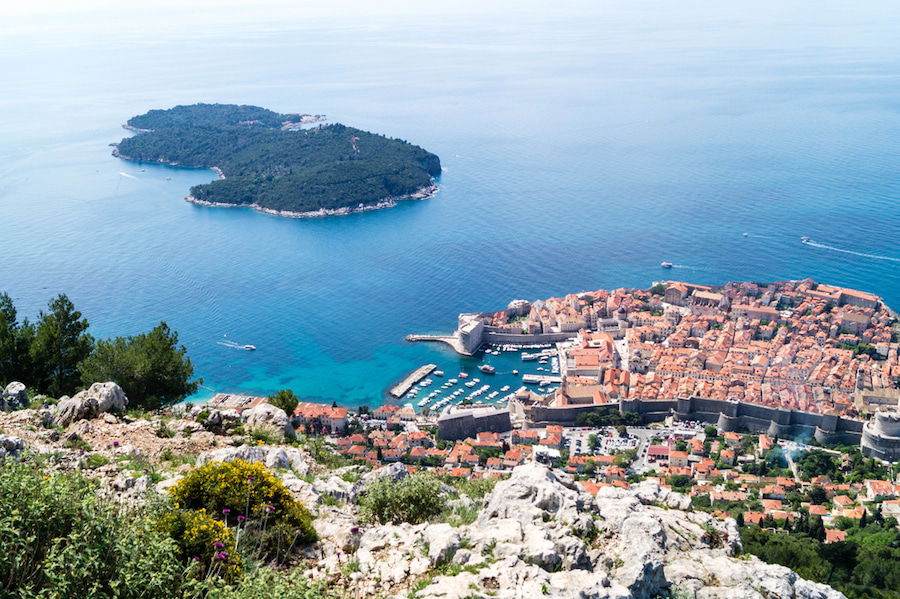
But you’re not going on a cruise, we hear you say! Maybe not, but you will want to be aware of them regardless. Dubrovnik can have 10,000 cruise ship passengers on high-traffic days , resulting in shoulder-to-shoulder congestion in the Old Town combined with all the other coach bus tour groups and independent travelers.
Split and Dubrovnik are popular areas famous for their Old Towns. Medieval towns tend to have narrow streets and cover a finite, typically small, area. Cruise passengers often explore these towns in large tour groups. Do you see what we’re getting at?
If you can visit either of these cities on a day where there are only 1 or 2 cruise ships in port , rather than 7 or 8 (or even when the ports are hosting smaller vessels rather than the behemoths), the Old Town that you want to enjoy will be noticeably less crowded. This worked out well for us in Dubrovnik ! Explore another part of the city on high-traffic cruise ship days or take a day trip to an island or another town.
- How To Avoid The Crowds In Dubrovnik
- Dubrovnik Cruise Port Guide
14. Cash Is King In Some Places
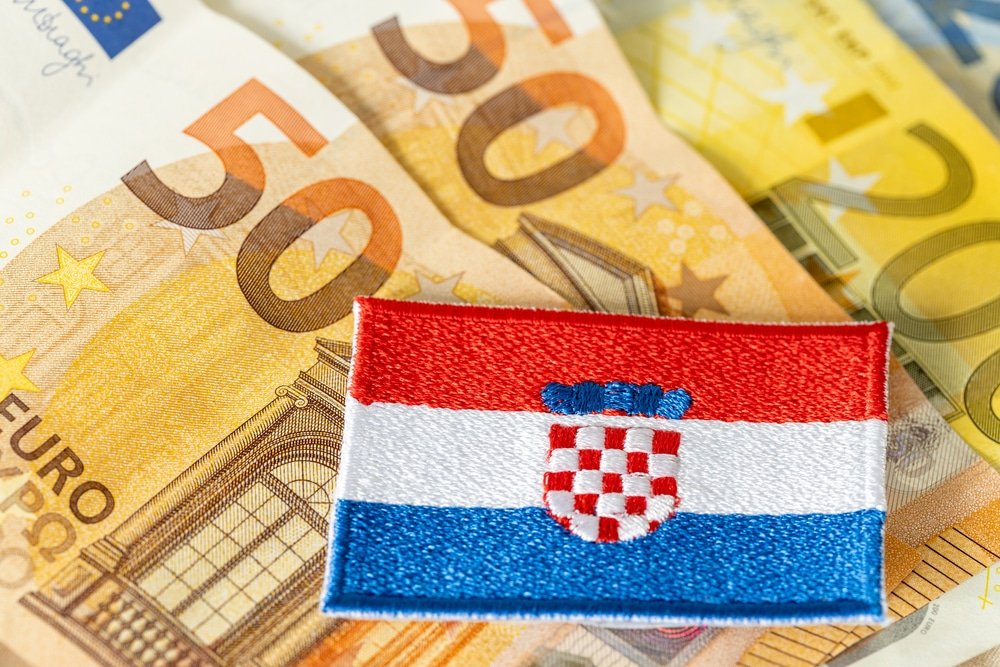
While credit cards are widely accepted in most bars, restaurants, cafes, and attractions, especially in tourist areas, main resorts, towns, and cities, smaller businesses, local markets, and rural areas may prefer cash.
It’s a good idea to have some local currency – remember, we now use the euro – on hand for these situations.
15. Know That The Best Beaches Are Rocky

Before you go to the beach, know that most of Croatia’s beaches are rocky. There are a few sandy beaches, but the majority will have pebbles or rocks. It’s a good idea to take some sea shoes with you, especially if you’re traveling with kids.
- Best Sandy Beaches In Croatia
- 63 Of The Best Beaches In Croatia
16. Don’t Be Afraid To Try New Foods
Croatian cuisine is a delightful blend of Mediterranean, Central European, and Balkan flavors. Don’t miss the chance to savor local dishes like seafood risotto, peka (a delicious meat and vegetable dish), and pasticada (marinated beef). And, of course, indulge in the local desserts.
- Must Try Foods In Croatia
- Delicious Desserts, Cakes & Sweets In Croatia
- Guide To Ordering Food In Croatia
17. Venture Outside Of The Main Cities
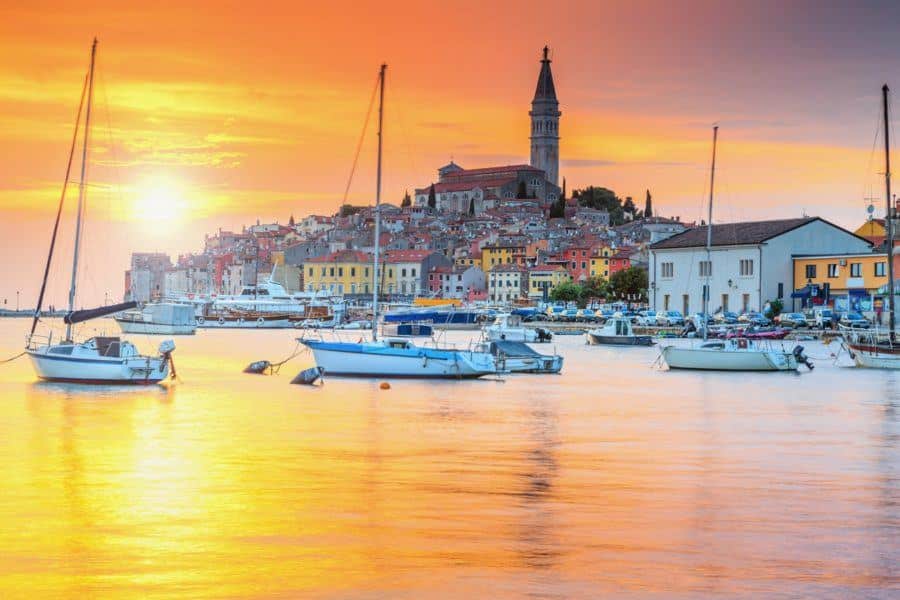
When we toured around southern Croatia , eventually, the crowds got to us. You don’t have to go too far outside the main tourist centers to find peace and still have the beautiful scenery you want.
Less than an hour’s drive from Split, Trogir is a fantastic town right on the water with a small but atmospheric old town and beautiful beaches. Trogir can be visited as a day trip from Split, or better yet, make it your base with Split being the day trip.
Near Dubrovnik, a great day trip option is Cavtat. Reachable by bus, or even better by water taxi, Cavtat is a small town that feels worlds away from busy and crowded Dubrovnik in about an hour. You can do walks around the island and plenty of accommodations and waterside restaurants, so bring your comfy shoes.
There is so much more to Croatia than Dubrovnik , Split, and the islands in between them.
- Weird, Interesting & Unique Things To Do In Croatia
18. Drink Local

Croatia boasts a long tradition of winemaking, and each region has its own distinct grape varieties and winemaking techniques. Whether you find yourself in Istria, the Pelješac Peninsula, or the beautiful vineyards of Slavonia, take the opportunity to go wine tasting. Sample local wines like Plavac Mali, Malvazija, and Graševina while enjoying the picturesque vineyard landscapes.
Croatia’s craft beer scene is flourishing, with microbreweries popping up across the country. Try the local craft beers, which often incorporate unique ingredients and flavors. Seek out a local pub or brewery, and ask for recommendations from the locals. Some popular Croatian craft beers include Velebitsko, San Servolo, and Zmajsko Pivo.
- Top Wine & Wineries In Croatia
- Different Flavors Of Croatian Rakija
- Drinking Age In Croatia & 10 Drinks To Try
19. Tap Water Is Safe
One less thing to worry about while in Croatia is the tap water. It’s perfectly safe and very drinkable. Feel free to fill up your reusable water bottle and stay hydrated as you explore the beautiful landscapes and cities without the need to purchase bottled water.
- Our Favorite Collapsible Water Bottles
20. Don’t Be A Drunk

Croatia is known for its warm hospitality and vibrant nightlife, but it’s important to enjoy it responsibly. After years of dealing with unruly behavior from tourists, some destinations, like Hvar Town, have implemented fines for public drunkenness. It’s not only frowned upon but can also result in a fine of up to €700 .
So, while enjoying the nightlife, keep in mind to drink responsibly and avoid public disturbances to ensure a pleasant experience for yourself and those around you.
- Where To Party In Croatia
21. Use Zadar As A Base
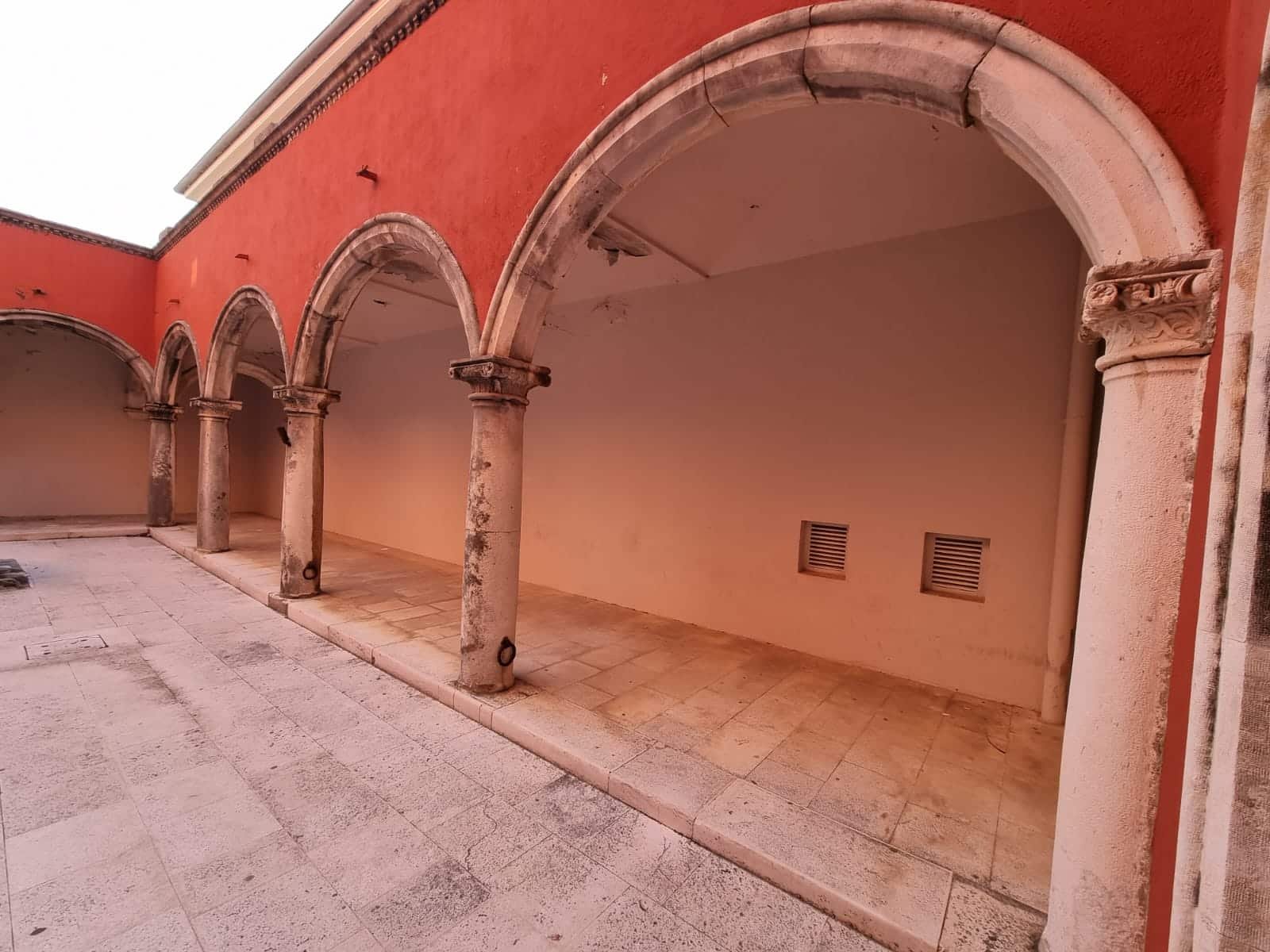
Zadar is a fascinating cit y to explore in its own right, but it can also be used as a base for a couple of days to explore several of Croatia’s incredible national parks . This includes the famous Plitvice and Krka National Parks waterfalls and hiking in the nearby mountains at the less touristy Paklenica National Park.
Rent a car to give yourself the most flexibility if you feel comfortable driving – or get a private transfer for a luxury touch. Our top off-the-beaten-path tip for visiting Zadar is to check out Pag Island.
- Where To Stay In Zadar
- Family Friendly Islands In The Zadar Region
22. Explore The Istrian Peninsula

Istria, the northern part of Croatia bordering Slovenia, was one of our favorite parts of the country. We based ourselves in Rovinj and explored the coast and inland from there.
Istria should be on the itinerary of any foodie out there . The region is home to some of Croatia’s best wines, truffles, and olive oil . Since the Italians once ruled the area, it has a distinctly Italian feel that you don’t experience in the rest of Croatia . Unfortunately, that often manifests itself in low-quality pizza and pasta in tourist restaurants.
Do yourself a favor and stick to ordering dishes with local ingredients. Renting a car to explore the small hilltop town s, such as Groznjan and Motovun, makes for a great road trip!
Rovinj itself is an interesting town to explore on foot. With some great weather, you can work on your farmer’s tan, exploring the shops, restaurants, and churches during the morning.
Then show off that tan on the beaches, walking distance south past the harbor and along the coast . Just be warned – the further you walk, the fewer clothes people wear.
The southern end of the beaches is not for the shy. Let it all hang out, as they say!
- Best Beaches In Istria
- Guide To Central Istria
- Rabac & Labin – Eastern Istria Guide
- Northwest Istria -Umag & Surrounding Areas
23. Spend Some Time On Pag Island
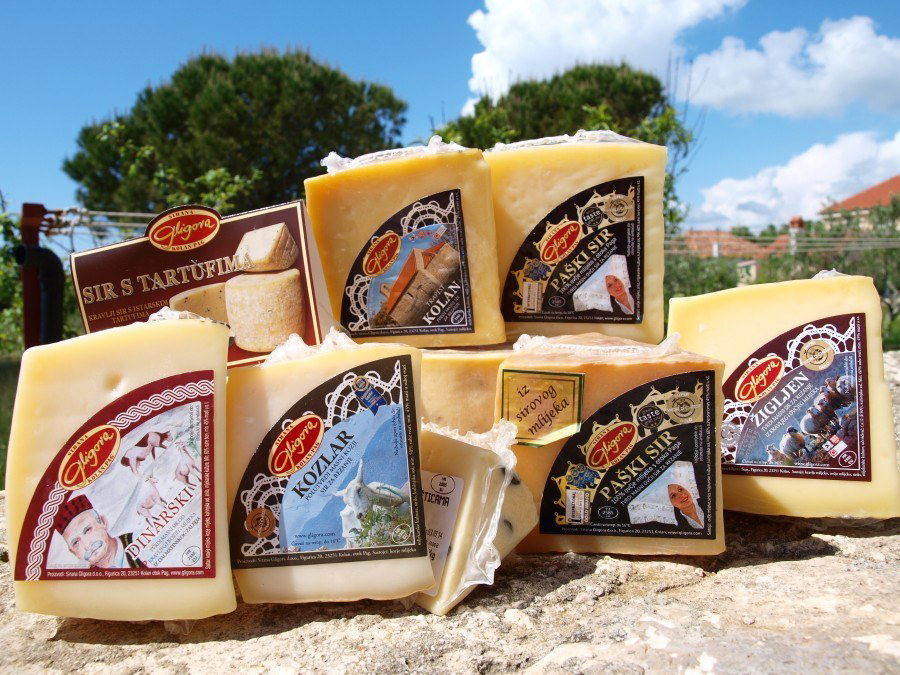
Pag has an entirely different landscape than much of the rest of Croatia; in some parts, it almost seems like you’re driving on the moon. A handy bridge from the mainland to Pag Island makes it an easy one-hour drive from Zadar. The island is probably best known for its cheese.
While they make many different types of cheese, the most famous is made from sheep’s milk. Salt from the surrounding ocean gets deposited on the vegetation of Pag Island, particularly a hardy type of local sage, which the sheep then eat. This provides a distinctive flavor to the Pag cheese.
- Cheese Tasting At Sirana Gligora – A Highlight Of The Island!
Pag Island also has some great beaches . Zrce Beach is the “Ibiza of Croatia during the summer months.” Get your rave on at the Hideout Festival or laze about one of the enormous beach clubs. If dancing with drunk 20-something strangers isn’t your thing, the beach is deserted by September, but the water is still warm and swimmable. We practically had the place to ourselves!
When you’re sitting in your hotel room (or rental apartment) balcony in Rovinj or Zadar, eating some incredible truffle cheese from Pag Island and washing it down with a nice bottle of Istrian wine, you can thank us later. ;) You’re welcome!
24. Check Out A Local Sporting Event

Few things offer a better immersion into the local culture than attending a local sporting event. In most of the world, this means checking out the local club schedule for a nearby football match. In other parts of the world, this could mean anything from cricket to sumo wrestling. This goes for any country, really, but keep it in mind for Croatia, a nation filled with sports enthusiasts.
Some of the major sporting events in Croatia are:
- Davis Cup: Croatia has a successful tennis history, and the Davis Cup matches featuring the Croatian national team are highly anticipated events
- Zagreb Indoors: This ATP Tour tennis tournament attracts top-ranked players and is held annually in Zagreb
- Zagreb Marathon: Held in the capital city, the Zagreb Marathon attracts both local and international runners, offering a scenic route through the city.
- Croatian Basketball League: Basketball is another beloved sport in Croatia, and attending a game featuring top Croatian teams is a thrilling experience
- Croatian Handball League: Handball is highly popular, and the Croatian Handball League features competitive matches that sports enthusiasts can enjoy
- Water Polo Matches: Croatia has a strong water polo tradition, and attending matches featuring top Croatian clubs or the national team is a great way to experience this exciting sport
- Striking Football Pitches In Croatia
25. You Need Comfortable Shoes
Croatia’s cities and towns are often best explored on foot, and a sturdy pair of comfortable walking shoes is an essential part of your travel gear. Many of Croatia’s urban centers boast picturesque cobblestone streets that exude old-world charm but can be less forgiving on your feet if you’re not well-prepared.
These uneven surfaces are not only found in the historic old towns but also many scenic coastal areas.
Whether you’re admiring ancient architecture, enjoying seaside promenades, or wandering through bustling markets, your feet will thank you for the support and comfort of your chosen footwear.
- All Time Best Shoes For Travel
- Comfy Flats For Travel
26. Take A Day Trip (Or More) To Mostar
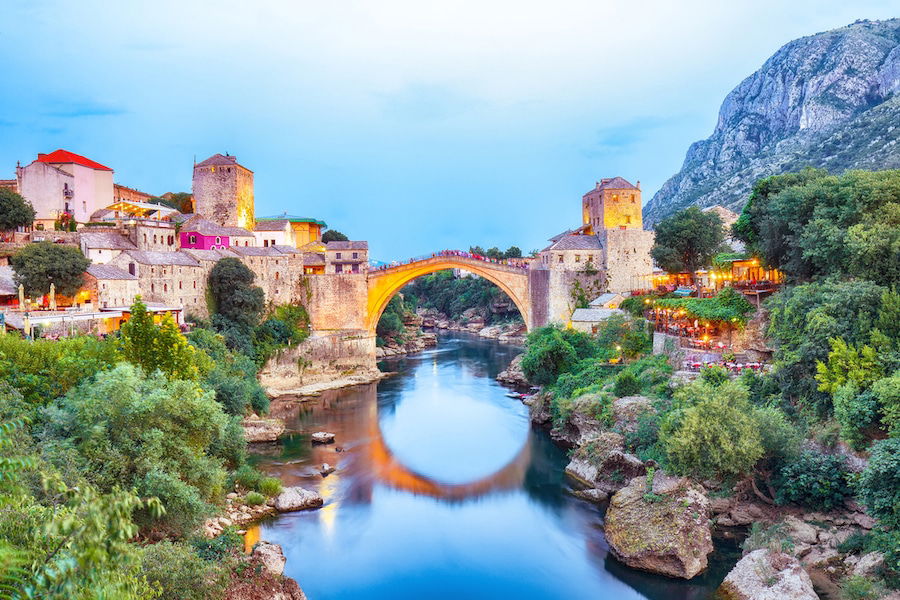
The city of Mostar in Bosnia and Herzegovina is an easy (although somewhat long) day trip from either Split or Dubrovnik. Plenty of travel companies offer tours. Public, long-distance buses are also comfortable and easy to arrange yourself.
- How To Get From Dubrovnik To Mostar
Mostar is one of our favorite places in the Balkans. The culture is vastly different from Croatia because of its history, religious diversity, and fantastic food . If you can spare the time, spend a night here to see the sights and enjoy the food thoroughly.
Thrill-seekers can even sign up for a course to jump off the famous bridge . For wimps like us, keep your eye out for tour groups. There are plenty of “fake” divers on the bridge who can only attract a crowd and then solicit tips. The actual dives seem to happen as soon as the next tour group shows up on the water’s edge.
27. Rental Apartments Can Be A Great Option

When it comes to accommodation in Croatia, don’t overlook the convenience and cost-effectiveness of rental apartments. This lodging option not only offers comfort and privacy but can also save you money, especially if you’re open to staying a bit further from the bustling city centers or old towns.
Many travelers find that renting an apartment allows them to immerse themselves in the local lifestyle and experience the destination from a more authentic perspective. Plus, you can often get valuable insights and recommendations from your hosts, who are usually eager to share their local knowledge.
One significant advantage of choosing an apartment is the ability to cook your meals. Croatia’s fresh produce markets and local grocery stores offer a wide array of ingredients, making it easy to whip up your favorite dishes. This not only saves money on dining out but also gives you the opportunity to savor homemade meals with local flavors.
Whether you’re traveling solo, with a partner, or as a family, rental apartments provide flexibility and the freedom to create your own schedule. So, consider renting an apartment during your Croatian adventure and enjoy the benefits of both cost savings and an enriched travel experience.
- Make Tasty Croatian Recipes From Your Rental
So, there you have it – our insider’s guide to tips for traveling to Croatia. As a local, I’ve shared our best tips to help you make the most of your time in this incredible country. Enjoy your Croatian adventures!
- A Massive List Of Things To Do In Croatia
- Best Things To Do With Kids In Croatia
- Car Rental Tips And Deals
- Best Museums In Croatia
- Tiny Villages And Towns In Croatia You’ve Gotta See
- What Language Is Spoken In Croatia
- Is Croatia Safe To Travel? Helpful Safety Tips
- 10 Day Itinerary In Croatia
- How To Travel With A Dog In Croatia
Comments (6)
What a great post. Like you, I find it impossible to have a ‘favourite’ destination in Croatia. I loved Cavtat (for the reasons you mention!), Rovinj and Pula, Trogir, Zadar, Sibenik (and Krka Park is majestic) and also Korcula. I went to Brac for a day from Split and hired a scooter – an awesome way to explore the gorgeous coastal villages like Postira, etc. Reading your blog has fuelled my flames – I’m desperate to go back there now!!
One word, amazingly beautiful country. If this country had 10 months of tropical weather like Thailand it would get 100 million tourist as the towns, the food, the nature, the watetrfalls and 1200 islands are so unique and just heaven on earth.
Thanks Trish. Will look & dream ????
This is really great…..
A month away…
great ideas here!
Leave a Reply Cancel reply
Your email address will not be published. Required fields are marked *
Save my name, email, and website in this browser for the next time I comment.
This site uses Akismet to reduce spam. Learn how your comment data is processed .
Move This Adventure To Your Inbox & Get An Instant Freebie
Subscribe To Unlock Your FREE Customizable Travel Packing List & All Our Best Tips!
Unlock Your FREE Customizable Travel Packing List!
Subscribe Now For Instant Access To Stress-Free Packing
Castles, cities, coastlines and more: the 16 best places to visit in Croatia for 2024

Mar 2, 2024 • 8 min read

Jump into the best of Croatia with our list of top spots to visit © paulprescott72 / Getty Images
With 2500 miles of coastline and close to 1200 islands, Croatia 's sun-drenched credentials are impressive.
And that’s before you add its troves of Roman and Venetian-era architecture, UNESCO sites of both cultural and natural heritage, and gorgeous nature parks, mountain ranges, lakes and rivers. There’s such a diversity of landscapes and cultural attractions that a single visit can’t possibly cover them all.
Yet since you have to start somewhere, here’s our rundown of the very best places to visit in Croatia.

1. Plitvice Lakes National Park
A turquoise ribbon of lakes linked by gushing waterfalls in the forested heart of continental Croatia, UNESCO-listed Plitvice Lakes National Park is an awe-inspiring sight.
The park is comprised of 16 interconnected lakes, the 2.35km-long (1.5 miles) Kozjak being the largest, plus dozens of smaller ones – some just reed-fringed ponds. Travertine expanses covered with mossy plants divide the bodies of water, whose startling colors are a product of the underlying bedrock. Wooden boardwalks allow you to easily traverse this extraordinary watery world.
Planning tip: Entry tickets are limited to avoid overcrowding. Be sure to book online in advance .

2. Korčula Town
The sweet little seaside town of Korčula has a set of imposing walls and towers, as well as an extraordinary cathedral, adorned with a downright kooky set of carvings. You can walk every one of the streets of its compact old town, laid out in a fascinating fishbone pattern, in less than an hour. This leaves plenty of time for an alfresco meal under the umbrella pines at one of the restaurants lining the sea-facing Petra Kanavelića promenade.
Planning tip: Korčula Town is an easy day trip from Dubrovnik by ferry.
3. Hvar Town
Summer is when yachts anchor at this tiny seaside party town and sun-dazed revelers descend in droves to the beachside cocktail bars.
For a step back from the action and superb views over the town, head up to Fortica , the medieval castle looming on a hill above the town. To find a swimming spot, follow the waterfront promenade and stake out one of the tiny rocky bays, or hop on a taxi boat to the nearby Pakleni Islands .

Cloaked in dense pine forests, marvelous Mljet is an island idyll. Legend has it that Odysseus was marooned here for seven years, and it’s easy to appreciate why he took his time leaving. The entire western section of Mljet is a national park , where you’ll find two sublime cobalt-colored lakes, an island monastery and the sleepy, unbelievably pretty little port of Pomena. Don’t neglect eastern Mljet, home to some tranquil little bays and brilliant beaches.
Istria delights with its undulating hills, charming hilltop towns and many seaside spots. A must-visit is lovely Rovinj , a town of pastel-hued facades and cobblestone lanes lined with art galleries, sitting on its own peninsula jutting into the Adriatic Sea.
Next, move inland to Motovun , a picturesque hilltop town rising from a forested valley. Park at its base and hop on the shuttle bus, or simply walk steadily uphill to its medieval walls for vistas of rolling hills. On Istria’s southernmost tip lies Cape Kamenjak , an undeveloped nature reserve fringed by a string of pebble bays and secluded rocky beaches.
Planning tip: Find accommodation in central Istria – from where it’s easy to get anywhere on the peninsula.

6. Vis Island
One of Croatia’s more remote islands, Vis was best known as the site of a former Yugoslavian military base...before Mamma Mia! 2 put it on everyone’s list.
The port of Vis, neighboring Kut, and Komiža at the western end are the island's major towns, made up of lovely stone townhouses and seaside promenades. The hidden bays and rocky coves of its southern coast are best explored by boat, especially postcard-perfect Stiniva Bay , otherwise reached via a steep, rocky path.
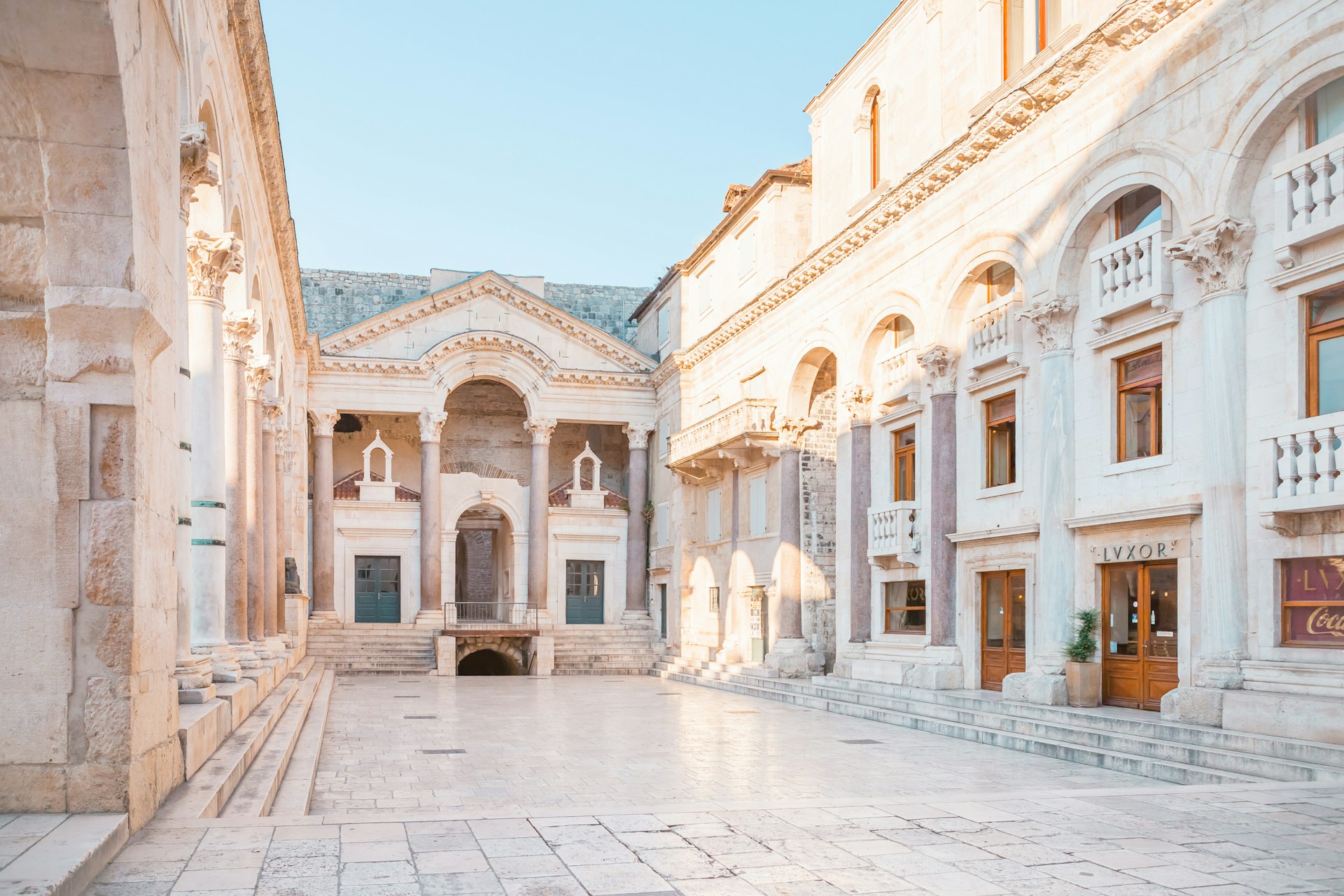
Split 's sea-facing Diocletian’s Palace is a surprising maze of streets and lanes, a mini 4th-century Roman city chock-full of cafes, shops and restaurants. Pause in the domed Vestibule to listen to professional Klapa singers demonstrating their traditional a cappella style, then hike along the forested paths of Marjan Hill to the lookout for a sweeping panorama of the city and seascapes.
Planning tip: Split’s harbor is the launching pad for the islands of Brač, Hvar, Vis, Šolta and Korčula.

8. Kopački Rit Nature Park
Kopački Rit Nature Park sits on the floodplain of the Danube and Drava Rivers, and is one of the largest natural wetlands in Europe. Keen bird-watchers can join a boat trip to spot white-tailed eagles, black storks, purple herons, spoonbills and wild geese – just some of the park’s 290 bird species. You can also follow the 2.4km-long (1.5 miles) boardwalk along an educational trail winding through the flooded forest floor and learn about local flora and fauna on the way.

9. Šibenik
Set on a bay connected to the Adriatic Sea, Šibenik is a charmer that somehow – undeservedly – falls off the radar . For starters, it has two UNESCO sites: its gorgeous landmark, the 15th-century St James’ Cathedral , notable for its frieze of 71 comical faces carved into its facade, and St Nicholas Fortress, a sea-bound fortification built during Venetian times that’s linked to the mainland via a walkway, granted the World Heritage honor in 2017.
This once carefully guarded city boasts three other fortresses; Barone is the most visit-worthy, thanks to its excellent visitor center and interactive exhibits.
Planning tip: Hop on the ferry for the short trip to tiny Zlarin, a car-free island.

10. Zagorje
In Zagorje , postcard-worthy medieval castles sit waiting for time travelers. Journey back to 1334 in Trakošćan Castle , whose neo-Gothic 19th-century exterior hides far older internal structures. Learn about the excesses of the Croatian aristocracy in its well-presented museum and wander 215 acres of castle grounds, landscaped into a romantic English-style park with exotic trees and an artificial lake.
Further west, the hilltop castle of Veliki Tabor offers a trip to the 16th century, with its pentagonal towers and turrets, atmospheric interiors and bucolic landscapes that surround it.

11. Dubrovnik
The extraordinary fortified city of Dubrovnik is Croatia’s most popular destination for good reason. Enclosed within its massive city walls are more than a dozen churches, medieval monasteries, elegant squares of limestone and centuries-old residential quarters. An absolute must-do is the circular walk atop its walls , where you can catch glimpses of hidden courtyards and gardens and sweeping sea views.
Planning tip: Walk the walls first thing in the morning or an hour before closing to avoid the crowds and summer heat.

12. Brač Island
Near the town of Bol on Brač’s southern coast lies the tail-shaped Zlatni Rat , Croatia’s most photographed beach. As astonishing as its shape are the two-toned blue-green waters lapping its strand of fine pebbles. Its eastern side gets a steady breeze, drawing swarms of wind- and kitesurfers.
Looming above is Vidova Gora , the highest peak in the Adriatic islands at 778m (2552 ft), with gorgeous vistas of nearby islands and the famous beach below. For a taste of island life , make a halt at the colorful fishing villages of Milna or Sutivan.
Planning tip: Stop in at the Olive Oil Museum in Škrip to learn about Brač’s history of production.

Set on a peninsula, Zadar ’s compact old town is crammed with Roman ruins, Byzantine churches and Romanesque cathedrals . Dating back to Venetian times, its defensive walls are recognized by UNESCO and have been transformed into a tree-lined promenade tracing the seafront.
At nightfall, the northwest corner of the old town is the stage for Zadar’s celebrated sunsets. The spectacle is set to the ethereal sounds of the Sea Organ , a quirky installation of 35 pipes hidden under stone steps that use the wind to create music. A few feet away is the Sun Salutation , a circular surface of solar panels that transforms into a colorful light show at night.
Planning tip: From Zadar, it's a one-hour drive south to Vransko Lake Nature Park, Croatia’s largest natural lake and home to more than 100 bird species.

Wild, rugged and unspoiled, Cres has an off-the-beaten-track vibe. Cres Town is a busy port town with pastel-colored facades, while the quiet fishing village of Valun is bookended by immaculate pebble beaches. A hiking path from here heads upwards to Lubenice , a hamlet of stone houses perched on the edge of a 378m-high (1240ft) sea-facing cliff.
Lying at the island’s southern end is Osor, a charming village of stone cottages and rose gardens with a pleasing artistic bent, revealed in the stylized bronze sculptures of musicians decorating its squares.
Planning tip: At Osor, a short bridge connects Cres to the island of Lošinj .

15. Krka National Park
The star of the show at this national park is the Krka River, rushing through canyons, broadening into lakes and splashing over numerous falls and cascades. Stroll along boardwalks past mighty waterfalls and marvel at the multitude of fish darting through the emerald waters.
You’ll also find ruins of a Roman military camp and amphitheater, historic watermills, and two fascinating monasteries – one on an island and another built over ancient catacombs.

Zagreb is made for strolling. Wander along the tree-lined Strossmayer promenade, which winds along the city’s medieval defensive walls to the Upper Town for panoramic views over the red rooftops and church spires of the Lower Town. Afterward, stop off at the open-air Dolac Market , where farmers peddle their fresh produce under bright red umbrellas. Then do like the locals and head for a coffee on Flower Square (Cvjetni trg) to experience Zagreb's cafe culture.
This article was first published Nov 17, 2010 and updated Mar 2, 2024.
Explore related stories

Jul 6, 2023 • 7 min read
Which of these countries – two of the world’s most beguiling – makes for a better vacation? Two expert writers make the case for each.

Jun 18, 2024 • 5 min read

Jun 13, 2024 • 8 min read

Jun 12, 2024 • 12 min read

May 28, 2024 • 8 min read
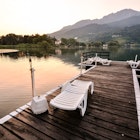
May 24, 2024 • 9 min read

Apr 29, 2024 • 7 min read

Apr 27, 2024 • 5 min read

Apr 19, 2024 • 10 min read
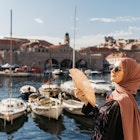
Mar 20, 2024 • 11 min read
- Search Please fill out this field.
- Manage Your Subscription
- Give a Gift Subscription
- Newsletters
- Sweepstakes
- Destinations
Travelers to Croatia can choose to explore its coastline and more than a thousand islands in the Adriatic Sea, with fishing villages, beaches, wildlife, ancient coastal towns, resorts, and rugged cliffs. In central Croatia, visitors find castles, medieval towns, thermal springs, and green hills. Croatia’s cities range from ancient to modern, where travelers enjoy Croatian cuisine that includes seafood, distinctive breads, soparnik, a thin pie with Swiss chard and onions, cabbage rolls, Zagreb Schnitzel, and delicious wines.
- Switzerland
- The Netherlands
Croatia Travel Guide: Things To Know Before Traveling To Croatia
Welcome to our Croatia Travel Guide where you will find all the information you need for planning a trip to Croatia.
When I think of Croatia, I associate it with small, safe, sublime, pebbles, islands, sea, and countryside. The country has over a thousand islands , 8 national parks , 11 nature parks, over 6.000 km of coastline, and ten World Heritage sites .

From Paklenica climbing sites , beautiful beaches of central Dalmatia , the great food of Istria , Croatia’s fabulous wines, partying on the islands, and sailing the Adriatic , Croatia has much to offer its visitors.
We’ve dedicated this entire website to this wonderful country. Vera was born and raised in Croatia, and I moved here in 2005. We’ve been traveling around Croatia extensively. And here at our blog, we share the best of Croatia just as we discover it.
Visitors to Croatia can find useful travel tips , in-depth destination guides, things to do , places to stay , and lots of information on Croatian food and restaurants. I also sometimes share my musings on ex-pat life in Croatia .
Table of Contents
Where is Croatia located?
Before moving forward, let’s get the basic facts sorted out. Croatia is located in Europe! It is a Central European and Mediterranean country, bordered by the Adriatic Sea to the west. Croatia shares borders with Italy, Slovenia, Hungary, Serbia, Bosnia & Herzegovina, and Montenegro. It shares The longest land border with Bosnia and the longest sea border with Italy.
Below you will find the location of Croatia on the map.

Do you need a visa?
Most foreign visitors don’t need a visa to enter Croatia, including, but not limited to, EU countries, the UK, the USA, Australia, Canada, and New Zealand.
Foreign citizens of those countries can enter Croatia and stay here for 90 days within 180 days.
Citizens of EU countries can enter Croatia using only their ID cards; all others need to travel with a valid passport to enter Croatia.
If you require a visa to enter Croatia but hold a valid Schengen visa, as well as visas for Cyprus, Romania, and Bulgaria, you don’t need a separate visa for Croatia. You are free to travel to Croatia under the condition of your current visa from the above-mentioned countries.
If you require a visa for Croatia, you can print and fill out the application forms here and submit them along with the requested documents to the Croatian Embassy, Consulate, or an accredited tourist agency.
To apply for a Croatian visa, you’ll need a valid passport issued less than 10 years ago with an expiry date at least three months after the intended departure date from Croatia.
All questions regarding visa you can send via [email protected].
Weather in Croatia

Croatia has three distinct climates: the continental climate in its interior, the Mediterranean along the coast, and the mountain above 1200 m.
Along the coast, you can expect dry, hot, and sunny summers and mild, although sometimes wet, winters. Weather along the south Adriatic region of Dalmatia is generally drier and sunnier than in the northern Adriatic region of Istria. Daily temperatures can differ up to 5°C (40°F).
Although the average summer temperatures are around 22°C (72°F), in July and August, you can expect over 40 days with daily temperatures of over 30°C (86°F). Average winter temperatures are around 10°C, with January being the coldest month with daily average temperatures of less than 10°C (50°F). The average sea temperature varies from 12°C (54°F) in winter to 25°C (77°F) in summer.
Croatia’s interior has a moderate continental climate. Winters are cold and wet, with lots of fog, while summers get hot and dry. Average winter temperatures are around 4°C (40°F), while the average summer temperature is around 22°C (72°F).
Money in Croatia
Croatian currency.
The Croatian currency is Euro, a common European currency, as of January 1, 2023. At the time of writing this article, for 1 $, you get almost 1 € (0,94 to be exact), for 1 £ you get 1,13 €, for 1 CAD, you get 0,70 €, and 1 AUD will get you 0,64 €.
Exchanging the money in Croatia
The majority of the exchange offices advertise a “no commission policy”. While it is true that they don’t charge the typical commission, they do set their own exchange rates. These rates can vary significantly. Beware of these discrepancies, and shop around for the best rate.
ATM machines in Croatia
When withdrawing money from an ATM, try to use official banks’ ATM machines (they should have a sign of one of the Croatian banks like Zagrebacka, Privredna OTP, Erste, or Adikko Bank). These ATM machines are usually near the bank’s branch offices.
In resorts and hotels, you’ll often find Euronet (blue and yellow), Auro Domus ATM machines (yellow and black), or any other non-bank ATM machine. While they are often located at more prominent spots in towns, hotels, and resorts and are thus more convenient to use, they are also more expensive. However, if convenience is more important to you than a few euros here and there, go ahead and use these machines as well. I personally never use them.
Credit cards in Croatia
Although credit cards are widely accepted in Croatia, they aren’t accepted everywhere. One of the first things you will notice in Croatia is the abundance of ATM machines wherever you go. Smaller businesses, as well as some restaurants and bars, prefer cash. A general rule of thumb is that if you see a credit card sticker at the door or near the cashier, you should be able to pay by credit card. But the only safe way to know is to actually ask.
Another thing regarding money that you need to be aware of is the so-called dynamic currency conversion . This basically means that the amount of your credit card transaction is converted to your home currency at the point of sale (rather than by the card issuer).
In hotels or restaurants, or just about anywhere you intend to pay by credit card, the staff will ask you if you prefer the charge in local currency (Euro) or your own currency. While theoretically, you might sometimes profit from being charged in your own currency by a merchant on the spot, it rarely happens in reality. You will just end up paying more than you otherwise would. So, always choose to pay in local currency . Or ask for the exchange rate and compare it with the one you find that day on the internet.
When is the high season in Croatia?
The high season in Croatia is from mid-June to mid-September. The peak travel time includes the last week of July and the first two weeks of August.
However, the busiest time is not always the best time to visit Croatia.
Best time to visit Croatia
The best time of the year to visit Croatia is in June and September . There are far fewer people around (definitely no queues, traffic jams, or crowded beaches), the weather is still warm and sunny, prices are more affordable, and the sea is warm enough to swim in. Another tip: The Sea is usually warmer in September than in June.
Also, remember that Croatia is extremely popular among Germans and Austrians, especially the northern Adriatic regions of Istria and Kvarner. So, crowds (and accommodation prices) tend to increase around German school holidays (like Corpus Christi – it’s either in mid-May to early June or late May to mid-June; it changes from year to year). Ha, but this also means that in the year when German school holidays are in May, hotels often offer special discounts for June. And vice versa.
What to bring to Croatia
We all have our own rules and tricks when it comes to packing. However, we’ll give you a few ideas on what to bring and what to wear in Croatia.
Croatia has four seasons and three distinctive climates: a Mediterranean climate along the coast, a mountain climate on its rugged mountains, and a continental climate inland.
This means that if you are visiting Croatia during the summer, most of your clothes should be light. Nevertheless, a windbreaker jacket, a pair of long pants, and leggings always come in handy. For the rest, take a couple of shorts and tops that you can mix and match or a few casual summer dresses. Don’t forget your beachwear, including swimsuits and cover-ups, water shoes, sunglasses, and a microfiber towel. A pair of sandals and a pair of walking shoes are also a must, as well as a travel money belt .
Also, with luggage restrictions and weight limits, it’s worth investing in lightweight luggage to travel to Croatia.
As for the rest, don’t forget your photo equipment (with plenty of extra batteries), waterproof phone bag, adapters, converters, and other small things you will find indispensable in Croatia. Croatia uses 220V, 50 Hz frequency, and type C & F plugs. Both are similar plugs with two round prongs with 19 mm between them.
Here is our full post on what to bring and what to wear in Croatia.
Getting to Croatia
Traveling to Croatia from anywhere in Europe is quite easy. From April through September, many airlines have direct flights from all over Europe to all major Croatian towns. Besides, Split and Zagreb are connected by plane with the rest of Europe throughout the year. For detailed information on flights scheduled to Croatia, consult the CheapOair website.
We’ve also recently found out about Scott’s cheap flights program . They basically search for airline mistakes or intentionally great deals and email them to you. We haven’t used it, but it seems worth a try (they have a free plan too).
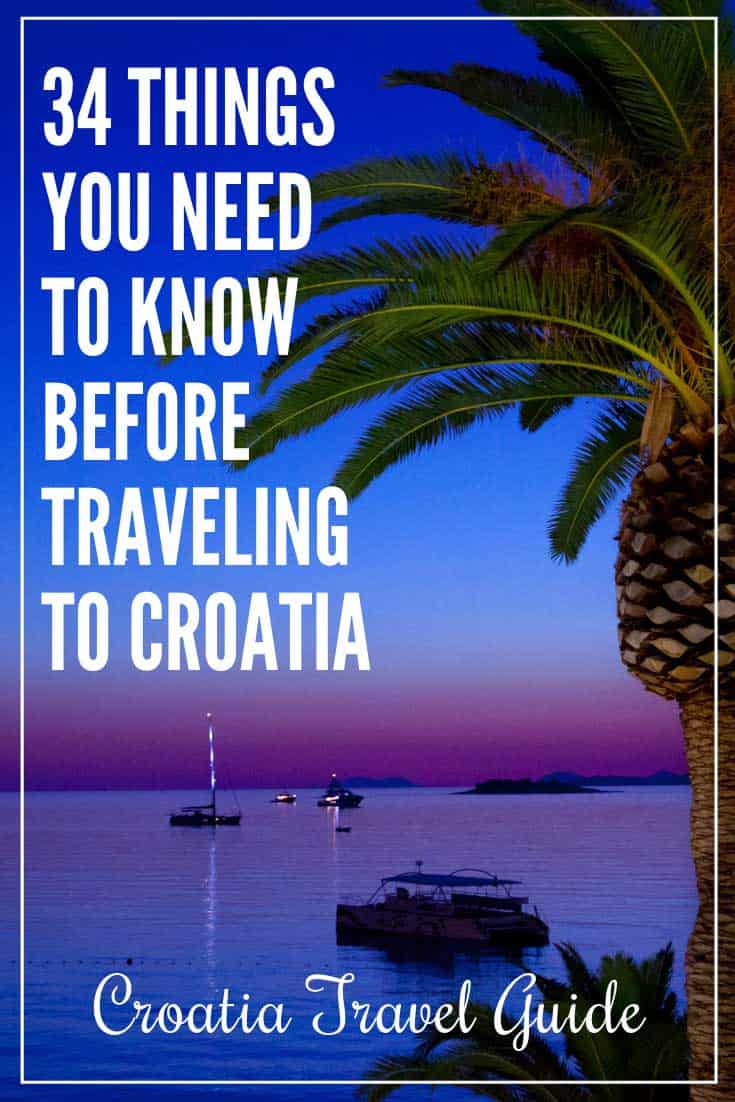
You can also travel to Croatia from other European towns by bus . Bus schedules are a bit harder to search for as many bus companies run the service. However, if you want to travel by bus, we highly recommend using the GetByBus website to check and book intercity buses in Croatia and beyond.
You can also check with a local bus station once you are at your destination and can physically walk there. Getting information over the phone or email can be impractical and expensive (yes, they still use automated phone machines that make you wait forever and charge you a fortune for waiting!).
Find out more here:
- Zagreb Bus Station
- Split Bus Station
- Zadar Bus Station
Train connections to and around Croatia are quite limited, and we generally don’t recommend traveling by train to Croatia. However, if you really have to, you can find more information on the Croatian Railways website .
International ferries connect Croatia and Italy. Directferries’ website is the best place to check ferries schedules and book tickets online. Jadrolinija operates Bari to Dubrovnik, Split to Ancona, Split to Bari, and Zadar to Ancona car ferry lines, while Venezialines passenger ferry connects Porec, Rovinj, and Pula with Venice.
Our favorite way to travel around Europe, and to Croatia as well, is by car . Whether it’s your own car or a rental car , it’s the most convenient way to move around Europe.
Getting around Croatia
The best way to travel around Croatia is by car . Croatia is a small country with great roads and nice little villages , totally worth a detour. The only way to really discover the country is to travel by car. We’ve written a full post about driving in Croatia and car rental in Croatia .
Another excellent way to travel around Croatia is by bus . Buses are modern, fast, affordable, and frequent. The islands and Istria are the only places we wouldn’t recommend bus traveling . For the rest, if you can’t travel by car for whatever reason, hop on the bus and enjoy the ride. Use BookAway to check lines and schedules and to book your bus ticket online.
Ferries are still the most popular and sometimes the only way to get to the islands. The main ferry ports include Rijeka, Zadar, and Split, but ferries also depart from smaller coastal towns like Brsecine, Makarska, Drvenik, Orebic, Ploce, and Prapratno. Jadrolinija is the largest ferry operator in Croatia, and its ferries cover most of the routes. You can also book your ferry tickets for some routes online through the Bookaway website .
Public transportation in bigger towns is reliable and efficient. Split, Rijeka, Zadar, Pula, and Dubrovnik use city buses, while Zagreb has an extensive network of electric trams and city buses. Public transport costs around 2€ per ride.
Taxis are generally pricey (except in Zagreb and Rijeka), but since Uber entered the market in 2015, cab rides have become more affordable. UberX is available in most popular tourist towns like Zagreb, Split, Rovinj, Dubrovnik, Zadar, etc… Uber and Cammeo Taxi are the cheapest taxi options in Croatia. However, both companies also adjust their rates to demand dynamically, and rates generally increase during the main tourist season.
Croatia holiday destinations
One of the most common questions is where to go in Croatia . Many visitors who travel to Croatia for the first time tend to visit the main tourist towns and attractions, like Zagreb, Split, Plitvice, Hvar, and Dubrovnik. However, Croatia has many hidden gems , charming villages , wonderful natural sites , and beautiful beaches .
Where to go depends heavily on the type of traveler you are, the things you want to do , the time you plan to spend in Croatia, and your budget .
We have written extensive travel guides on the following holiday destinations in Croatia:
- Split Travel Guide
- Dubrovnik Travel Guide
- Zagreb Travel Guide
- Plitvice Lakes Travel Guide
- Hvar Island Travel Guide
- Rovinj Travel Guide
- Porec Travel Guide
- Rabac Travel Guide
- Pula Travel Guide
- Brac Island Travel Guide
- Peljesac Peninsula Travel Guide
- Dalmatia Region Travel Guide
- Dubrovnik Region Travel Guide
- Istria Travel Guide
National parks
Croatia is a small country with a surface of just over 56.000 m2. However, due to its geographical location, geomorphological and ecological conditions, and climate, in terms of biodiversity, Croatia is one of the richest countries in Europe.
The nature here is divine: from the Adriatic sea and high-rising mountains to the plains of Slavonia and the rolling hills of Istria and Zagorje.
The country has eight national parks, ten nature parks, and two strict reserves. Almost 10% of the country’s territory is protected. The national parks of Kornati, Brijuni, and Mljet are located on the islands and are characterized by rich marine life. The Risnjak, Northern Velebit, and Paklenica national parks cover mountainous areas. They all feature interesting limestone rocks, meadows, and vast forests.
Plitvice Lakes, Croatia’s most visited national park, and Krka national park are famed for their lakes, streams, rapids, and waterfalls.
Unesco World Heritage Sites
Croatia doesn’t lack cultural and historical sites. Even ten of them made it to the Unesco World Heritage Sites list.
These sites include The Euphrasian Basilica in Porec, St. James Cathedral in Sibenik, the old town of Trogir, Diocletian Palace in Split, Dubrovnik old town , Stari grad planes on the island of Hvar, Plitvice Lakes, the Venetian Works of Defence from the 16th and 17th centuries in Zadar and Sibenik, Stećci Medieval Tombstone Graveyards in Cista Provo and Konavle, and Ancient and Primeval Beech Forests in national parks Paklenica and Northern Velebit.
With the exception of the Plitvice Lakes, all other sights are located along the coast. Here is our list of 10 Unesco World Heritage Sites in Croatia not to be missed.
Accommodation
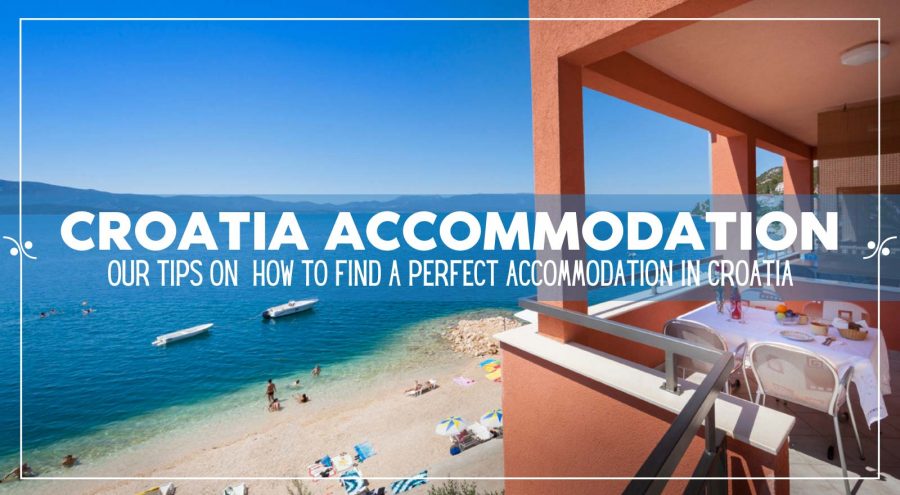
We often get asked about the best type of accommodation in Croatia. For this reason, we’ve written a full post on different types of accommodation in Croatia , with their pros and cons.
Croatia offers a variety of accommodations to choose from: hotels, hostels, apartments, villa rentals, and campsites. Which is right for you depends heavily on your travel style and budget.
Croatia is mostly seen as a 4-star family destination . However, some destinations are fancier than others. This is particularly true for Dubrovnik, Hvar Town, and partially Rovinj.
We’ve written extensive guides on accommodation in the following destinations in Croatia:
- Where to stay in Split
- Where to stay in Dubrovnik
- Accommodation in Zagreb
- Where to stay in Rovinj
- The Best Hotels in Rovinj
- Where to stay in Porec
- Plitvice Lakes Accommodation
- Where to stay in Pula
- The 12 Best Makarska Hotels
Hotels in Croatia
A good choice of 5-star hotels you’ll find in Zagreb, Dubrovnik, Rovinj, and Losinj Island. Although some hotels offer an all-inclusive formula, all-inclusive resorts aren’t popular in Croatia. All-inclusive Croatia mostly refers to a full board meal plan with unlimited selected drinks at mealtimes. Many hotels in Croatia offer a half-board meal plan , and dinner often comes cheap when purchased as a part of a room rate.
Booking.com is by far the most popular website for browsing and booking hotels in Croatia. They offer the most flexible booking policy and offer the most choice of properties. You can also check the hotel’s official website. Sometimes hotels offer special deals available only through their website.
Apartments in Croatia
Many Croatians rent apartments to tourists. Apartments are a good alternative to hotels. They are cheaper, offer more space, and come with a fully-equipped kitchen.
Apartment rentals, just like hotels, need to be licensed and get an official star rating. The most popular websites for apartment rentals in Croatia are Booking.com and Airbnb.
Villas in Croatia
Another popular and emerging type of accommodation is villa rentals . Mostly located off the big tourist resorts, these villas offer peace and quiet, and lots of privacy. Besides, villas come with a pool where you can chill all day long.
Croatia is also a very popular camping destination . There are lots of campsites all along the coast, and just a few of them are in continental Croatia.
Popular campsites in Croatia include Lanterna in Porec , Valkanela in Vrsar, Polari in Rovinj, Park Umag, and Zaton near Zadar. The best place to make yourself familiar with Croatian campsites is the Camping.hr website, an official website of the Croatian Camping Association.
Many of our readers reach out to us with a question about driving in Croatia, road condition, and safety on Croatian roads. Croatian roads are in very good condition. A fairly new multi-lane motorway connects Zagreb to the north and Rijeka to the northwest with Ploce in the south.
Tolls apply on all multi-lane motorways named with the letter A, as well as on some tunnels (eg. Ucka tunnel between Rijeka & Istria), etc. A one-way fee from Zagreb to Split (approx. 400 km) costs 24 € (25 $)*.
Besides motorways, you can also travel on toll-free state roads. These roads are also in good condition, but a single carriageway road, with a single lane for each direction, and some of them, particularly a coastal road D1, are winding.
*prices checked in January 2023
Renting a car
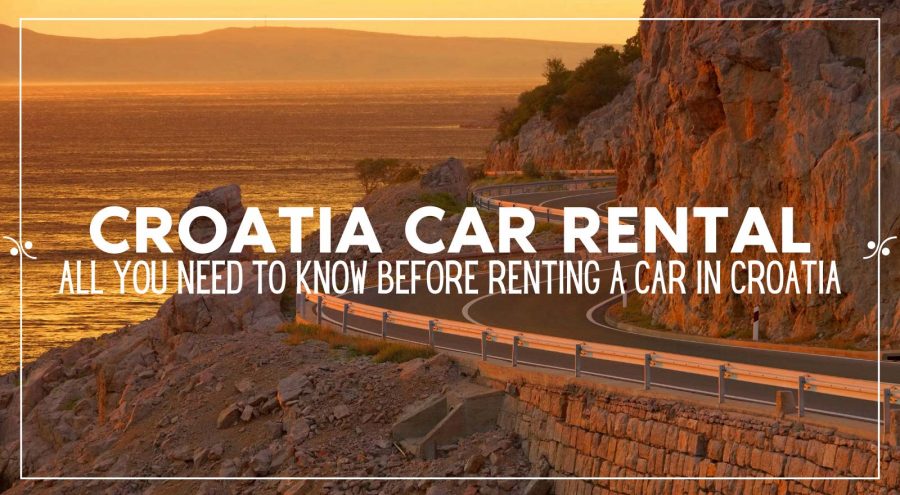
The best way to explore Croatia is by car. And if you don’t travel in your own car, don’t shy away from renting a car in Croatia. You’ll be able to take in the sights; travel off the beaten path; see more in less time, and have the freedom to stop wherever and whenever you feel.
Car rental in Croatia is very seasonal . This simply means that you’ll need to secure your car rental well in advance if you plan on visiting Croatia in July and August. This also means that rental prices increase dramatically in these two summer months. We recommend using Rentalcars.com for your car rental in Croatia.
Tourist registration
All tourists staying in Croatia need to be registered at a local tourist office. And non-EU citizens will also be automatically registered with the police.
This is the reason why during the check-in process at any hotel, private accommodation, or campsite, you’ll be requested to show (and often leave until the next morning) your passport or an ID card.

We love food in Croatia. It’s varied, fresh, local, and tasty. In continental Croatia, people eat lots of meat, while a diet in coastal regions is heavily based on fish, other seafood, and green veggies.
As a traveler, you might also make some false assumptions based on food offered in touristy restaurants along the coast. These restaurants often offer what tourists ask for, and not necessarily typical Croatian dishes.
One of the most popular posts on our blog is our post on must-try Croatian dishes . Make sure to read it so you don’t miss some of the local specialties.
We also give a couple of tips on where to find local, delicious, and cheap eats in Croatia .
And don’t miss our ultimate list of the best places to eat in Croatia . Istrian restaurants rank the highest on this list.
Tap water is safe to drink in Croatia. However, if you still prefer to drink bottled water, bear in mind that bottled water is extremely expensive here. For instance, a 1.5 L bottle of natural water costs around 0.9 € in a supermarket, three times more expensive than in Italy. You can find cheaper bottled water in Lidl, and Eurospin supermarkets.
The legal drinking age in Croatia is 18. Among alcoholic drinks, wines, beer, and spirits are very popular in Croatia.
Drinking usually takes place at cafe bars, serving any kind of drinks, from coffee, and tea, to wine, beer, and any alcoholic drinks. Cafes work all day, opening as early as 6 am, and closing usually around midnight. Nightclubs, pubs, and some bars work until 4 am.
Local wines are good. In the last two decades, many small, family-run wineries have set high standards in the production of quality wines made of indigenous grape varieties, like Malvazija, a dry white wine produced in Istria , or Plavac Mali, a red variety dominating vineyards of the southern Dalmatia .
Croatians also drink lots of beer , but you’ll hardly find an exciting choice of beers here in Croatia (not the case any longer, the craft beer scene in Croatia is now super exciting! ). The most popular mass-produced local beers are Karlovacko and Ozujsko, both light-lager types. In recent years many microbreweries started putting on the market a more appealing craft beer, like San Servolo , LAB, or Zmajska Pivovara .
Spirits are very popular in Croatia, and they come in a variety of flavors. Here they are called rakija . The basic one is most often produced from grapes (called Loza), but then they are flavored with different ingredients. The most popular are travarica (herb brandy), medica (honey brandy), orahovaca (walnut brandy), visnja (cherry brandy), mirta (myrtle brandy), and rogac (carob brandy).
Travel Insurance
Travel insurance covers all kinds of situations if things go wrong: from luggage loss, to trip cancellation, to medical assistance.
If you are an EU citizen then your European Medical Insurance Card covers your basic medical needs and emergency medical care. However, it doesn’t cover emergency transport to your home country.
Non-EU citizens are advised to check with their embassies for what level of medical care they are covered in Croatia, as it heavily depends on the bilateral and reciprocal agreement between the countries.
For other damages like document and baggage loss, loss of belongings, and trip cancellation, you’ll definitely need to purchase travel insurance. There are many travel insurance companies offering different insurance options and packages. You can compare all your options using a website like Travel Insurance Review .
We recommend buying travel insurance from Safety Wing . Available to people from the majority of countries (only sanctioned countries are exempt) it’s designed for all kinds of travelers. And it covers overseas medical, evacuation, baggage, and a range of travel misadventures and delays. And, one child up to 10 years of age is included in an adult’s policy free of charge. You can buy it and claim it online , even after you’ve left home.
Tours and activities

Croatia offers a lot of activities to do for all ages and all year round. The country is rich in history, natural beauty, ancient towns, wonderful architecture, pristine beaches, and rugged mountains.
Foodies will enjoy exploring restaurants in Croatia, especially in Istria, Zagreb, Dubrovnik , and Split . Croatia produces some of the world’s best extra virgin olive oils (if you wonder why you should care, read Tom Mueller’s book Extra Virginity: the sublime and scandalous world of olive oil ). There are lots of places where you can go for an olive oil tasting , and learn how to distinguish the real stuff from the crap. A visit to a winery is a must in Croatia, particularly in Istria.
Tisno on the island of Murter, Novalja on the island of Pag, and the town of Hvar offer 24 h partying for the young and restless.
Outdoor enthusiasts will love Omis, Paklenica, and Cicarija. They all offer an endless choice of adventures to enjoy.
We’ve written a full post on things to do in Croatia . You can also check the Get Your Guide website for a full list of tours and activities in Croatia.
Itineraries
We are often asked to suggest or revise a proposed itinerary for Croatia. So here are a few things to bear in mind when planning your Croatian itinerary.
Although the country is relatively small, it’s long (from Umag in the northwest to Dubrovnik in the south there is over 700 km), and it’s not that quick to travel from north or west to the south.
If you plan to visit Croatia for less than a week , we highly recommend you pick up one destination and stick to it. Do day trips from there , but don’t pretend to visit the entire country in less than a week. Also, in July and August, you need to take into account possible traffic jams, and congestion on the roads, as well as queues for ferries.
If you stay a week or ten days , you can include a few highlights in your itinerary, like Zagreb, Plitvice, Split, and Dubrovnik.
Suggested week itineraries
a | Zagreb – Plitvice Lakes – Split – Hvar – Dubrovnik
b | Dubrovnik – Peljesac Peninsula – Korcula – Split – Zagreb
c | Zagreb – Plitvice Lakes – Istria
Suggested two-week itineraries
a | Zagreb – Opatija – Istria – Plitvice Lakes – Zadar – Krka Waterfalls – Split – Brac Island – Korcula – Peljesac – Dubrovnik
If you prefer to join a group tour, we highly recommend checking tours proposed via Tour Radar. They have a classical coach and boat tours, but they also have a great choice of adventure, cycling, and various themed tours.
Here are a few suggested group tours found on Tour Radar:
Croatia & Adriatic Cruise
This 11-day tour gives you the best of continental Croatia and the Adriatic. The tour starts in Zagreb, and ends in Split, with a visit to 10 other destinations in between. We like that this tour takes you to the Peljesac Peninsula, one of our favorite regions in Croatia. You also get to see Korcula, Hvar, Elafiti Islands and Mljet islands. The small cruise ship can fit 30 passengers in air-conditioned cabins.
Check availability and prices!
Best of Croatia and Slovenia
This 11-day discovery coach tour starts in Zagreb and ends in Dubrovnik. However, it’s packed full of exciting destinations in Croatia, and neighboring Slovenia including Ljubljana, Bled, Rovinj, Opatija, Plitvice, Trogir, Split, and Peljesac peninsula. You will get to see many great destinations in a short period of time, while still having ample time on your own. The tour also includes one special “Be my guest” dinner where you get a chance to experience a traditional meal with a local family.
Croatia Island Hopper from Split
This 8-day island hopping tour operated by G Adventures is one of the most popular tours in Croatia on Tour Radar. The boat tour starts and ends in Dubrovnik with stops in Hvar, Mljet, Korcula, Brac, and Solta.
Cycling the Dalmatian Coast
A small group tour takes you from Split to Dubrovnik in 8 days on your bicycle. The tour provides accommodation, meals, and transportation. You’ll get a chance to test your cycling abilities in Hvar and Korcula Island, along the Peljesac peninsula and Dubrovnik. The tour is intended for all levels of cyclists. The scenery along the route is lovely.

When you think of shopping, Croatia doesn’t necessarily come to mind. However, there are a couple of awesome things to buy in Croatia.
Croatian artisan olive oils are some of the best in the world. Croatian design and concept stores are also making momentum; check the Take Me Home store in Zagreb or Prostoria in Rovinj for some original souvenirs, accessories, unique clothes, bags, and jewelry.
We’ve written a full post on the subject: Croatian souvenirs: fun, cool, and authentic . Don’t forget a high-end tie store – Kravata Croata .
Open markets , where you can buy fresh produce, are popular in Croatia. The largest national supermarket chain is Konzum. Other popular supermarkets in Croatia include Lidl, Kaufland, Plodine, and Spar.
Supermarkets are open throughout the day, Monday to Saturday. On Sunday some shops are open all day, particularly in shopping centers, while downtown shops often close at 1 pm or 3 pm. In summer, along the coast, shops are open seven days a week, and often as late as midnight.
Is Croatia a safe place?
Croatia is a very safe country with very little street crime and almost no violence. However, as everywhere, take care of your belongings, especially when using public transport.
Land mines are still present but in remote areas where tourists rarely visit anyway.
Croatia travel guide: Internet
The Internet in Croatia is widely available. WiFi coverage is pretty good, with many towns offering free wifi hot spots at prominent places in a town. Most of the private accommodations, as well as hotels, and even campsites, offer a free WiFi internet connection.
However, the broadband internet in Croatia isn’t as fast as you are perhaps used to. At least it’s not as fast everywhere in Croatia. In bigger towns, the internet is fast, easily available, and reliable. According to Speedtest.net , Croatia has the 22nd fastest download speed for mobile internet in the whole world. But, the fixed broadband is pretty slow (Croatia takes 89th place on the global scale).
The average internet download speed in Croatia in March 2023 was 71,16 Mbps for mobile, and 45,61 Mbps for fixed broadband.
Roaming charges
Since the summer of 2017, roaming surcharges within EU countries don’t exist longer. This means that, if you are with any EU mobile provider, you will pay the same prices for data, calls, and SMS as you would pay back home.
How free is free? You need to check with your provider what’s the amount of roaming data within the EU. For example, we have a flat rate for internet data in our mobile phone rate package. But, when we spent two months in Spain in the winter of 2022, we realized that we have only 10 GB of data free of charge in other EU countries.
So while the roaming data is free in the EU, the free data isn’t unlimited. Anyways, 10 GB is pretty enough, unless you are binge-watching Netflix shows for hours at times. I hope you don’t do that on vacation!
However, roaming charges for other countries are still pretty high. You can purchase some of the mobile operators’ packages either in your home country or in Croatia.
In Croatia, Telemach sells 10-days unlimited surfing for less than 11 € while T-com sells 7-days unlimited surfing for 11€ . It includes nano, micro, or SMS card. You can buy these packages at gas stations, newsstands, T-com or Telemach centers, and Croatian post offices.
The Airalo eSim packages are a good alternative to local SIM providers. We always use Airalo when traveling abroad.
Is Croatia part of the EU & Schengen visa regiment
As of January 1, 2023, Croatia is a member of Schengen, and thus it is a part of the Schengen visa regiment. This means that there aren’t border or customs controls between Croatia and other Schengen member countries for people crossing the borders by road, rail, or water. However, border and customs controls at the airports will stay in place until March 2023.
If you have a valid Schengen visa, you don’t need a separate visa to visit Croatia and vice versa. This also means that visiting Croatia and the days spent here will count toward 90 days maximum stay within 180 days for your Schengen visa.
When crossing into and out of the non-EU, and non-Schengen countries, you’ll still need to show your documents at the border, and vice versa. These include Bosnia and Herzegovina, Serbia, and Montenegro.
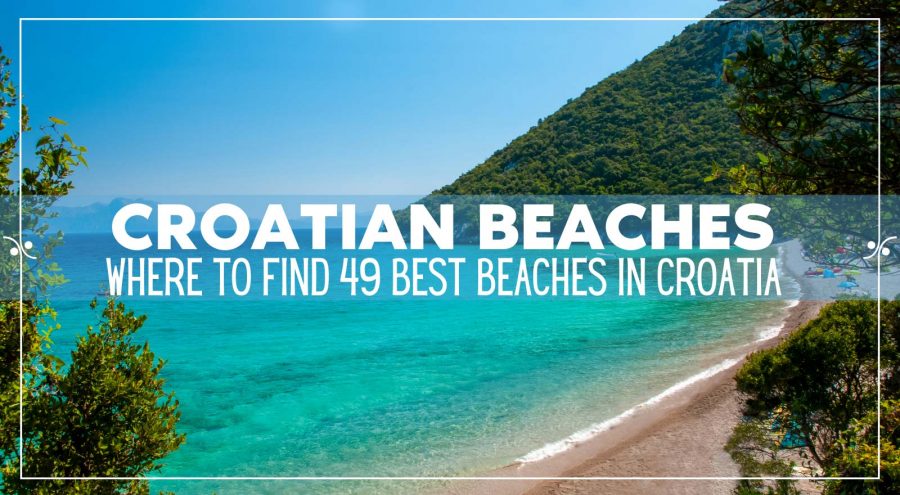
The sea and sun are still two main reasons for so many people to visit Croatia. Croatia has over 6.000 km of coastline and over 1.000 islands. The two most popular coastal regions are Istria to the north and Dalmatia to the south.
The Croatian coast is mostly rocky with pebble beaches mostly formed in coves and bays. Makarska Riviera, located in central Dalmatia, offers the most beautiful beaches in all of Croatia . Perfectly round and small pebbles that feel almost like sand but that don’t stick on you forever.
The sea is limpid and clear, you can often see the seabed from far away. My in-laws have a seafront property in Komarna , in southern Dalmatia, and I can see the fish swim in the sea from the third floor of their house.
So, if you search for that perfect sandy beach, you might get disappointed with the beaches in Croatia. Although there are some sandy beaches here too, they are simply not a Croatian thing.
In Istria, the coast is a bit rougher than in Dalmatia, and pebbles are rare to find. However, the beaches here feel less crowded, due to the well-preserved coastline.
Parking in Croatia
If you travel to and around Croatia by car, you might wonder about the parking situation in Croatia. Generally speaking the majority of hotels and private accommodations offer a parking spot free of charge.
However, bear in mind that city centers are usually car-free zones or have limited car traffic. If your accommodation is within the city center enquire about parking before booking.
There are three types of parking: garage parking, open-air parking lots, and street parking. Expect to pay around 1.1 € to 1.6 € per hour in town centers. However, some parking is more expensive, like parking at Riva in Split which cost 4 € an hour; then, in Dubrovnik, where you will pay for an hour of parking in Zone 0 as much as 10 €.
We talk more in-depth about parking in our destination guides . Don’t forget to check them once you decide on your destination .
Do people speak English in Croatia?
You don’t speak Croatian? No worries, most Croatians speak at least some English, and many speak at least another foreign language. Besides English, German and Italian are the most widely spoken languages in Croatia.
Is Croatia expensive to travel to?
Croatia isn’t a cheap place to visit. It’s more expensive than the neighboring countries, like Bosnia & Herzegovina, Serbia, or Hungary.
Generally speaking, continental Croatia and Zagreb, in particular, keep prices moderate to, I would dare to say, even cheap. However, the coast is mostly expensive, and the prices tend to increase year after year.
That said, if you travel on a tight budget, you can still keep it under control. Stay away from top destinations (visit them but sleep somewhere else), come in the off-season, explore places off-the-beaten-path, forget hotels, choose instead an apartment with a fully-equipped kitchen and prepare your own meals, ask locals for good value restaurants, etc.
Check our budget tips for traveling in Croatia , and also a post on the total Croatia trip cost .
Tipping in Croatia
People often ask us what’s tipping etiquette in Croatia. In short, tipping isn’t necessary but it is widely appreciated and accepted.
The majority of Croatians, in bars and restaurants, simply round up the bill. We on the other hand, out of habit, always leave around 10%, and only if we are satisfied with the service.
If you are taking a group bus tour, someone will usually collect the tips for the driver and the guide at the end of the tour. Here, usually, people chip in on what they feel is appropriate.
What time zone Croatia is in?
Croatia belongs to the Central European Time Zone, meaning it is one hour ahead of GMT (Greenwich Mean Time), and two hours ahead of GMT when daylight saving time is observed.
Daylight saving time makes us move our watches one hour ahead. It takes place from the last Sunday in March until the last Sunday in October.
Find here the time differences between some major towns when compared to Croatia:
- Barcelona: 0
- London: – 1 hour
- Montreal: – 6 hours
- New York City: -6 hours
- L.A.: -9 hours
- Chicago: -7 hours
- Tokyo: +7 hours
- Sydney: +8 hours
If you are traveling from overseas, you will certainly experience jet lag when visiting Croatia. You can check this no-jet lag homeopathic remedy to ease your symptoms.
How much is VAT in Croatia and is it refundable?
At the moment, VAT in Croatia is 25% for the majority of products. If you are a foreigner without permanent or temporary residence in Croatia, you can ask for a tax refund for all purchases above 100 €.
Ask the salesperson for the tax-free form at the moment of purchase. Fill it up, get it stamped right there, and then again at the airport, or at the border by a customs officer. You have six months from the purchase date to claim your VAT return by mailing it back to the shop where you originally bought the item.
Another way to achieve a VAT tax refund is to look for shops that are part of the Global Blue Tax-Free service . They all have a sign displayed in the window along with the working hours, and credit cards that they accept. The procedure is similar (fill up the tax-free form and get it stamped at the shop, and at the airport), but the refund is quicker and can be obtained already at the airport, in Global Blue’s office.
Croatia plugs, adapters, and converters
Croatia uses 220V, 50 Hz frequency, and standard European type C & F plugs. Both are similar plugs with two round prongs with 19 mm between the two.
If the plugs of your devices are different, you will certainly need an adapter in order to charge them. You can find one here.
While adapters will help you use your plugs in Croatia, converters will help transform voltages from higher to smaller or vice versa. If you need a converter you can easily buy one on Amazon .
Recommended travel guides
- Fodor’s Croatia Travel Guide (we are co-authors!).
- Lonely Planet Croatia Travel Guide
- Rick Steves Croatia & Slovenia
Further reading from our Croatia travel guide
- Croatia Travel Guide: Things To Do In Croatia
- Ultimate Guide To Accommodation In Croatia
- Packing List For Vacation In Croatia
- How To Choose Your Destination In Croatia
- Where to go in Croatia: best places to visit in Croatia
- Car Rental In Croatia
- Driving In Croatia
- Cost of Travel To Croatia
- Croatia On Budget: Money-saving Tips
- Outdoor Activities in Croatia
- 49 Awesome Beaches In Croatia
- Snorkeling In Croatia
- White Water Rafting In Croatia
- 20 Must-Try Foods In Croatia
We hope you’ve found our Croatia Travel Guide useful. Is there anything else you’d like to know? Let us know in the comments below.
Frankaboutcroatia.com is a participant in the Amazon Services LLC Associates Program, an affiliate advertising program designed to provide a means for sites to earn advertising fees by advertising and linking to Amazon.com and affiliated sites. This post might also contain affiliate links to other sites, like accommodation or activities. And if you purchase anything using these links, we earn a little commission with no extra costs for you. Thank you for supporting our blog! Read full disclaimer here.
Home / Croatia Travel Tips / Croatia Travel Guide: Things To Know Before Traveling To Croatia
48 thoughts on “Croatia Travel Guide: Things To Know Before Traveling To Croatia”
Love your blog. A lot of useful info.
We’re thinking of coming in mid-October to November 4. Will tourist sites still be open in that first week of November?
Thanks for your input.
I am Croatian and I must say, epic post!
Hi we plan to travel to Croatia in July 2020. I am trying to convince my husband to rent a car but he is worried about driving in a foreign country. Can you give any opinion on this topic? I am more worried about the inconsistency of travelling by train and having to wait and plan with the transportation schedules, as well as carrying luggage everywhere.
Hi Marcia, this is the exact reason why we suggest that you take your charges in Kuna. Because your credit card doesn’t charge you a transaction fee. If you take it in your home country, then Croatian bank will charge the transaction fee, or rather they will use the less favorable exchange rate, so they make money. Just keep it in the local currency, even more so if your credit card doesn’t charge these fees. Hope this helps.
You stated that it is probably best to request credit charges be made in kuna, rather than US currency. If my credit card does not charge a foreign transaction fee, would that still be true?
Firstly, congratulations on your brilliant web site, so helpful to first time visitors to Croatia. We are staying on Korcula at the end of September, would you recommend booking the ferry, and if so which is the best web site to use?
It all depends. Zagreb is ok for a day or two, Split for two or three, the same goes for Dubrovnik, or Rovinj.
Thanks for all the info. We are coming from Canada for a 10 day stay beginning of July. We fly in & out of Zagreb but want to see Split & go up north for a bit too to see some family birthplaces. How much time do you recommend for each city stay & absolute must sees while we are there?
Epic post Frank! I’ve spent the last couple of summers sailing around Croatia and think it’s incredible. Favorite island is most probably Kos. Have some great memories of playing cricket with some of the locals. Cant wait to get back!
What is the best option to travel from Zagreb to Venice
This was amazing and super helpful! For first timers going to Croatia (about a week) where do you recommend going? Was planning for a July trip, but your post sort of scared me to be mentally prepared ha!
Do you ever work with readers to come up with an itinerary?
This was super helpful! Thanks!
Great info…thank you very much. My Bride and I will be in Croatia from Sep 11 to Sep 20. We will arriving in Dubrovnik and leaving from Zagreb. We are planing to stay 3 days in Dubrovnik, 3 in Split and 2 in Zagreb. Would you recommend any changes to this and what places around those three cities are a must? We will have a car. We love waterfronts, small (Mom & Pop) licensed restaurants, some beach time and sightseeing. Any suggestions would be appreciated. Mário & Fatima Sousa…….Mississauga, Canada
Hi Frank! Thank you for all of the info. I am a bit overwhelmed. My husband, 2 adult daughters and I are planning our trip to Croatia in late May/early June 2019 for a week to 10 days. We love adventures! What itinerary would you suggest?
Great info, thank you. We are planning our trip for Sept/Oct 2019, touring around Croatia and neighboring countries for 2 weeks. Planning on staying just outside of Zagreb, Split and Dubrovnik. We are travelling from Canada, renting a car and booking Apartments and BnB’s. Wondering if there would be any significant differences between September and October for weather, costs, tourism, crowds, etc. Thanks in advance.
Your blog is really helpful.
We are from India and we are planning to visit croatia in the last week of february, 2019. And we are majorly looking to cover North (Alps, Gorski Kotar) and South (the beaches and other popular places).
Since we are not fully aware of the weather conditions in Feb, I wanted to ask whether it is decent enough to travel in feb? without any complications brought in by weather?
I am planning a week-long trip to Croatia in September with 8 young adult family members. Is it best to go from city to city staying in a hotel, rent a villa one place and do day trips or rent a boat and go down the coast? Amy
In Septemeber everything should still be open. No worries.
I always go with 10% when in restaurants. As for the rest, you give what you feel. Normally, you collect from the entire group and you give it at the end of trip if you were happy with the service. I am not aware that there is a tipping rule for drivers and guides as for how much should you tip. You basically tip what you feel they deserve.
There is plenty things for kids to do. If I knew where exactly you go, I could have provided more info
Porec, Rovinj, Bol, Brela
thanks for sharing, Lynn! Great clip, it shows well what to expect. However, most of the video is made in the northern part of the road, between Rijeka and Zadar.
Thanks for reading, May! Hope you had a great time in Croatia.
Haven’t been there, Kass. Sorry!
great! let us know if we can help with anything
Have fun, and drop us a line if you have a question
You can stay in Zagreb for a day, Plitvice either for a day or in transit from Zagreb to Split, Hvar for 2-3 days if you want to visit the entire island; otherwise book an island tour from Split. So if you only want to stay in two or three of these towns, make it Zagreb, SPlit and Dubrovnik, because they are best located to do day trips elsewhere.
Thanks for all the great advice. For a two week holiday, can you suggest which towns to stay in? I’d love to visit Zagreb, Plitvice, KrKra, Split, Hvar and Dubrovnik. I’d like to stay in two or three places and do the rest from there.
Great blog. Thanks for the info. We – fellow Canadians – plan to spend Jan to Mar 2019 in Croatia, basically in the Trogir area. We’d appreciate any further thoughts you’d wish to pass on.
I would like to know about tipping in Croatia for bus drivers and tour guides. Our travel club is bring a group to Croatia in May 2019.
Hi..We are planning to visit next year..Have children who will be agedelivered 11 and 13..are there things for them to do?
Hi there. Thanks for all the information. So useful! Question re timing. I would head over in the September holidays to beat the crowds but want to check most of the bars etc are still open all year round. Sometimes in countries like Japan where we lived for 8 years they are very strict on seasons and so going outside (even slightly) means u go to a great beach bar only to find it closed. Thanks
Thank you for your blog and the very valuable information you provide. My family (a total of 16 of us) are visiting Croatia at the end of this month. 3 of us are from BC Canada so it has been even more exciting to hear what you have to share.
Hello Just found your blog and its just what i,m after, so much information. I am visiting Croatia next month with my son, we are staying near Trogir. I was going to take kuna but you say most places take Euros? I have rented a car and plan to travel around a bit. Thanks Karl
I am watching the World Cup finaland cheering for the team! I decided to visit the beautiful country in 2019 with my family. Look forward to it!
We’re going in September to visit Lokve, where my husband’s people are from. Have you been there? Can you tell us anything about it? Thanks!
We are currently in Croatia and it is just beautiful. The water shades from turquoise to deep blue and the rocky hills provide a beautiful contrast in the landscape.
We stayed rather in the south and we took the E65 coastal road. If you have time to spare and you are not in a hurry, I recommend this road compared to the highway. I wish I could describe it but I will never be able to narrate the full picture, so I made a short clip on our journey that I wish to share.
It is on YouTube — https://www.youtube.com/watch?v=AKEiQI4NOos&t=60s
Hello, very nice blog of yours! I was wondering what area you would suggest a family of four to stay in. A place that is child friendly and filled with entertainment is something I had in mind, but would like to know what places wold exactly fit my needs. Thank you!
Hi there, me and my husband have been trawling the internet looking for ideas of where to visit with our two children (2 & 9 years) and we’ve stumbled upon your AMAZING site. It’s literally a godsend!! Please could i pick your brains and ask where you would best recommend? We love the beach, history and lovely food!! Any advice would be so gratefully recived!
Hi, loving the information on your website. We are coming to Croatia for 2 weeks from the 6th of September, and are wondering if you think we need to pre-book accommodation or should we be able to book a few days in advance? Cheers, Karen
Hi Frank, just found your website and love it. My husband and I will be vacationing from US to Croatia from Sept. 5 to 19. First time. Don’t plan on seeing the entire country on this visit but would like a few highlights. We will land in Split and leave from Dubrovnik. Are there any and can you recommend a private tour guide company?
Hi – so glad I stumbled upon your wonderful post ! We are thinking of travelling to valamar island in July . I am concerned it will be very busy and hugely commercial ? X
Hi Colleen, if you would like to receive our newsletter, please sign up for it through the website. Let us know if we can help with anything regarding your upcoming trip to Croatia.
Frank, Please add me to your list. I plan to visit this wonderful country in 2019. Colleen
Hi. Will be in Croatia July 17-31. We’d love to book a 3-5 day sailing or yacht trip around the islands. Possibly start and end in Split. Do you have any recommendations?
I have been to Croatia with my mum last year and this charming country won our hearts, Frank! I still haven’t crossed Dubrovnik off my bucket list, but your post was truly inspiring. I guess now I have plenty of more reasons to explore magnificent Croatia!
Really enjoy your detailed travel guide! My gf and I (early/mid 20’s) are traveling to Dubrovnik, Croatia next week and we plan to rent a car for about 10-11 days. Our plan is do explore the coast of Croatia, spend some time in several cities and eventually make our way to Slovenia where we’ll return the car.
Do you have any advice with regard to having the “luggage” of the car, and doing trips to islands and etc.? We want the car to have the flexibility, but we may not use it EVERY day. We also don’t want to try and pack too much into the week and a half we are in Croatia. There is the potential we stay longer, but we thought it may be neat to make our way up to Slovenia, spend a few days there then make our way to Austria for a week.
Any thoughts would be greatly appreciated.
Hi guys, we love your blog and passion for Croatia. We are a family run business, that runs 3 adventure bases in Croatia. We only employ local staff and follow green responsible policies. We would love to talk about working with you. Whats your best mobile number?
Leave a Comment

Croatia Travel Guide – Everything You Need To Know About Traveling To Croatia
Planning a trip to Croatia, but not sure where to start? This Croatia travel guide is perfect for you!
Located on the Adriatic Sea, at the crossroads of Central and Southeast Europe, you will find the beautiful country of Croatia. In recent years Croatia has become an increasingly popular tourist destination, and it’s easy to see why.
In Croatia you will find incredibly well preserved medieval towns, pristine beaches and stunning natural landscapes. It’s the perfect destination for anyone looking for a varied and well-rounded holiday.
I visited Croatia three times, and always find myself going back. Whether you’re looking for your next party holiday, for a relaxing beach vacation or an adventurous escape, Croatia won’t disappoint you.
In this Croatia travel guide I have put together all the resources you need to plan the perfect Croatia trip. Here you will find all my blog posts about traveling to Croatia, as well as some additional useful information.
Including sample itineraries, detailed guides about every city, reviews on the best tours and hotels, packing suggestions and much more! I hope all this information will help you travel to Croatia and have the best time there.
So without further ado, let’s dive into my Croatia travel guide, and start planning your dream Croatia trip!
- 1 Croatia at a glance
- 2 My Croatia 10-day itinerary
- 3.1 Dubrovnik
- 4 Travel insurance for your Croatia trip
- 5 Where to stay in Croatia
- 6 Best time to travel to Croatia
- 7 How to travel around Croatia
- 8 Estimated cost of traveling to Croatia
- 9 What to pack for a Croatia trip
- 10 Where to book your Croatia trip
- 11 Croatia guides, books & resources to check out before you travel

The Old Town in Dubrovnik, Croatia
Croatia at a glance
Where is Croatia? Croatia is in Europe on the Adriatic Sea.
Currency: Croatian Kuna (HRK) – see the latest exchange rate here .
Capital City: Zagreb.
Electrical plugs in Croatia: Types C&F (the ones you find throughout most of Europe) – I recommend an international adapter so you can use it on multiple trips.
Visa requirements: Croatia is in the EU but is not part of Schengen. Most passport holders won’t need to apply for visas before travelling to Croatia. Check the visa requirements for your nationality here .

Enjoying Diocletian’s Palace at 6am without the crowds
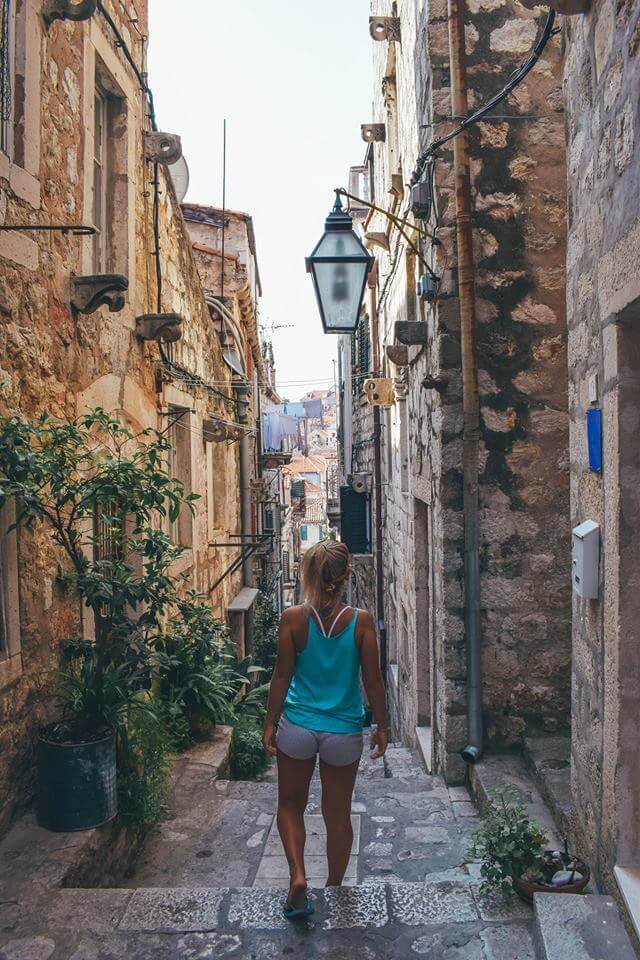
Exploring the side streets of the medieval Old Town of Dubrovnik

My Croatia 10-day itinerary
If you’re looking for suggestions for how to spend 10 days in Croatia, check out my ultimate Croatia itinerary here !
Best places to visit in Croatia
Let’s start with the basics, and discover the must-see places in Croatia that you absolutely cannot miss!

KRKA NATIONAL PARK

PLITVICE LAKES NATIONAL PARK

HVAR ISLAND

ELAPHITI ISLANDS

Dubrovnik is one of my favourite places in Croatia. The Old Town of Dubrovnik is simply stunning, with its white brick walls, red rooftops and towering walls that surround it.
Walking through the streets of Dubrovnik feels like stepping back in time. There are a huge variety of Dubrovnik tours that you can do to make the most of your time in this beautiful city.
From Old Town walking tours to island hopping tours, here are some of the highlights you shouldn’t miss.

GAME OF THRONES FILMING LOCATIONS TOUR

KAYAK SUNSET TOUR

OLD TOWN WALKING TOUR
ELAPHITI ISLANDS BOAT TOUR
After Dubrovnik, Split is without a doubt the next most popular Croatian destination. Split is home to Diocletian’s Palace, beautiful beaches and an old town with timeless streets at every corner.
Split is also a popular destination thanks to its proximity to other must-see Croatian sights. From Split you can go on epic day trips to the famous waterfalls of Krka or Plitvice National Parks, as well as the iconic beaches of Hvar Island.
Simply join one of the tours below to make the most of your time in Split and surroundings!

KRKA NATIONAL PARK FULL-DAY EXPERIENCE

HVAR, VIS & BLUE CAVE FULL-DAY BOAT TRIP

SPLIT CITY WALKING TOUR – DIOCLETIAN’S PALACE & MARJAN HILL
PLITVICE LAKES FULL-DAY TOUR
If you want to discover Croatia off-the-beaten track, then you have to add Omis to your bucket list. This small town is a short drive away from Split, and yet it doesn’t receive anywhere near the attention of its popular neighbour.
Omis has a gorgeous old town centre, a pristine turquoise beach on its doorstep, and a spectacular canyon right next to it. Omis sits on the mouth of the Cetina River, and is surrounded by the scenic mountains of the Cetina canyon.
If you love adventurous activities, you will love visiting Omis. From here you can go hiking, zip-lining, rafting and even canyoning! Simply check out one of the tours below to live these thrilling experiences!

ZIP-LINE OVER THE CETINA CANYON!

RAFTING ADVENTURE IN THE CETINA RIVER

VIA FERRATA HIKING TOUR

CANYONING EXPERIENCE IN THE CETINA RIVER
Zagreb is the capital of Croatia, and a must-see for many travellers. I’ll admit I haven’t been to Zagreb, as I visited Croatia in summer and wanted to discover the Croatian coast.
In Zagreb you will have the opportunity to discover its unique 18 th and 19 th -century Austro-Hungarian architecture, as well as the famous twin spires of the Gothic cathedral.
There are also lots of cute pedestrian streets, lined with cafes, shops and museums. Joining one of these popular tours will give you the opportunity to fully experience this gorgeous city.

The twin spires of the Zagreb Cathedral and Zagreb skyline at sunset – Photo by Nina Varga on Scopio
Travel insurance for your Croatia trip
After ending up hospitalised in a private clinic in Tenerife for two nights and having to pay for it out of pocket (spoiler alert; it wasn’t cheap), I always recommend purchasing travel insurance for your trips.
Since then I always get travel insurance with HeyMondo , and can highly recommend them. HeyMondo has a very comprehensive Covid-19 policy, on top of the usual trip cancellation and medical assistance.
You might not end up using it, but at least you will visit Croatia with a carefree mind, without worrying of having to pay out of pocket for any complications that might arise.
As a Greta’s Travels reader, you also get 5% off your HeyMondo insurance if you purchase it through this link !
Click here to purchase your travel insurance for your trip to Croatia!

Zip-lining in the Cetina Canyon
Where to stay in Croatia
If you’re looking for the best places to stay in each city of your Croatia trip, don’t worry, I’ve got you covered! Discover my top accommodation suggestions for every budget in the detailed guides below!

WHERE TO STAY IN SPLIT

WHERE TO STAY IN DUBROVNIK

BEST PLACES TO STAY IN HVAR ISLAND
WHERE TO STAY IN ZAGREB
Best time to travel to Croatia
The best time to visit Croatia ultimately depends on the experience you’re looking for. Summer is high season in Croatia. From June to September you can find warm and sunny weather, but also quite large crowds and high prices.
In spring (March to May) and autumn (September and October) you will still find fairly nice weather, with considerably less tourists. It won’t quite be beach weather, but you can explore the epic waterfalls and national parks of Croatia without the crowds.
Winter is low season in Croatia. Some travellers prefer it as the prices drop considerably and you might often be the only tourist in a location. However that also means many attractions might be closed.
Personally, I like travelling in shoulder season (late spring and early autumn). That means the crowds won’t be as huge as peak summer, so that you can enjoy the gorgeous sights with fairly good weather and a cheaper price.

Exploring the Old Town walls in Dubrovnik, Croatia

Admiring Skradinski Buk falls in Krka National Park
How to travel around Croatia
There isn’t one single best way to travel around Croatia. It ultimately depends on your itinerary and how long you plan to spend on the road.
For example, if you’re planning to base yourself in Split and just go on day trips from there, you won’t need to rent a car. You’ll easily be able to get everywhere with public transport or organised tours.
If you want to road trip across the whole country then renting a car will give you the most flexibility, both over your itinerary and timings.
Personally we only rented a car once we reached Hvar, so that we could freely drive around the island and explore all the hidden beaches. To travel from Dubrovnik to Split we took a FlixBus, which is a very fast and cheap bus service.

The car we rented in the brief afternoon we had it, with the beautiful coastline of Hvar behind
Estimated cost of traveling to Croatia
I have to admit that on my last trip to Croatia I was surprised at how much more expensive it had become compared to my first visit. The first time I visited I found it fairly cheap, whilst on my last trip it was much more expensive.
While it’s definitely not as expensive as some luxury destinations around the world, it still sits on the average price range for a European holiday.
On a trip to Croatia you can expect to spend anywhere between 30 to 150 EUR a day, depending on your travel style and interests.
Last time I was there (September 2017) we spent on average anywhere between 100 to 250 HRK for a nice sit down meal with alcohol, and between 20 and 50 HRK for a more on-the-go sandwich, wrap or pizza.
Accommodation ranges from 20 – 30 EUR per night for a bed in a hostel dorm, or between 50 and 100 EUR for an apartment, and can go over 100 EUR for a nice hotel.
When it comes to activities it will vary massively depending on what you choose to do. Some activities (eg. a city walking tour) you can do alone and save a bit of money, whilst others (eg. zipline or island hopping) are worth paying for to ensure you have a relaxing time.
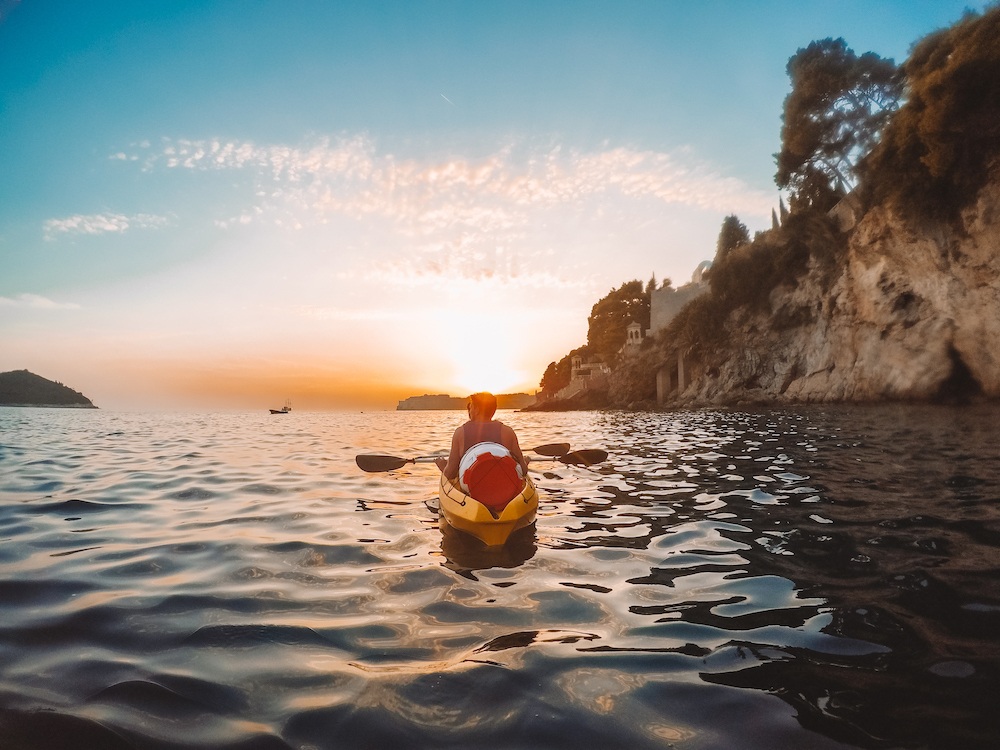
Kayak sunset tour in Dubrovnik, Croatia

We went on a sunset stand up paddling tour while in Split
What to pack for a Croatia trip
Besides your usual clothes and travel essentials , here are some items you don’t want to forget for your trip to Croatia, regardless of the season!
Swimsuit & sun block – I’m putting these two together as you would only need them if you’re visiting Croatia in summer. The sun can be pretty strong in the summer months, so make sure you’re prepared.
Water bottle – I love steel water bottles because they keep your water cold, reduce plastic consumption and save you money in the long run, it’s a win-win all round!
Money belt – I always travel with a money belt, and while I never personally felt unsafe in Croatia, petty theft is common in tourist areas all over the world. Better to be safe than sorry!
Comfortable walking shoes – Regardless of the season, make sure to pack comfortable shoes so you can walk all around the beautiful old towns of Croatia without hurting your feet!
Packing cubes – You’ll need these especially if you’re planning an on the road Croatia trip. That way you can easily pack all your things and keep them tidy every time you change destination.

View over Hear from the top of the fort
Where to book your Croatia trip
If you’re not sure what websites are best to book your Croatia trip, here are my top suggestions. These are the online platforms and travel resources I personally use for every trip I plan.
Skyscanner is my favourite flight search engine. They collate lots of different airlines and will show you the cheapest flight combinations. You then have the option to buy on different platforms or from the airline’s own website.
Booking.com is the first place I check when searching for accommodation. They have a wide selection of accommodation types, so whether you’re looking for a fancy resort, a bed & breakfast, or an apartment, they have the functionality of filtering by all these choices and many more (eg. price, star rating etc) so that you can find exactly the type of property you want.
If I want to stay in a hostel, I head straight for Hostelworld . I prefer it for hostel bookings as their reviews tend to be more detailed and it has more of a community feel.
GetYourGuide is the first tour booking platform I check. They sell a huge variety of tours everywhere in the world and have a very flexible cancellation policy (up to 24 hours before the tour). You can compare prices between similar tours and see the reviews left by previous tour participants.
Viator is another great place to book your tours. Similarly to GYG you can filter by ratings, prices and types of tours.
HeyMondo sell tailor made travel insurance, and they are committed to offering the best value for money and support for your specific trip. Besides the usual cancellation, medical expenses, luggage coverage and general travel insurance services, Heymondo also has a 24/7 doctor chat and instant assistance through their app.
Amazon sell pretty much everything. They also offer very competitive delivery prices and windows. If you realise the day before a flight that you’re missing something, Amazon can probably get it delivered to you on time.
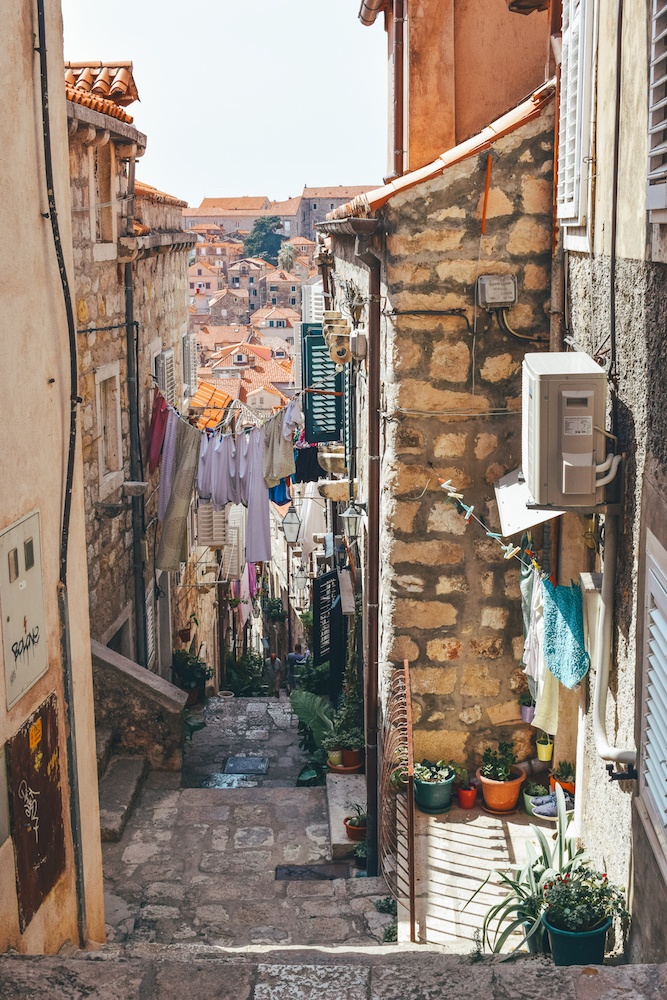
Wandering the streets of the Old Town of Dubrovnik, Croatia
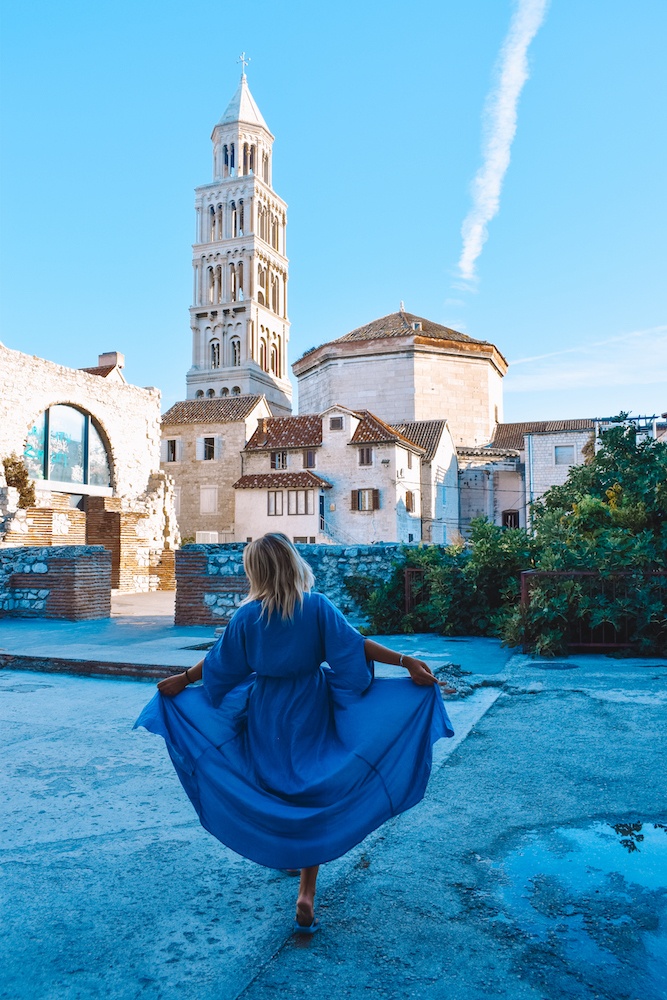
Exploring the Old Town of Split, Croatia
Croatia guides, books & resources to check out before you travel
Last thing before you go! Before heading off to Croatia, you might want to grab one of these interesting reads. Some are to help you learn more about the country’s history, others to help with your travel planning!
Lonely Planet Croatia (Travel Guide) – A classic guidebook for anyone who wants lots of information and details about Croatia.
A Traveller’s History of Croatia – If you want a guide that goes beyond the classic restaurants, hotels and tourist highlights, this is a great option.
“Running Away To Home: Our Family’s Journey to Croatia in Search of Who We Are, Where We Came From, and What Really Matters” by Jennifer Wilson – If you’re like me and prefer reading stories to guidebooks, you will enjoy this book. This award winning book is a great read for anyone who is searching for a more personal and engaging story about Croatia

View over the rooftops of Dubrovnik from the Old Town walls
Final thoughts on traveling to Croatia
There you have it, the ultimate Croatia travel guide! Have you been to Croatia before? How did you find it? I hope you find my detailed travel guide to Croatia useful in planning your trip!
I tried to include answers to every possible question that you might have when planning your Croatia trip. I know these are some of the questions I had myself before first travelling there.
If you want more information on a specific city or tour, simply click through to my detailed Croatia guides! If you have any questions about traveling to Croatia just let me know in the comments below, I’m always happy to help!
Enjoyed reading my Croatia travel guide? Pin it!


Welcome to the Visit Croatia website!
Online since 1998, we’re the top resource for all travel-related information on Croatia…and a little bit more besides! If you need assistance with organising a holiday, simply email us and we’d be more than happy to help.
Whether you’re here to gather some info for your holiday, research areas, towns or attractions such as Istria , Dubrovnik , Split , the Plitvice Lakes , the gorgeous Croatian islands , how to get to the country or if you want to pick up a bit of the Croatian language – it’s all here.
Croatia travel planning help
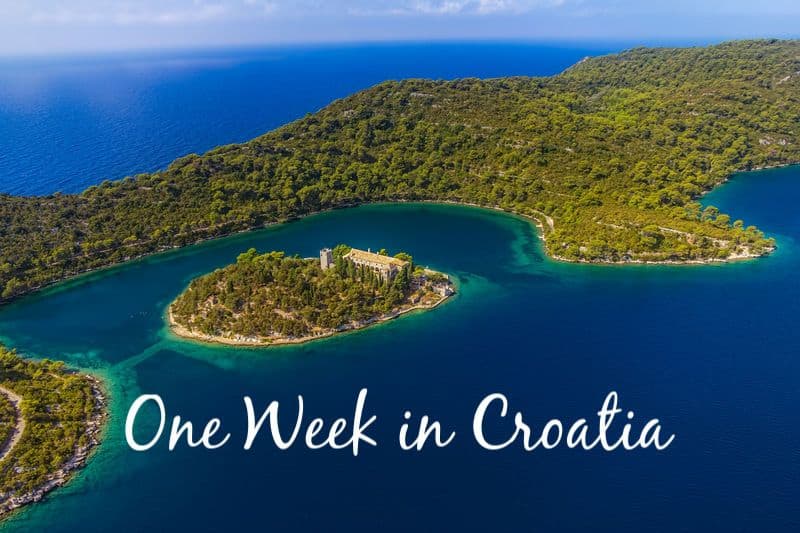
Book Tours in Croatia
Recent blog posts.

Spotlight on: Cathedral of St James, Sibenik

Best Package Holidays to Croatia 2024

Burger Fest heads to Dubrovnik

Sonus 2024 reveals more headliners, back-to-back sets and stage breakdowns

BeThrifty Zagreb Vintage Kilo Sale, 6th & 7th July 2024

LMF Festival to hit Zagreb in early June

visitcroatia
A guide for travellers to the beautiful country of Croatia! Check out our highlights of Croatia here, as well as some gorgeous images taken by others.

Most popular pages on Visit Croatia
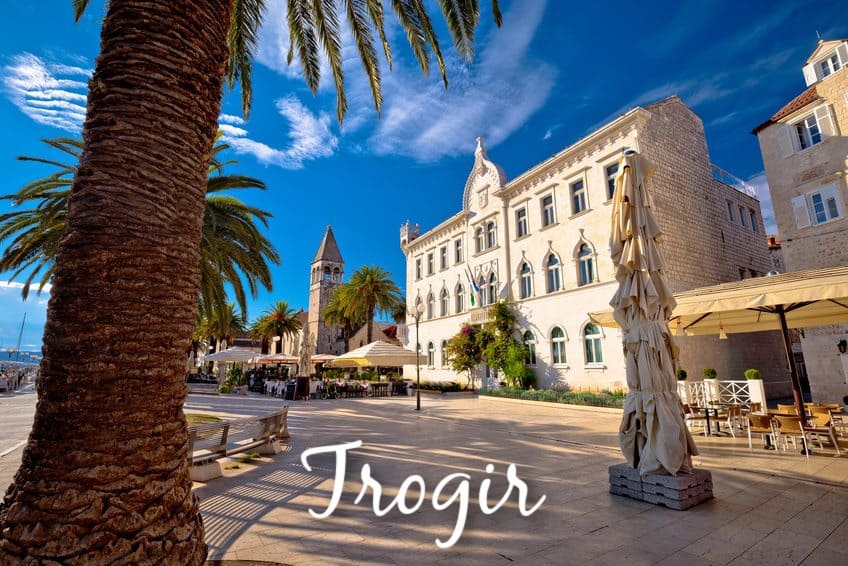
More on Visit Croatia
About Visit Croatia
Contact Visit Croatia
Buy us a coffee!
Cookie Policy
Privacy Policy
Updated daily
New & Updated on Visit Croatia
Stari Grad Obonjan Bol Porec Two Days in Zagreb Slano How to do Croatia on a Budget Two Days in Split Nin Campsites in Croatia Shopping in Zagreb City Break in Croatia Two Days in Pula Family Holidays in Croatia 15 Things You May Not Know About Croatia Two Days in Zadar Koprivnica
Useful information on Croatia
Money in Croatia Visa Requirements for Croatia Buses in Croatia Ferries in Croatia Top Ten Destinations in Croatia Map of Croatia About Croatia
Croatia Travel Guide
Book your individual trip , stress-free with local travel experts
Select Month
- roughguides.com
- Travel guide
- Itineraries
- Travel Ideas
- Local Experts
- Related Articles
- Travel Advice
- Accommodation
Plan your tailor-made trip with a local expert
Book securely with money-back guarantee
Travel stress-free with local assistance and 24/7 support
Despite spending the last decade as Europe’s fastest-rising holiday destination, Croatia and its Adriatic Coast retains an enticingly unique allure, from Dubrovnik’s medieval majesty, to its unspoiled Adriatic islands - some characterised by charming fishing villages, others impossibly glamorous. Then there’s Croatia’s thriving festival scene, and fabulous food.
Travel Facts about Croatia
Where to go in croatia - regions and areas, top attractions - what to see in croatia, best things to do in croatia, when is the best time to visit croatia.
- How to get to Croatia
How to get around Croatia
Where to stay in croatia, food in croatia you need to try, culture and festivals in croatia, nightlife in croatia, plan your trip to croatia, things you need to know before going to croatia, typical cost and money saving tips for croatia, what to pack for a trip to croatia, is croatia safe for travel, what you should avoid in croatia, useful resources for your travel to croatia, travel ideas for croatia, created by local experts.

Gorgeous gems of Hungary, Slovenia and Croatia
From the spas of Budapest to Lake Bled with its castle and further on to Croatia - this itinerary takes you across 3 countries, with a special focus on Slovenia's lake area and the Dalmatian coast in Croatia.

Sailing Croatia
If you want to experience the Dalmatian coast from a whole different perspective, then this trip is for you! Hop aboard a beautiful cruiser and sail along some of Croatia's most stunning islands.

Southern Pearls
This ten-day trip will take you around three adjacent countries, Croatia, Bosnia & Herzegovina, and Montenegro. Your tour starts in Split, Croatia, moving south (hence the name "Southern Pearls") over the island of Hvar and Mostar in Bosnia & Herzegovina to end up in Montenegro.
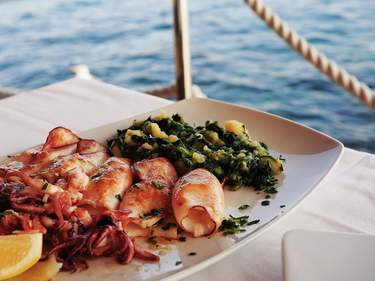
Gourmet Tour
You will visit three different adjacent countries and experience traditional local food and wines. You will visit some of the most intriguing restaurants and wineries in the area taste the delicious contrast between fine restaurants, and more traditional, authentic taverns.

Culinary Secrets of Croatia
This vintage holiday celebrates the wine and olive oil-making traditions of Croatia’s Adriatic coastline, which form the foundations of the country's Mediterranean culinary heritage. Visit world-class wineries, and sample Dalmatian delicacies as you travel south to Dubrovnik.

Balkan Extended
The Balkan Extended tour truly showcases the finest of Balkan’s heritage and natural beauty as you make your way through the 5 countries. Learn about the Serbian Athens, climb the splendid Old Bridge in Mostar, observe Slovenia's water castle and dive into the pearl of Croatia's beauty in Istria.
The information below is from The Rough Guide to Croatia , our in-depth Croatia travel guide - check it out for your all your Croatia travel needs.
- Language: Croatian is the official language, spoken by around 95 percent of the population.
- Currency: kuna (Kn)
- Population: around four million; 1 in 4 people live in the capital, Zagreb.
- Hours of sunshine: 2175 (more than Sydney).
- Croatia is one of Europe’s most biodiverse countries, with over 100 mammals, including the grey wolf and the brown bear.
- On average, Croatians consume of 5kg of coffee a year - that’s more than double the average Brit.
For more tips about travel to Croatia, read our full facts about Croatia article .
Choosing where to visit in Croatia can be tough. This is, after all, a country that pretty much offers it all - ancient history, idyllic islands, and contemporary cool. Here’s an outline of options to consider for your visit to Croatia, with full details in our Croatia travel guide book .
Croatia’s big cities
If you’re after history and culture when you travel to Croatia, you’ll be pleased to hear the country has both in abundance. Medieval remains, Baroque grandeur and Byzantine monuments await in towns and cities, such as Dubrovnik , Zadar , and Split . Rovinj is resplendent with Venetian architecture, while Pula has a two-thousand-year-old Roman amphitheatre.
Croatia’s national parks
If you’re looking to escape to the untamed outdoors during your Croatia travel experience, you’re in luck. The country is blessed with staggeringly beautiful national parks , such as the forest-fringed lakes and waterfalls of Plitvice Lakes , and the hiking hotpot of Northern Velebit.
The Croatian islands
Croatia’s beaches and islands are perhaps country’s top draw. The Elaphite Islands of Kolcep, Lopud and Sipan are among the most unspoiled in the Adriatic, and beaches on the Dalmatian coast - such as those on Brac - are jaw-droppingly attractive.
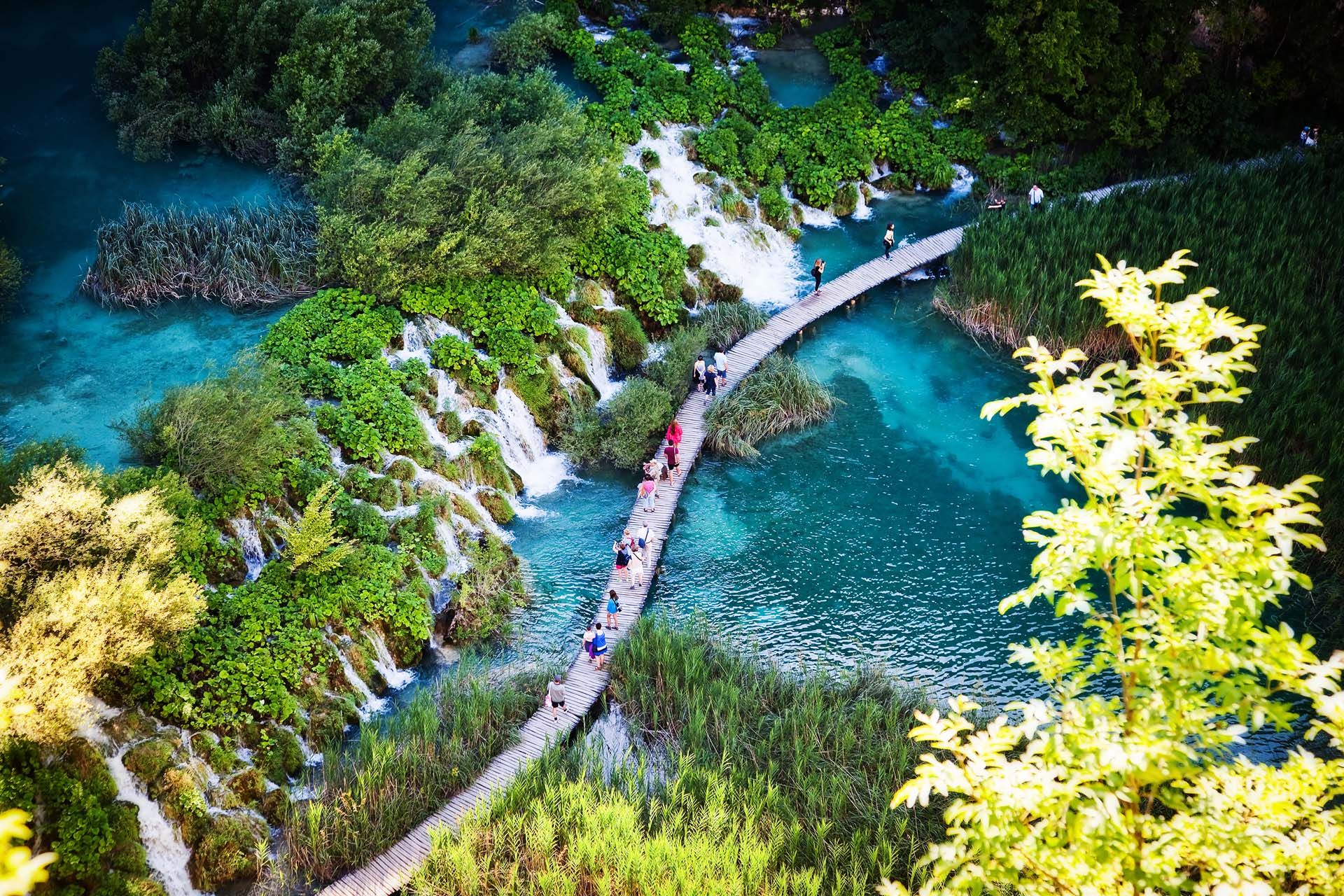
Beautiful waterfalls Plitvice lakes, Croatia © Melinda Nagy/Shutterstock
Discover more places in Croatia

- Northern Dalmatia Travel Guide
- Split and the south Dalmatian coast Travel Guide
- Zagreb Travel Guide
Here’s a run-down of landmarks and attractions in Croatia everyone should see in a lifetime - places you’ll definitely want to consider visiting during your Croatia travel adventures.
- Dubrovnik - one of Europe’s best preserved walled medieval cities.
- Plitvice Lakes National Park - sapphire lakes, rushing waterfalls and wooden walkways weaving through wildlife-rich wooded hills.
- Hvar island - stylish bars, secluded coves, crystalline waters, exquisite food. Hvar is hard to beat for all-round visitor appeal.
- Rovinj - this Italianate jewel in Croatia’s crown has buckets of Venetian elegance.
- Split - Roman grandeur meets modern bustle in Croatia’s vibrant second city.
- Krka National Park - spellbinding waterfalls, lakes, rapids and forests.
Discover more great places to see in our ultimate list of things not to miss in Croatia .
Croatia is an excellent destination for outdoor activities . Easy rambling territory in inland Croatia is provided by wooded Mount Medvednica close to Zagreb and crisscrossed by well-used trails. On the Adriatic coast, Učka is one of the most accessible mountains, and can be safely bagged by moderately fit hikers. Farther south, the more challenging Velebit range stretches for some 100km along the eastern shore of the Kvarner Gulf. Croatia’s most exhilarating long-distance hiking route, the Premužić Trail, takes in mountain ridges, dense forests and awesome view, making it a top draw for adventurous types who travel to Croatia. You might want to hook up with a local Croatia guide with hiking expertise to make the most of this one.

View of Hvar city in Croatia © andras_csontos/Shutterstock
Cultural activities
Croatia is the perfect place to take in fascinating history through exploring cities, towns and tiny villages. Walking Dubrovnik’s walls, for example - a brief but breath-taking trot round battlements overlooking the Adriatic - serves as an inspiring introduction to this ancient city. Then there’s Pula’s amphitheatre - Imperial Rome’s greatest gift to the eastern Adriatic still serves as the venue for summer concert. In Split, the former Roman emperor’s pied-à-terre, the Diocletian’s Palace, remains at the heart of the modern city. Many of Croatia’s smaller city’s deliver big on historic allure. Varaždin, for example, is a postcard-perfect Baroque town, complete with opulent squares, crumbling palaces and a unique garden cemetery - hands down one of the best places to travel in Croatia to soak up elegant charm.
Thanks to the crystal-clear waters of the Adriatic and the diversity of its marine life, Croatia has become one of the most popular scuba-diving venues in the Mediterranean over the last few years. There are a growing number of diving centres along the Adriatic coast offering lessons, guided expeditions and equipment rental. Two of the most rewarding areas for diving are the Kornati islands in mid-Dalmatia and the island of Mljet near Dubrovnik.
Where there’s diving, there’s beaches, and Croatia is blessed with some of Europe’s best. Near Zadar long, luxuriant Kraljičina plaža (Queen's Beach) features a brace of beach bars and very little else, save for mesmerising views of the Velebit mountains across the water and a stunning strip of sand. The best beach on the heavenly island of Hvar has to be silkily sandy Grebišće, while the uninhabited islet of Proizd, near Vela Luka on charismatic Korčula Island delivers a sublimely secluded, serene coastline of white sand and sloping rocks.
Entertainment
Croatia has a thriving music scene, best experienced during summer festival season, when pretty much every genre of music is catered for, with indie rock at InMusic, cutting-edge dance music at Tisno and dub-to-dubstep extravaganzas at the Punta Christo fortress, near Pula. Come late July, Pula amphitheatre also plays host to the Pula Film Festival, which premieres the year’s crop of domestic feature films.
The best destination for shopping in Croatia is Zagreb, which offers a range of retail experiences you won’t find along the Adriatic coast, including regular flea and collectors’ markets. Many of Croatia’s best gifts to bring home involve food and drink, such as Croatia’s world-class wines and herb-flavoured rakija, often featuring fragments of herb in the bottle. Soaps made from olive oil and fragranced with local herbs are also a good buy, as are bags of lavender, harvested on the island of Hvar. Intricate embroidery featuring folk motifs is still produced in many areas of inland Croatia, and the Konavle region south of Dubrovnik. Even the smallest pieces make stunning keepsakes.

Krka river waterfalls in the Krka National Park, Roski Slap, Croatia © Alena Brozova/Shutterstock
As any Croatia travel guide worth its Adriatic salt will tell you, deciding when is the best month to go to Croatia depends on what you plan to do when you get there. History and culture can be enjoyed year-round, with towns and villages looking especially atmospheric during the winter months. If you’re coming for sea, sun and sand, consider skirting around the school holidays - visit Croatia in May, June or September - avoiding both peak crowds and peak temperatures. This Croatia travel advice applies to nature-lovers too. The national parks look especially stunning in autumn, making it the best time to travel to Croatia for ramblers and hikers.
Find out more about the best time to visit Croatia .
If you plan to travel to Croatia during the summer months, you won’t be short of direct flights from European countries’ major hubs. If you’re coming from North America, however, flying direct still isn’t an option - you’ll have to take a one- or two-stop flight via a main European city, but it’ll be worth it. Travelling by train is convenient if you’re coming from the UK or elsewhere in Europe, and regular ferries run from Italy during summer.
Read on for the best ways to get to Croatia .
If you’re wondering how to how to travel around Croatia independently, it’s worth bearing in mind that its coastal and mountainous terrain can make overland travel rather time consuming. That said, Croatia’s train network is useful for travelling around the north and east of the country, while buses are best for travelling along the coast. With more a thousand islands, don’t pass up the chance to enjoy a spot of island-hopping . Ferry and catamaran services are available throughout the year, and travelling in Croatia by boat is always a highlight.
Learn more about transportation and how to get around Croatia .

View of Moored Boat and the Old City in Rovinj, Croatia © Rolf E. Staerk/Shutterstock
In part thanks to its status as Europe’s fastest growing destination of the past decade, Croatia has an increasing range of well-equipped four- and five-star hotels, but still a relative shortage of boutique hotels and B&Bs. At present, apartments and private rooms offered by local families represent the country’s best-value accommodation. The Adriatic coast is also good for beautifully situated campsites.
Discover how to find the best accommodation in Croatia .
Thanks to its geographical position, Croatia’s culinary offerings blend central European and Mediterranean influences to delicious effect. So, while every kind of seafood dominates menus along the coast, you’ll also find schnitzel, pastries, and various riffs on pasta and noodles. Regional highlights include Pag cheese from the Kvarner Gulf, and sausages (kobasice), cured ham (pršut), and gnocchi (njoki) from the Istrian Peninsula.
Read more about local food and drink in Croatia .
Croatia’s calendar is crammed with festivals, religious holidays and cultural events throughout the year. Summer is the season of DJ events, big beach parties, eclectic art gatherings and folksy fairs along the Adriatic, with cultural festivals taking place in Zagreb in spring and autumn. Classical music-lovers will adore the six-week Dubrovnik Summer Festival held annually from July, while the Varaždin Festival of Baroque Music sees the city’s many fine churches put to splendid use as concert venues.
To include a festival in your trip to Croatia, check out the month-by-month overview of festivals in Croatia .
Croatia’s capital Zagreb is one of Central Europe’s liveliest cities when it comes to DJ-driven club music and live alternative rock. Though most clubs take a break in July and August, during summer Zagreb is enlivened by an array of nightly open-air gigs, puppet shows and art happenings. Dubrovnik is better known for its charming Old Town bars and restaurants than raving nightlife, though clubbers are well served by Banje Beach Club and the cavernous Revelin club that’s held in the atmospheric, barrel-vaulted chambers of the Revelin Fortress. On the coast, Pula’s amphitheatre offers everything from opera to pop cocerts, while its Rojc cultural centre, occupying a former barracks, is home to dozens of cultural organisations and hosts a variety of gigs and theatre events.
One of the great things about Croatia travel is that the country can be enjoyed on a swift city break basis, while also having plenty to keep visitors more than satisfied for weeks (or months) at a time. Ideas for a few days in Croatia include immersing yourself in exploring Dubrovnik’s delights ( Game of Thrones fans will have fun spotting all the locations), and taking a trip to one of the nearby islands - Korčula, for example, where fine wine and rustic charm awaits.
Among the best ideas for spending a week and more in Croatia is exploring the Adriatic coastline. For example, in two weeks you could set out from Dubrovnik to Korčula, then take a swift catamaran to chic Hvar before continuing to Split. Continuing north, a stay in Zadar delivers both history and contemporary style, before Pula and Rovinj reveal their Mediterranean charisma (and Pula its Roman roots).
For more inspiration see some of the Croatia itinerarie s from our Croatia guide and local travel experts.

Split, Croatia © novak.elcic/Shutterstock
- Tips (napojnice) aren’t obligatory, but if you’ve enjoyed a round of drinks or meal, it’s polite to round up the bill by ten percent or to the nearest convenient figure.
- If invited to someone’s house, they’ll usually offer you slippers upon arrival. It’s also the norm to bring a gift for your host.
- Naturism has a long history on the Adriatic coast, with self-contained naturist holiday villages, and naturist campsites in Istria and the island of Krk. Throughout Croatia, you’ll find isolated coves or stretches of beach where it’s OK to be nude, providing it’s at discreet distance from the main family-oriented areas.
Practical travel tips for Croatia
From travel safety to visa requirements, discover the best tips for traveling to Croatia
- Eating and drinking in Croatia
- Getting around Croatia: Transportation Tips
- National Parks in Croatia
- Sports and Outdoor activities in Croatia
- Travel Tips Croatia for planning and on the go
- Best time to visit Croatia
- Croatia’s unit of currency is the kuna, which is divided into 100 lipa.
- The best place to change money is at a bank (banka), or exchange bureau (mjenjačnica). Be aware though, that in smaller towns banks normally close for lunch on weekdays, and aren’t open at all on Saturdays. You’ll find ATMs in all Croatian town centres.
- Croatian is the official language. Over half the population have at least some understanding of English, with German and French widely spoken too.
- Wall sockets in Croatia operate at 220 volts and take round, two-pin plugs - British and US travellers should purchase a continental adaptor before leaving home.
For advice about practical matters when travelling in Croatia, check the travel advice for Croatia .
If you’re wondering how much to budget for a trip to Croatia, or whether it’s expensive, it’s true to say that Croatia is by no means a bargain destination, and the cost of accommodation - on a par with Western European countries for most of the year - shoots upwards in July and August. Eating and drinking, however, remain good value, especially if you shop in markets. If you’re staying in hostels, self-catering and travelling by public transport, expect to spend at least 600Kn/£60/€80/US$85 per person per day. At the other end of the scale, staying in a good hotel, eating in nice restaurants, renting a car and not skimping on the cocktails will involve a daily outlay of 1500Kn/£150/US$220 or above.
- If travelling from outside mainland Europe, you’ll need a continental power adapter.
- Pack comfortable shoes to make the most of exploring Croatia’s cities and towns on foot, and decent walking boots if you’re planning to visit the glorious National Parks.
- Sunscreen - during the summer, Croatia’s beaches and islands can be blisteringly hot.
- Water shoes - while Croatia has plenty of soft sand beaches, some of its most scenic, turquoise-watered sun spots are pebbly.
- Clothes to layer and a waterproof jacket. Dubrovnik is windy year-round, which means you might feel the elements while walking the battlements.

Dubrovnik, Croatia © SchnepfDesign/Shutterstock
The crime rate in Croatia is low by European standards. Your main defence against petty theft is to exercise common sense and refrain from flaunting luxury items, especially in the bigger towns and cities.
For up to date information about safety and travel requirements for Croatia, check government guidelines. UK nationals should heed Foreign, Commonwealth & Development Office advice , while travellers from the US should check governmental travel advisory guidelines for Croatia.
- Steer clear of Dubrovnik and Split when cruise ships are docked - truly a top Croatia travel tip.
- Avoid visiting Croatia in peak summer season - it’s packed, pricey and too hot to make the most of walking the National Parks. Better to visit in May or September.
- Don’t turn up at show Plitvice Lakes National Park without a pre-purchased ticket. You need to book at least 12 hours in advance.
- Don’t ever assume you can pay in Euros rather than kuna - though some places do accept Euros, be respectful and ask first.
- For more ideas about what to see and do in Croatia, plus plenty of practical guidance that will help you make the most of your trip, take a look at The Rough Guide to Croatia .
- If you’re keen to explore Croatia’s islands after reading about them in this Croatia travel guide, you could look to book an island-hopping tour around three of the stunning Elaphites islands.
- Calling all Game of Thrones fans - enjoy an immersive tour that takes in Dubrovnik’s GoT sites, and ends with a thrilling boat trip to Lokrum island (aka Quarth).
- To take the hassle out of planning, Rough Guides’ tailor-made travel platform offers a range of fully customisable Croatia itineraries , created in consultation with local experts.
The Rough Guides to Croatia and related travel guides
In-depth, easy-to-use travel guides filled with expert advice.

Find even more inspiration here

Planning your own trip? Prepare for your trip
Use Rough Guides' trusted partners for great rates
written by Rough Guides Editors
updated 22.09.2021
Ready to travel and discover Croatia?
Get support from our local experts for stress-free planning & worry-free travels.
- Where to stay
- Travel advice
UK Edition Change
- UK Politics
- News Videos
- Paris 2024 Olympics
- Rugby Union
- Sport Videos
- John Rentoul
- Mary Dejevsky
- Andrew Grice
- Sean O’Grady
- Photography
- Theatre & Dance
- Culture Videos
- Fitness & Wellbeing
- Food & Drink
- Health & Families
- Royal Family
- Electric Vehicles
- Car Insurance Deals
- Lifestyle Videos
- UK Hotel Reviews
- News & Advice
- Simon Calder
- Australia & New Zealand
- South America
- C. America & Caribbean
- Middle East
- Politics Explained
- News Analysis
- Today’s Edition
- Home & Garden
- Broadband deals
- Fashion & Beauty
- Travel & Outdoors
- Sports & Fitness
- Sustainable Living
- Climate Videos
- Solar Panels
- Behind The Headlines
- On The Ground
- Decomplicated
- You Ask The Questions
- Binge Watch
- Travel Smart
- Watch on your TV
- Crosswords & Puzzles
- Most Commented
- Newsletters
- Ask Me Anything
- Virtual Events
- Betting Sites
- Online Casinos
- Wine Offers
Thank you for registering
Please refresh the page or navigate to another page on the site to be automatically logged in Please refresh your browser to be logged in
The Independent's journalism is supported by our readers. When you purchase through links on our site, we may earn commission.
6 of the best ways to cruise around Croatia for island-hopping and excursions to ancient cities
From familly-friendly ships to romantic voyages for couples, here are the best ways to hop between multiple islands, article bookmarked.
Find your bookmarks in your Independent Premium section, under my profile
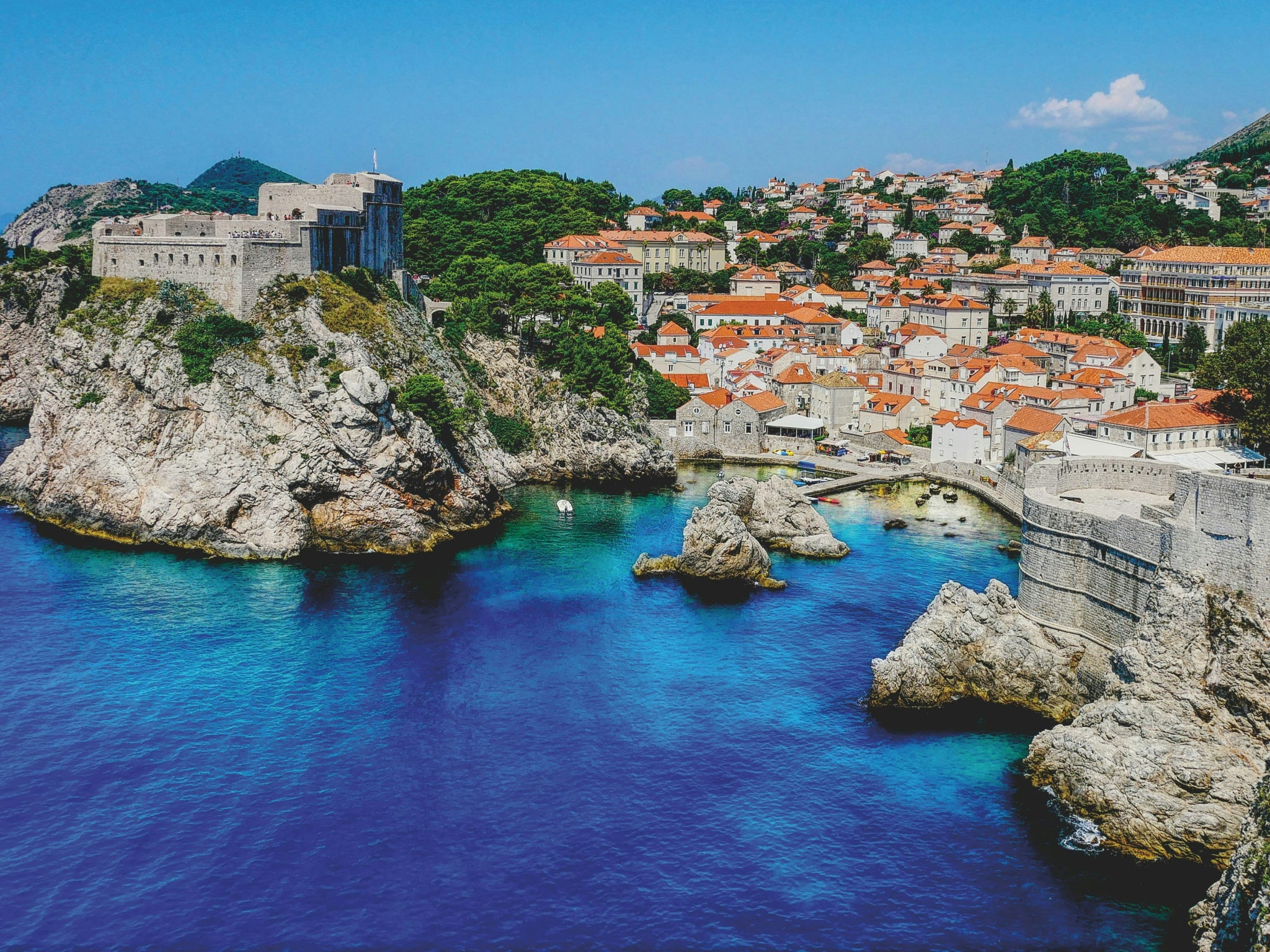
Sign up to Simon Calder’s free travel email for expert advice and money-saving discounts
Get simon calder’s travel email, thanks for signing up to the simon calder’s travel email.
Croatia has steadily grown in popularity as a tourist hotspot, offering everything from crystal clear bays to cities crammed full of history dating back to medieval times. But with so much culture and coastline to choose from, it can be hard to decide which part of Croatia to visit first.
While Dubrovnik ’s Roman ampitheatres and Fort Bokar have gained fame from their appearances in Game of Thrones , the island of Hvar combines turquoise waters with a party scene to rival Mykonos or St Tropez. Meanwhile, foodies have a lot to say about Zagreb , which blends Eastern and Western European cooking styles with Mediterranean ingredients like olive oil and rosemary, as well as root vegetables and dumplings.
Cruising around the Adriatic sea is a great way to experience ancient walled cities filled with medieval architecture along with lush island gems like Mljet, Korcula, and Vis. All without having to pack and unpack or browse ferry timetables to travel between islands.
Whether you’re travelling as a family or want a romantic trip with a loved one, we’ve rounded up some top cruise options in Croatia.
Visit three Unesco world heritage sites
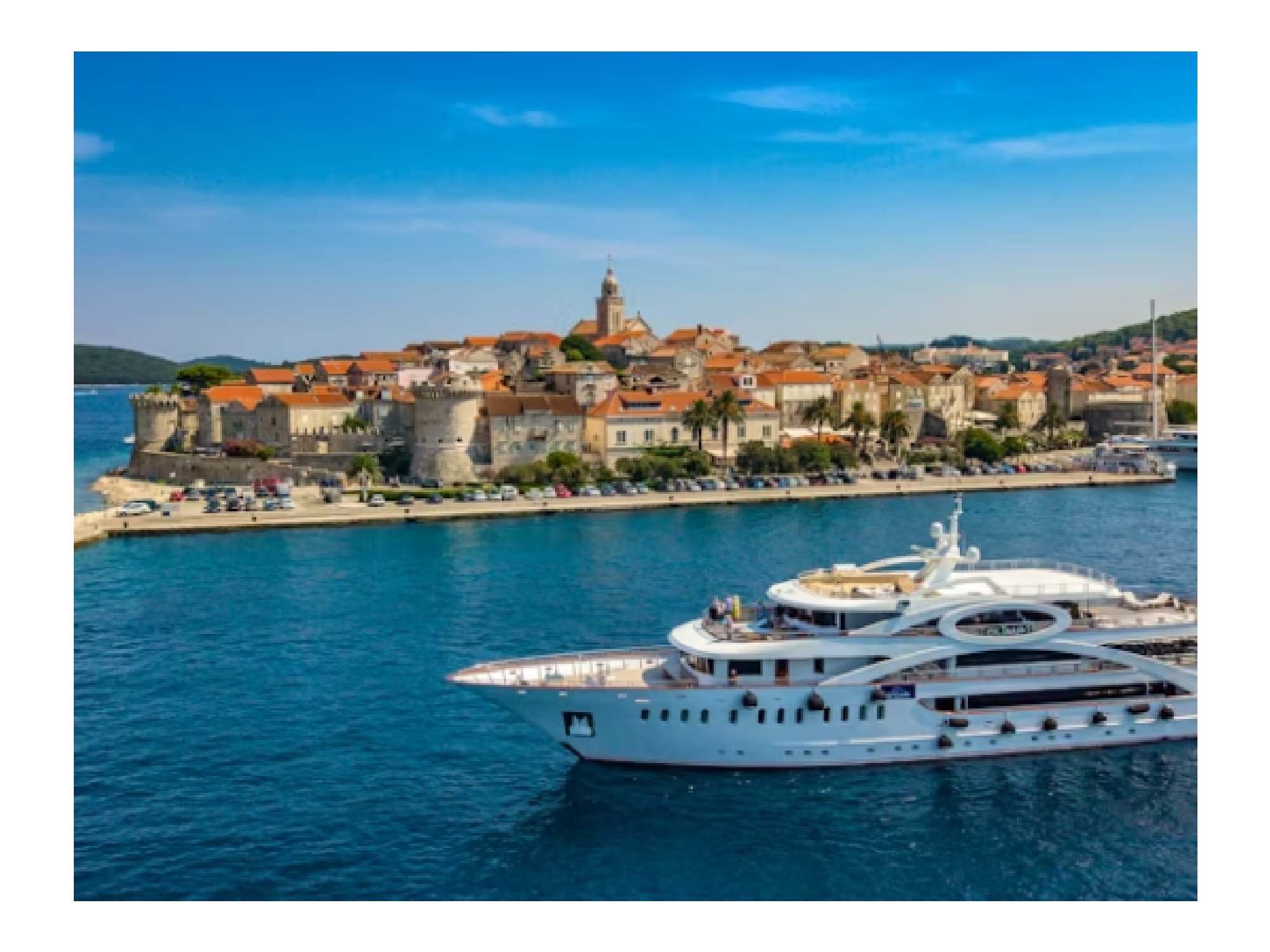
Sail Croatia offers the ultimate break for culture lovers, or anyone who enjoys sightseeing as much as they like sunbathing. The Elegance Cruise starts and ends in Split, where you can tour the Unesco heritage site of Diocletian’s Palace, which is one of the best preserved monuments of Roman architecture in the world.
The route will take you north through the seaside town of Trogir, which is also Unesco-listed, before stopping in Sidenik where you can explore the Cathedral of St James. From there, you’ll be taken to Vodice to admire world-famous waterfalls before having beach days on the islands of Vis and Hvar.
Prices from £2,019pp including seven nights accommodation, all meals and drinks, daily swim stops, airport transfers and a tour manager. Departing 7 July 2024.
Get blown away by the intimate luxury of a twin-masted yacht
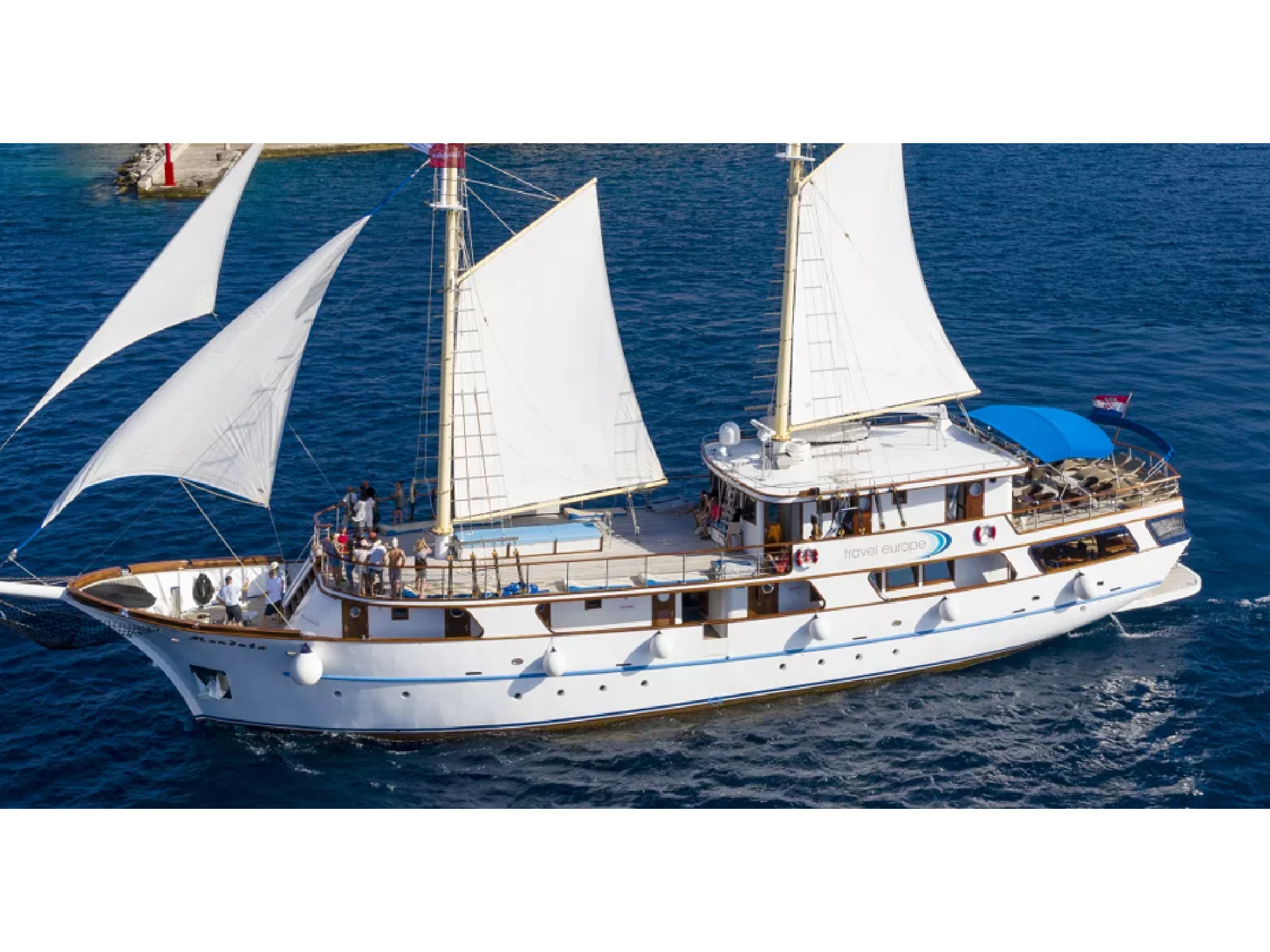
Experience the romance and glamour of a sailing yacht that only holds 30 passengers and six staff. Riviera Travel’s SS Mendula can easily be anchored in tiny ports, so all you have to do is skip off and start your day without the need to queue for a charter. Every day it will pull up in a different place for a swim spot, giving you the chance to enjoy unique places for a calming dip.
This cruise docks in two different places a day, so you can spend the morning in one place, return to the ship for lunch, and then arrive at a different port for some afternoon exploring. You’ll see more islands on this cruise than with other itineraries, stopping at Bol, Vis, Hvar, Korcula, Jesla, Milna and Trogir, as well as starting and ending in Split.
Prices from £1,999pp including seven nights accommodation, return flights, all meals and drinks and some guided tours. Departing 31 August 2024.
Savour food and wine tastings with fresh Mediterranean flavours
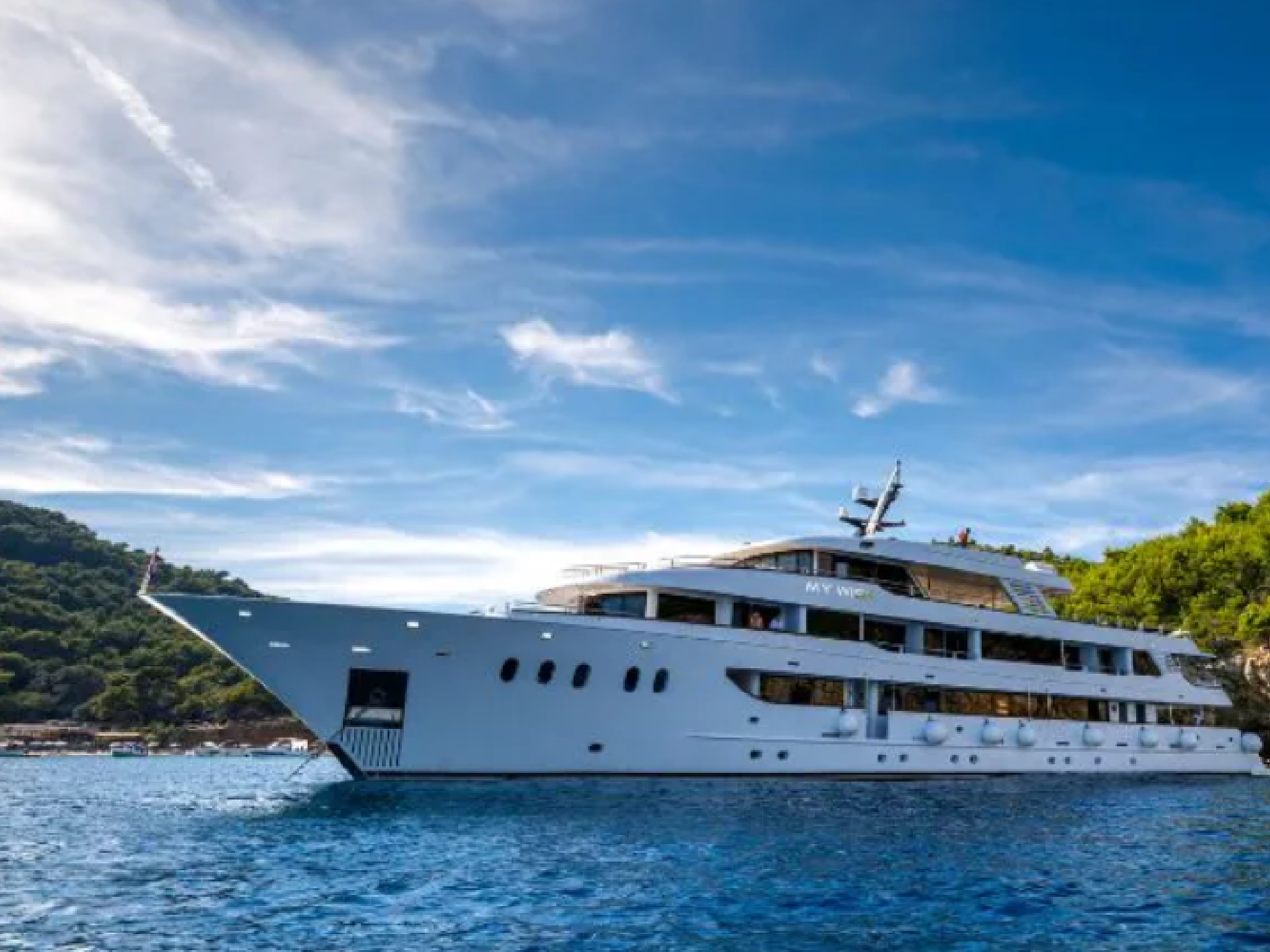
If trying new flavours and experiencing different dishes is what gets you excited about going on holiday, Cruise Croatia’s luxury hidden gems tour could be your ideal trip. You’ll sail on a small ship with a cruise director, captain and very talented chef who will take care of your every need. In Sibenik, you can experience local prosciutto tasting and visit a family-run winery on Krk. Not many cruises stop at Krk or Losinj on the North of the Dalmatian Coast, so this is a special trip.
Another highlight is that you’ll see the best of what each island has to offer since this cruise will set you up with a free expert local tour guide in every port. You don’t have to worry about working out what to do on each island, as you’ll be guided straight to each spot’s hidden gems. There’s also a Jacuzzi on the top deck so you can chill out after a day of sightseeing.
Prices from £1,921pp including seven nights accommodation, all guided tours, watersports, daily swim stops and Wi-Fi. Departing 21 June 2025.
Enjoy child-free travel and a gigantic floating spa
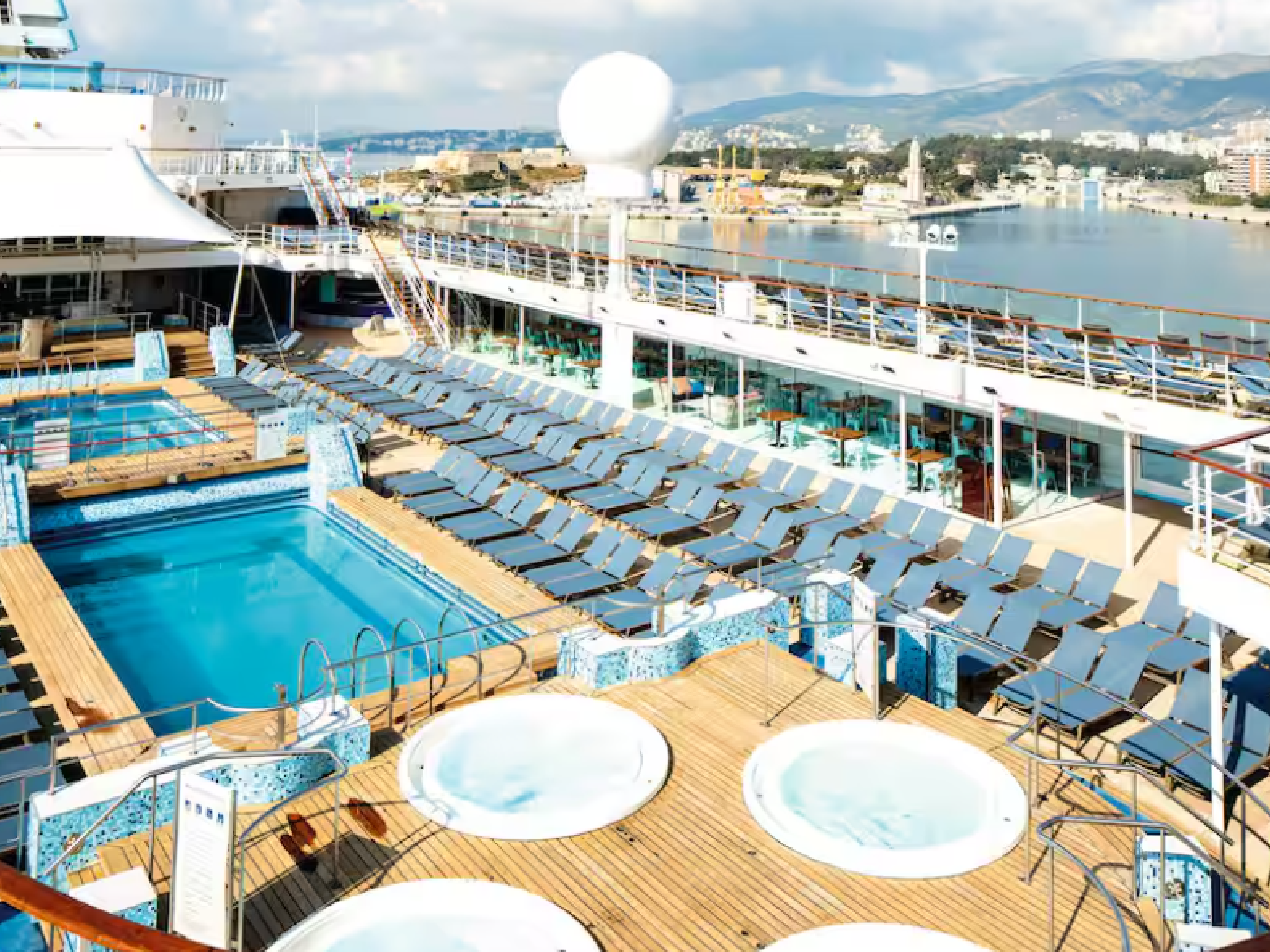
With Marella’s Adriatic Affair package, you can experience the old cities of Dubrovnik and Split, as well as the coastal charm of Rijeka. The eight-day cruise starts and ends in Dubrovnik where you can see the city’s old walls along with the Game of Thrones’ filming locations. In Rijeka, you can wander through the winding pedestrianised streets before taking a trip to the world-famous Plitvice National Park for breathtaking waterfalls. Once you get back on the boat, relax in a gigantic spa or choose from nine different restaurants and 10 bars, including a special Champagne bar. There are more than 900 cabins on this ship and night-time entertainment to cater for all tastes.
As this is an Adriatic cruise, rather than solely focused on Croatia, you’ll also get to experience ports in Montenegro and Slovenia on the Adriatic coast. The price includes return flights, making it a good value option compared to other cruises that cost around the same price without transfer options.
Prices from £1,029pp including flights, seven nights all-inclusive accommodation and entertainment. Departing 4 July 2024.
Beach hop and swim in secluded bays
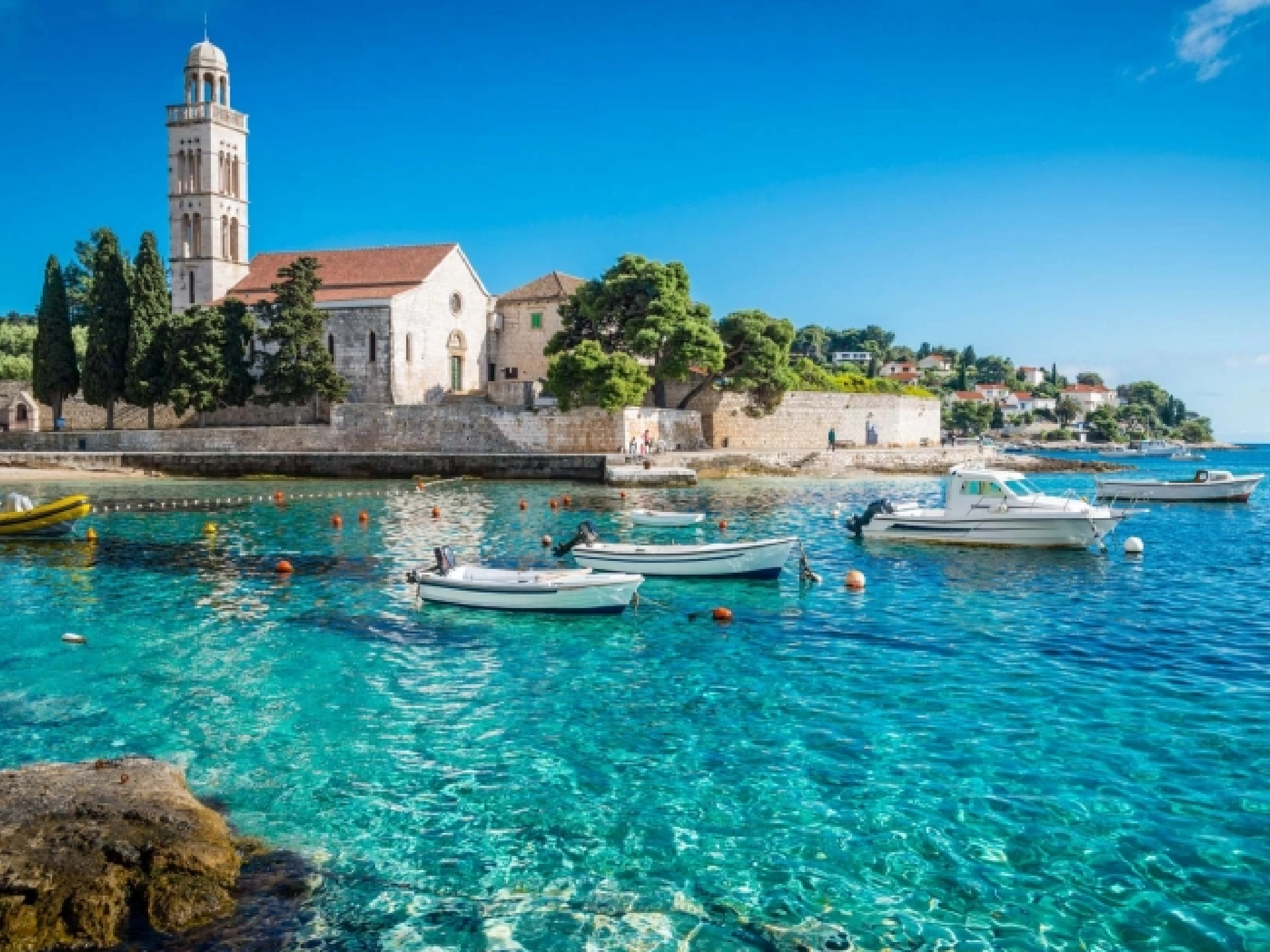
Some of Croatia’s best beaches are hidden from tourists who don’t have local knowledge, but you’ll get to experience these secluded bays and crystal clear waters on a cruise from Split to Dubrovnik with My Croatia Cruise. Along the way, you’ll stop at Trogir, Hvar, Brač, Vis and Elafiti where local guides will show you the best places to swim and sunbathe. In Vis, you’ll be taken into the blue cave, weather permitting, where you can take a dip in electric blue waters. Food on board features local produce, including oysters from the Pelješac peninsula and fresh fish.
Prices from £1,259pp including seven nights accommodation, all meals and drinks, all guided tours, historic building entry fees and wifi. Departing 29 June 2024.
Have a luxury family holiday on a budget
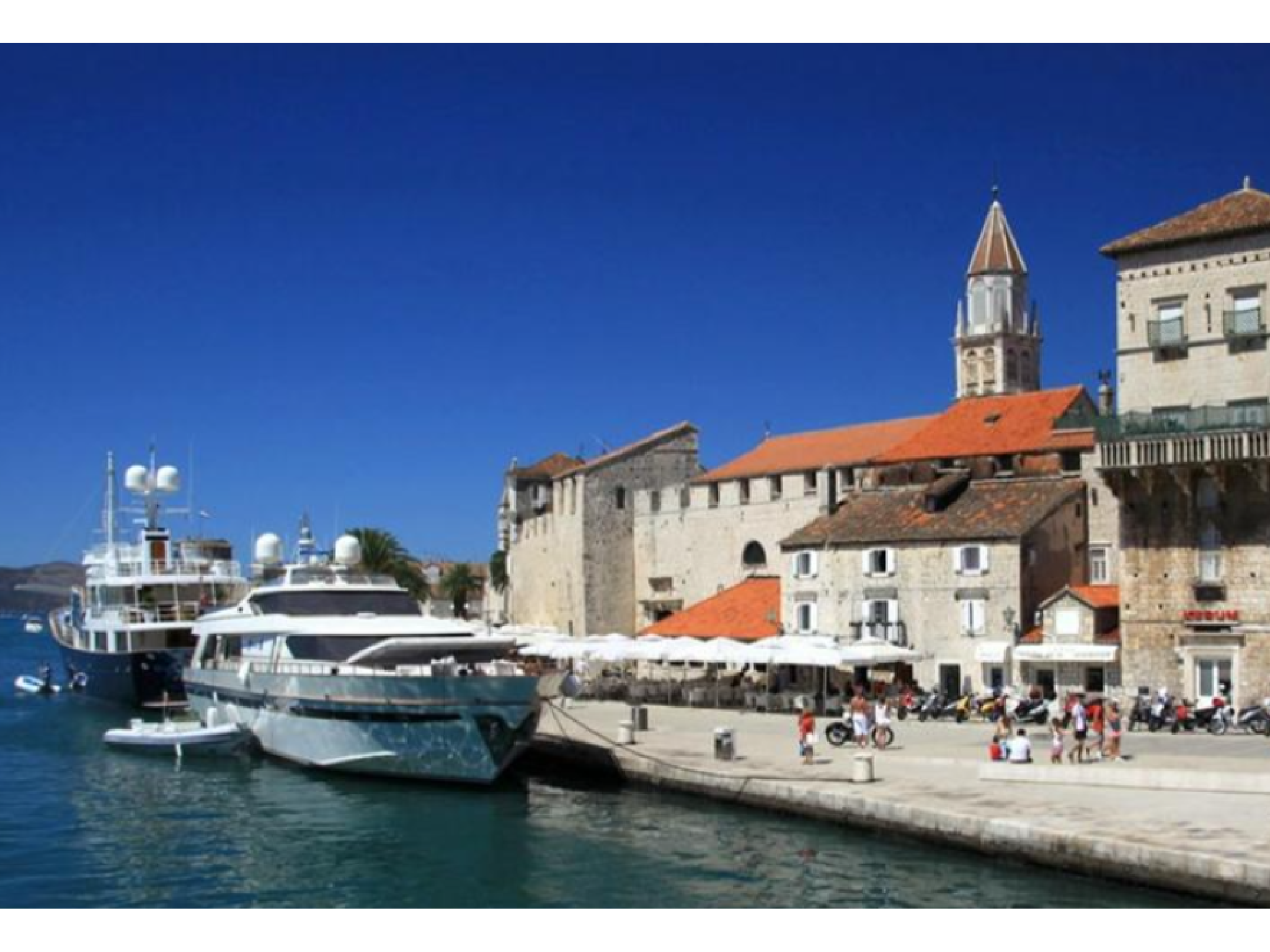
While most cruises start at £1,000, Adriagate has options from £625 per person in October, or £825 if you want to travel in the summer school holidays in August. The downside is that this is a half-board trip, rather than all-inclusive, but this frees you up to enjoy some local cuisine whenever you stop. You’ll start and finish in Trogir, with stops including the islands of Brac, Hvar and Vis as well as the historical city of Dubrovnik.
There are no tour guides so you have the freedom to explore or relax depending on how the children feel that day. It’s a convenient way to island hop, without dragging everyone’s suitcases around.
Prices from £1,921pp including seven nights accommodation, all guided tours, watersports, daily swim stops and wifi. Departing 21 June 2024.
Join our commenting forum
Join thought-provoking conversations, follow other Independent readers and see their replies
Subscribe to Independent Premium to bookmark this article
Want to bookmark your favourite articles and stories to read or reference later? Start your Independent Premium subscription today.
New to The Independent?
Or if you would prefer:
Want an ad-free experience?
Hi {{indy.fullName}}
- My Independent Premium
- Account details
- Help centre
Get the Hottest Deals First!
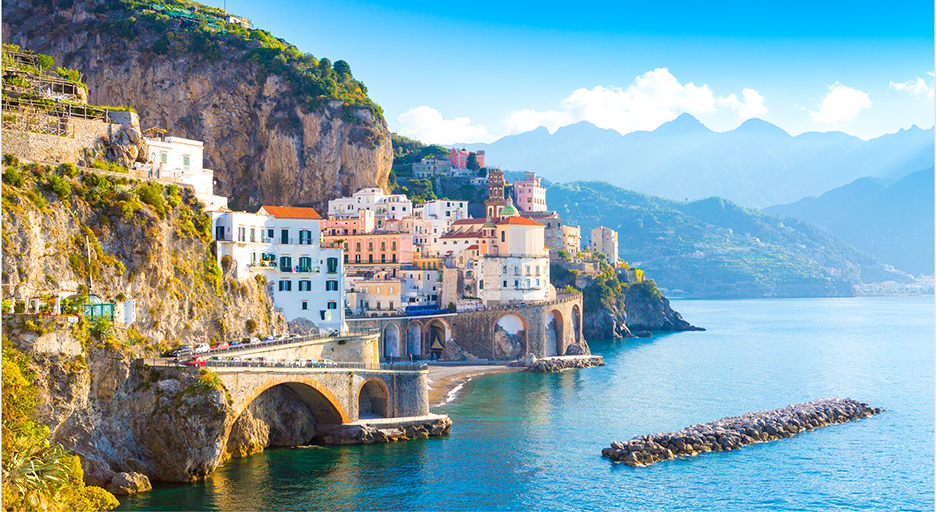
The Best Times to Visit the Mediterranean
If you’re dreaming of a Mediterranean trip, start planning by considering the when, where, and how. There’s someplace perfect for every season!

June 18, 2024
6 minute read
With inviting and diverse cultures, incredible natural scenery and azure waters, history going back to the dawn of civilization, not to mention the delicious local food and drink that make up a world-famous diet , the Mediterranean certainly has its share of draws. The only questions left: When, where, and how should you go? (Spoiler alert: There’s no wrong time to go, only best times to fit with your style and interests.)
When to Go to the Mediterranean
Many think of summer and the Mediterranean – for good reason. The region’s iconic destinations like the Greek islands, Croatian coast, and the Italian Riviera promise days filled with sunshine, ocean breezes, and cooling off in the sea. Summer is a prime time to visit – and many do, so keep in mind you’ll be among the many who flock to the coast
Fall brings more calm to the streets as locals return home to their routines, while the historic sites and landmarks still bustle. Winter and spring usher in a quieter atmosphere and cooler temperatures, which can make sightseeing that much more enjoyable and stays in European hotels (which typically don’t have A/C) that much more comfortable. While island hopping takes a backseat off-season, fascinating medieval cities and towns and historic landmarks invite you in to slow down and explore.
How to Go to the Mediterranean
There are always the big ships for that Mediterranean cruise sampling the region’s many incredible destinations – but in this author’s experience, it will leave you wanting. Wanting to linger longer than the big cruise lines can stay ashore… to wander the winding streets of old cities early or late in the day… to dine among locals for meals you’ll remember… to just settle in and let the places you’ve always wanted to know sink in.
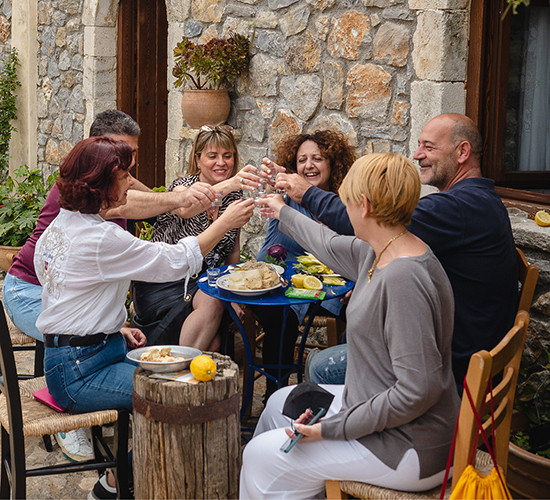
Guided touring, however, offers balance with an expertly planned itinerary that blends essential sightseeing and unique local experiences, built-in time to explore destinations your way, and the invaluable benefit of having an expert guide at your service. You’ll also be alongside fellow travelers for a journey where so many unforgettable experiences are best shared. Whether by a land tour or small ship cruising, the guided touring experience is the way to spend your time going deeper in the Mediterranean.
Mediterranean Destinations by Season
Take these tips from Collette’s experts on the best times to travel to popular Mediterranean countries and what to expect by season.

Spring: Santorini, Mykonos, and other Greek islands open to tourists in mid- to late April. While the weather is mild, most find the beaches are still chilly for swimming or sunbathing. Minimal crowds yield maximum photo opportunities.
Summer: July and August in Greece are hot! (In extreme heat, it’s possible for the Acropolis to be closed during the hottest hours of the day to protect workers and visitors.) During the summer season, tours only run in early July and late August, when temperatures aren’t as extreme. It’s during these months when many Greeks and other Europeans vacation here, too.
Fall: With kids back to school, September and October are great times to visit. Greece remains very busy, as the tourist season on Santorini and Mykonos extends into October, and the water temperatures offer perfect swimming conditions. There may still be crowds at the Acropolis and other popular sites along the way.
Winter: Picturesque Arachova, a ski town, attracts travelers to its slopes during the winter (December through March). Yet even on the coldest days, temperatures rarely dip below freezing. During winter in Greece, take opportunities to explore inland and experience the local culture.
Explore more
Reasons to visit Greece year round
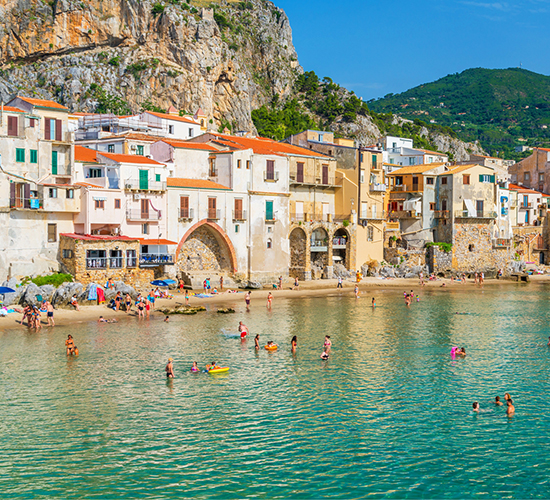
Throughout Italy, the most popular times to visit are April, May, June, September, and October. Along the coast, July and August are busy with locals and Europeans on summer holiday, while cities are usually less crowded.
Winter: Go in December, January, and February for Venice, where you can take a walk beside the canals on a quiet evening and hear your footsteps echoing off the water. Catch the holiday spirit in festive Sorrento or in Naples, renowned for elaborate, handcrafted nativity scene statuettes.
Spring: Before summer’s crowds, spring is a great season to visit Sorrento and the Isle of Capri. Despite occasional rainy weather, the quieter time of year is very enjoyable for sightseeing. At Lake Maggiore, attractions such as the Borromeo Palace on Isola Bella can still be closed for the season, but there is no shortage of opportunities to soak in the area’s beauty.
Fall: After the busy summer season from October onwards, you’ll encounter more of the locals. Fall is a fantastic season to travel in Tuscany, with fewer crowds, cooler days, and a bit of foliage to enjoy – all pairing well with a glass of red wine!
View tours to Italy
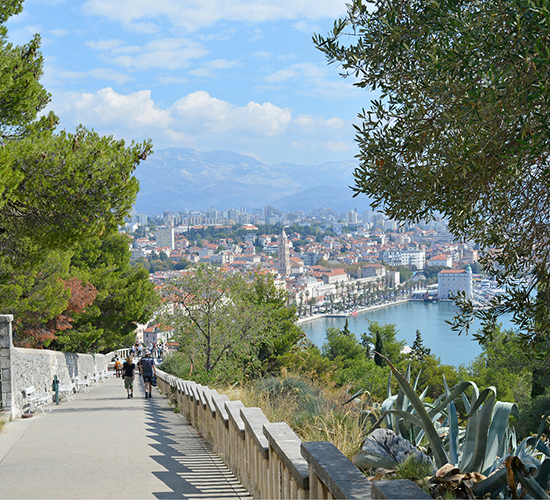
Spring: March to June is one of the best times to visit Croatia. Enjoy many sunny days, ideal for walks, excursions, and even swimming by late spring. April is especially wonderful – perfect for those looking to explore places like Dubrovnik without the crowds.
Summer: If you opt to visit Croatia from June to September, you can expect plentiful sunshine, warm temperatures, and summer crowds. July and August are the most exciting times to visit as the weather is fantastic and the festival season is in full swing.
Fall: The absolute best time to visit Croatia is in autumn; when the crowds are smaller, the weather is ideal, and the sea is still a bit warm. October is perfect for outdoor activities and getting to know the locals who are more relaxed after the busy summer months. Dubrovnik attracts less visitors in autumn, making it an ideal time to visit.
Winter: Get ready to savor the sights, sounds, and flavors of beautiful Croatia and its stunning Adriatic coast. Shoulder-season travel means fewer crowds and more opportunities to explore.
View tours to Croatia
Way More Mediterranean
From Spain’s Costa del Sol and the French Riviera to the shores of Turkey and the northern coast of Morocco , the Mediterranean life is waiting to be explored. There’s no bad time of year to visit throughout the region – just consider your priorities for what you want to see and do to make the most of your time and trip!
Share this post with your friends!
Share with friends, related posts, a taste of croatia from dubrovnik to zagreb, cruise to croatia: one of the mediterranean's best-kept secrets, 5 ways to incorporate the mediterranean diet into your lifestyle, find a travel agency.
Once you've found the perfect Collette tour, your local travel agent can assist you in making reservations. To find a preferred travel agent in your area, please enter your 6-digit postal code, then click Search.
Enter a Whole or Partial Postal Code
(Please note: entering a partial POSTAL CODE will expand the search criteria and possibly return many results.)
Please tell us everything, we want it all!
We really value your feedback, please be open an honest. Tell us where we can improve, how we can get better. This feedback is anonymous, but if you would like us to get in touch with you regarding an issue provide your email address as part of your feedback and we will get right back to you.
Talk to an Expert
By filling out this form, you are giving us your express permission to have a Collette Expert call or email you.
- Yes, I'm a Travel Agent
- Yes, I am working with a Travel Agent
- I am travelling with 8 or more travellers
View or Download
Our 10 favorite travel hacks
Want to travel better? The Upgrade has your back.

The Upgrade is By The Way’s series offering guest writers a place to share their travel hacks and hot takes. For every edition, illustrator extraordinaire Min Heo animates the advice. Below are some of our most popular entries. Some may look basic, but ask yourself: Are you optimizing your travel routine?
Want to write your own Upgrade? See how to submit here .
Dress up for your flight
David Coggins longs for the Cary Grant era of aviation, wishing more passengers would step up their game to bring some dignity and glamour to the experience. The author of “ Men and Style ” argues that making a sartorial effort shows respect to gate agents and flight attendants in uniforms — and your fellow passengers.
“I realize this is a losing battle, but it’s still a good fight,” Coggins writes. “If a sweatsuit is your truth, then there’s nothing else I can say, other than nobody has looked good in a sweatsuit in the history of the world.”
He’s not sure if wearing that checked blazer will really get you upgraded to first class , but it couldn’t hurt.
Visit ‘second cities’ in Europe
Rick Steves is our favorite pétanque-playing philanthropist . He’s a respected travel expert, too. In his beloved Europe, Rick recommends you break up every visit to a capital with a final day in a “ second city .” Think Porto vs. Lisbon , Glasgow vs. Edinburgh and Marseille vs. Paris .
“While lacking the popularity and the bucket-list sights,” Steves writes, “Europe’s second cities tend to enjoy a creative edge, a strong civic spirit, a Rust Belt toughness, fun-loving eateries with cutting-edge menus, entertaining street art … and far fewer tourists, which also means lower prices, a more authentic welcome and arguably a more honest cultural experience.”
Pick your travel uniform
Like Steve Jobs and many practitioners of quiet luxury , travel writer Jessica Poitevien is all about eliminating decision fatigue. Standardizing a set of clothes only for flying doesn’t just help you streamline your packing routine. Poitevien “doesn’t worry about leaving anything important behind, because I have two of everything: one that’s for home and one that sits in my backpack waiting for the next trip. All I add is my passport, laptop and current reading material, and I’m good to go.”
What’s her uniform look like?
“My top is always a long, loosefitting T-shirt or sweater, so I’m covered through all the bending and lifting that happens with luggage and going through security,” Poitevien writes. “I add a jean jacket to stay warm on those freezing planes and use its inner pockets to keep my phone, passport and boarding pass within easy reach.”
Cut your airport arrival dangerously close
It’s not for the faint of heart, but travel writer Brad Japhe wants to waste as little of his life in airports as possible.
“I live about five miles from Los Angeles International Airport,” Japhe writes, “and if my scheduled domestic flight is at, say, 9 a.m., I’m comfortable entering an Uber up until 8:32 a.m.”
Besides some serious bravado, pulling this off requires the use of PreCheck or Clear, among other conditions:
- Traveling solo .
- Express security lanes .
- Familiar airport.
- No checked bags .
Order the Hindu meal
Food and travel writer David Farley thinks we should reject the binary of chicken or pasta in favor of a plant-based meal that exudes spice . By reserving a Hindu meal on your next long-haul flight, you could be treating yourself to dal makhani and naan, or bhindi masala and raita. As long as your reserve your meal at least 24 hours ahead of your flight, airlines told us, you won’t be taking a special one away from anyone else.
Get up early on vacation
Life is short. So take a cue from the dad playbook, and seize the vacation day with an early wake-up call . For Deputy Features Editor Amanda Finnegan , rising with the sun means hours of calm before your travel partners join you. And by 10 a.m., you’re ready for your first nap.
Make a fashion statement in black and blue
Rachel Tashjian ’s job is cooler than your job. As a fashion writer, she flies to Europe three or four times a year for work, watching extravagant clothes appear in fashion shows for weeks at a time . It’s a dream, but there’s an understandable amount of pressure to look amazing every single day. Enter the black-and-blue hack . By mixing a pop of navy in with a collection of dark pieces, you’re making the daring choice to break one of the primary rules of fashion.
Her packing list:
- Two skirts: something that flows and something that hugs.
- Three jackets: a classic blazer, something weird and an open-front wool jacket.
- One pair of trousers.
- One black dress.
- Three T-shirts.
- Black shoes.
Stop eating airport food
Noah Galuten is a hero hubby. By the simple act of making his wife a sandwich to take to the airport, the Los Angeles-based chef and author had the epiphany that we should all swear off precooked egg patties forever .
Sure, you could get settle for upcharged coffee, a Dunkin’ wrap or a sad Caesar from “Weirdly Branded Bar & Grill You Have Never Heard Of.” Or, you could be the game changer for your household, whipping up breakfast burritos or English muffin sandwiches — or just buying a better sandwich in advance in the real world (see: Emily’s Pork Store , Brooklyn).
Take a solo trip
The secret to a happy relationship is compromise. And giving your partner time to travel solo — especially if you’ve got a kid at home. That’s the philosophy preached by writer Austin Graff , an extrovert who has learned to appreciate the benefits of going it alone: It’s easier to get into top-rated restaurants, there’s time to wander and you return to your family more thoughtful and present.
Take a buffer day
The weekend-warrior routine is for people in their 20s. Once you’re in your 30s, Rachel Orr writes, you know well enough to quit pushing so hard and give yourself an extra day to chill before rushing back to work . “Think of it as a mini staycation at the end of your vacation,” she suggests.
More travel tips
Vacation planning: Start with a strategy to maximize days off by taking PTO around holidays. Experts recommend taking multiple short trips for peak happiness . Want to take an ambitious trip? Here are 12 destinations to try this year — without crowds.
Cheap flights: Follow our best advice for scoring low airfare , including setting flight price alerts and subscribing to deal newsletters. If you’re set on an expensive getaway, here’s a plan to save up without straining your credit limit.
Airport chaos: We’ve got advice for every scenario , from canceled flights to lost luggage . Stuck at the rental car counter? These tips can speed up the process. And following these 52 rules of flying should make the experience better for everyone.
Expert advice: Our By The Way Concierge solves readers’ dilemmas , including whether it’s okay to ditch a partner at security, or what happens if you get caught flying with weed . Submit your question here . Or you could look to the gurus: Lonely Planet and Rick Steves .

UEFA European Championship
Croatia vs Italy Predicted lineup, betting tips, odds, injury news, H2H, telecast | UEFA Euro 2024
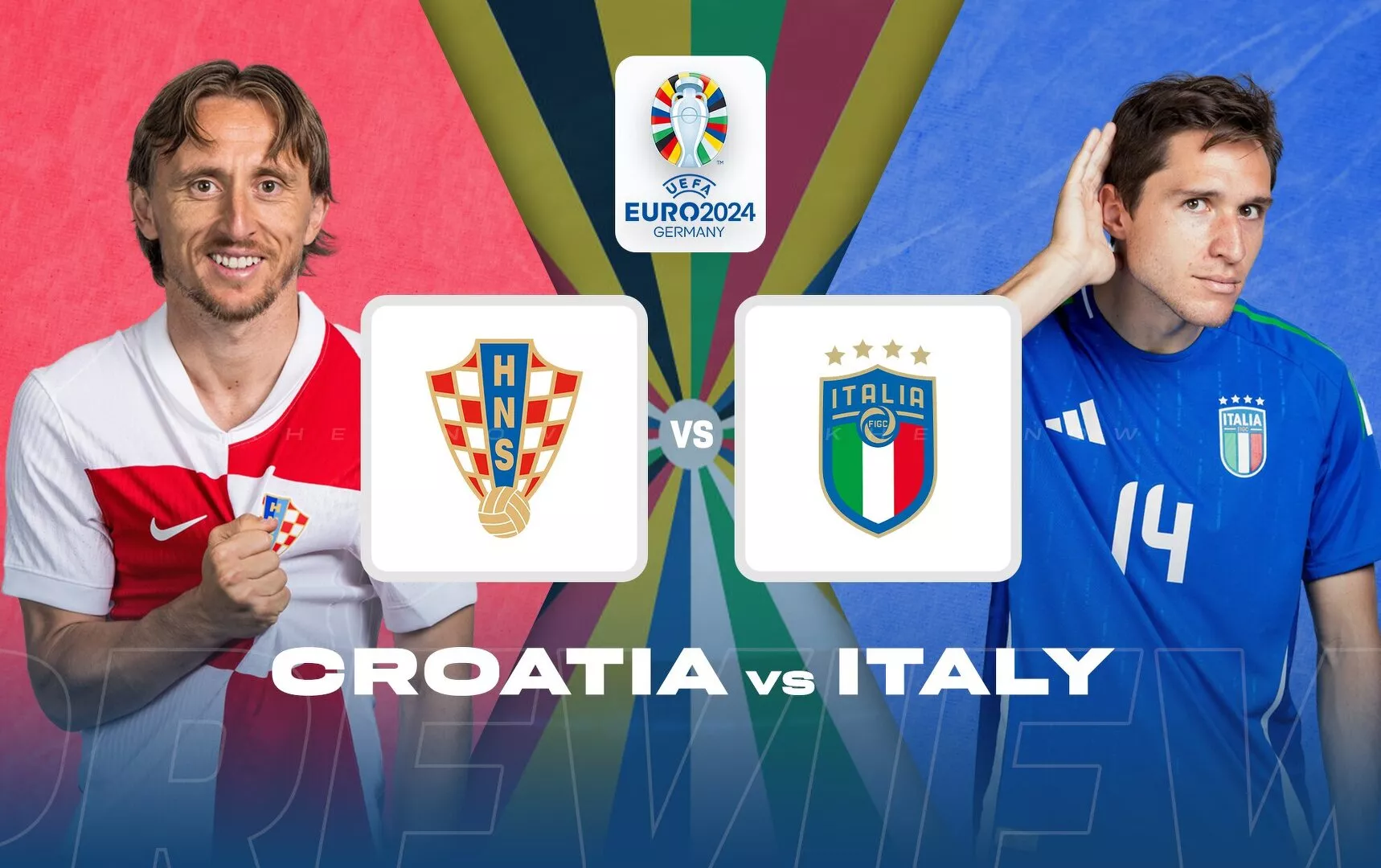
Manav Chowdhury
The Checkered Ones take on the defending champions in their final Group B game.
Croatia will face off against defending champions Italy in their last group-stage match of the Euro 2024. Croatia have not been at their best in their opening two games of the tournament as they lost to Spain and drew with Albania.
This match is essentially more like a play-off to determine whether Croatia or Italy finish as runner-up to Spain who are guaranteed top spot in the Group of Death, Group B. If the Checkered Ones win this fixture they will get the spot and will advance to the knockout stage.
Like Croatia, Italy have not been at their best in the opening two games. But unlike Croatia, the Azzuri have at least managed to get a win on the board as they recovered well from conceding an early goal to Albania to win 2-1. In their second match, unfortunately, they lost to La Roja due to an own goal.
The defending champions will look to get all three points, this will be a close contest for sure and fans surely will be excited about this fixture.
Monday, 24 June, 2024 at 07:00 PM (GMT), 03:00 PM (EST)
Tuesday, 25 June, 2024 at 12:30 AM (IST)
Stadium: Red Bull Arena Leipzig
Croatia (All Competitions): D-L-W-W-W
Italy (All Competitions): L-W-W-D-W
Players to Watch
Luka modric (croatia).
Luka Modric has always shown a great coordination capacity that has allowed him to successfully solve many complex on-pitch situations throughout his career. He is always prepared to give a solution to his teammates. He has great vision and passing ability which makes him special.
Due to his low centre of gravity, Modric is very good in 1v1 situations and easily beats his opponents. He is also very good at taking setpieces and will be a crucial player against Italy for sure in their final Euro 2024 Group B game.
Federico Chiesa (Italy)
Federico Chiesa is a player who is capable of playing both on the left and right. He is a right-footed player but can strike the ball with both feet. He likes to dribble a lot and most of the time beats his opponents and creates dangerous chances.
Chiesa is also very good at linkup play and likes to link with the striker. With his pace, he is able to beat the defenders to enter the opposition box. Overall he will be one of the biggest attacking threats to Croatia .
Match Facts
- The most common result of matches between Croatia and Italy is 1-1. Four matches have ended with this result.
- The average number of goals in meetings between Croatia and Italy is 2.2.
- Croatia score 1.4 goals in a match against Italy and Italy score 0.8 goals against Croatia.
Croatia vs Italy: Betting Tips and Odds
- Tip 1: Match to end in a draw
- Tip 2: Both teams to score
- Tip 3: Ante Budimir to score any time.
Croatia have 3.35 odds in favour of them to win this match, 3.52 odds in favour of the match ending in a draw and 2.39 odds in favour of Italy to win this fixture.
Injury and Team News
Both teams don’t have any injury concerns and all the players will be available for this upcoming Group B Euro 2024 fixture.
Head-to-Head
Also read: UEFA Euro 2024: Full fixtures, schedule, timing, telecast & live streaming details
Predicted Lineups
Croatia predicted lineup (4-3-3):.
Livakovic (GK); Perisic, Gvardiol, Sutalo, Juranovic; Kovacic, Brozovic, Modric; Kramaric, Budimir, Majer
Italy Predicted Lineup (4-3-3):
Donnarumma (GK); Di Lorenzo, Bastoni, Calafiori, Dimarco; Frattesi, Jorginho, Barella; Chiesa, Scamacca, Pellegrini
Match Prediction
Both teams will be fighting for the second spot in the group stage as they are looking to go into the knockout stage. It will be a very difficult task for both teams as these two are top-quality teams and will look to give each other a very tough time on the pitch. Most probably this Group B match will end in a stalemate.
Prediction: Croatia 1-1 Italy
Also read: Top eight favourites to win UEFA Euro 2024
UK: BBC TV Sport, ITV UK
USA: Fox Sports USA English, fubo TV, VIX
Australia: Optus Australia
India: Sony Sports Network, SonyLiv
Nigeria: SportyTV Nigeria, Supersport South Africa
Canada: Bell Media Canada, TVA Sports
Germany: Telekom Deutschland, ARD, RTL Germany, ZDF
For more updates, follow Khel Now on Facebook , Twitter , and Instagram ; download the Khel Now Android App or IOS App and join our community on Telegram .
- UEFA Euro 2024 Updated Points Table after end of Group A fixtures
- USA vs Bolivia Live score and updates | Copa America 2024
- Top three USMNT (USA) players to watch out for at Copa America 2024
- Brazil predicted lineup for Costa Rica clash in Copa America 2024
- Every word of Igor Stimac's reply to AIFF after sacking
- Six Indian football entities appeal to AIFF suggesting measures against age fraud
- Qatar vs India Team News: Five changes likely as Blue Tigers chase FIFA World Cup Qualifiers Round 3
- Qatar vs India Preview, predicted lineup, injury news, H2H, telecast | 2026 FIFA World Cup Qualifiers
- Gurpreet Singh Sandhu named Indian captain for Qatar clash
- Indian senior women's football team announce probable squad for Kolkata camp
- List of teams playing in AFC Challenge League 2024-25
- ISL: Top five seasons with most hat-tricks
- Top 10 foreigners who have played in Calcutta Football League
- ISL: Top five clubs with longest goalscoring streak


- Andrej Kramaric - 74'
- Klaus Gjasula - 76' OG
- Qazim Laçi - 11'
- Klaus Gjasula - 90'+5'
Euro 2024: Albania claim thrilling late draw with Croatia
Albania snatched an equaliser in added time for a stunning 2-2 draw against Croatia in a thrilling European Championship contest on Wednesday, but the result left both countries with a tall order if they are to progress to the round of 16.
Klaus Gjasula proved both hero and villain, bagging the added time leveller after having earlier netted an own goal that saw Croatia go 2-1 up in the Group B clash at the Volksparkstadion.
Both countries now have a single point after their opening two matches and are left effectively needing to win their last group games on Monday if they are to progress into the knockout stage.
No team has made the next round with just two draws since the Euro finals expanded to 24 teams in 2016 -- offering a place in the last-16 to the four best third-placed finishers.
Albania had taken an early lead but the Croats scored twice in the space of two minutes to revive their hopes in a match full of twists and turns and played to a backdrop of ear-splitting noise.
Andrej Kramaric grabbed a 74th minute equaliser and then followed an own goal from Gjasula 120 seconds later as an increasingly dominant Croatia, who lost 3-0 to Spain in their opening game, clawed their way back.
They had pounded away at the Albania goal in the second half after looking anxious and frustrated at halftime as their unfancied opponents went into the break ahead.
Qazim Laci's 11th minute header put Albania in an early lead, as had been the case against Italy in their opening game when they scored after just 23 seconds.
This time they were a touch tardy, weathering early pressure before Jasir Asani whipped in a cross from the right that Laci got a glancing head to before it slipped under goalkeeper Dominik Livakovic .
The Croat keeper could have done better but made up for the slip with two key saves later in the first half, denying Kristjan Asllani and then stopping Rey Manaj's diving header as Albania came close to doubling their lead.
Albania's gritty determination -- and the speed with which they seized counterattacking opportunities -- belied their lowly ranking, some 56 places below 10th placed Croatia.
A double change at the break for Croatia was followed by intense pressure on the Albania goal with Thomas Strakosha saving from Luka Sucic and Mateo Kovacic to keep the lead intact right until the 74th minute when Kramaric, on his 33rd birthday, netted from close range.
He shot through the legs of Elseid Hysaj while wrongfooting Strakosha.
Then came the own goal as Ante Budimir's shot, set up by Mario Pasalic 's pull back from the byline, was blocked by Berat Djimsiti only for the rebound to hit Gjasula and go into his own net.
But Albania were not to be outdone and Gjasula sidefooted into the net with five minutes of additional time already played for a dramatic conclusion to the contest.
"This is why everyone loves football. In the last seconds, sometimes you score a goal to win, sometimes you concede," said Kramaric.
Albania finish their group schedule against Spain in Dusseldorf on Monday and Gjasula said they held out hope.
"We know that the game with Spain is very difficult but in football everything is possible. If we will play like today everything can happen," he told reporters.
Croatia will meet Italy in Leipzig at the same time with the odds against them.
"The first half was very bad but the second much better, which is encouraging for the match with Italy," added Croatia coach Zlatko Dalic. "We are still in the game, we shall prepare and do all in our power to go on."
Game Information
- Francois Letexier
UEFA European Championship Standings
Euro 2024 news, stats behind denmark's matchup against serbia at euro 2024, germany secure top of group with late equaliser, swiss expose germany frailties that could haunt euro hosts.
- Terms of Use
- Privacy Policy
- Your US State Privacy Rights
- Children's Online Privacy Policy
- Interest-Based Ads
- About Nielsen Measurement
- Do Not Sell or Share My Personal Information
- Disney Ad Sales Site
- Work for ESPN
- Corrections
Spalletti set to shake things up for Italy's clash with Croatia
- Medium Text

Sign up here.
Reporting by Trevor Stynes; Editing by Hugh Lawson
Our Standards: The Thomson Reuters Trust Principles. New Tab , opens new tab

Sports Chevron
Costa rica coach alfaro not afraid of brazil.
Costa Rica coach Gustavo Alfaro said his side will not be intimidated by the challenge of facing Brazil as they seek a level playing field when they kick off their Copa America campaign on Monday.


IMAGES
VIDEO
COMMENTS
Most are marked with FKK - the German phrase "Frei-Körper-Kultur," meaning free body culture - which isn't surprising as Germans make up some of the biggest numbers of tourists in Croatia. Away from the FKK beaches, topless bathing is quite common. 8. Dodge the crowds in Dubrovnik by timing your visit carefully.
Traveling Croatia is a ton of fun, yet there are some Croatia travel tips that will make your trip a hundred times easier. Croatia is a diverse nation that has some of the best natural sites in the world, is full of fairytale-like architecture, and is incredibly safe to visit.I've spent about a month traveling Croatia to date and can't recommend the country more, whether you're a first ...
Travel to Croatia is easy. Even if you don't need a visa, you may need to a waiver to visit. Read on for information on visiting or working in Croatia. Read article. Money and Costs. Take the bus. Visit off season. Eat up at local bakeries. We've rounded up these and more tips for making your euro go further on your next Croatia trip.
4. Skip The High Season And Travel In The Shoulder Season. Cres Island, Croatia: View from the beach promenade to the Adriatic Sea near the village of Valun. If possible, avoid the prime tourist season months of July and August. Temperatures are high, tourist crowds are insane, and hotel prices are at their peak.
Yet since you have to start somewhere, here's our rundown of the very best places to visit in Croatia. 1. Plitvice Lakes National Park. A turquoise ribbon of lakes linked by gushing waterfalls in the forested heart of continental Croatia, UNESCO-listed Plitvice Lakes National Park is an awe-inspiring sight.
Safety and travel advice Croatia. Croatia is generally a safe travel destination, but it's essential to stay informed about safety measures and travel tips when planning your trip to the country. Natural Disasters: While Croatia is not prone to major natural disasters, occasional minor earthquakes and forest fires may occur. Additionally ...
The ultimate Croatia travel guide for first-timers - Adventurous Miriam. 284 shares. 225. 59. I've created this complete Croatia travel guide with all the information you need to plan your visit to Croatia for the first time. In the last few years, Croatia has pulled in tourists from around the world for its Game of Thrones filming locations.
Day 3: Travel to Hvar. Discover the spectacular island of Hvar, one of the highlights of any Croatia 10-day itinerary! After your ferry trip, explore the upmarket town of Hvar (the epicenter of the island) by meandering through the gardens and then up to the Spanish Fortress for panoramic views.
Safety: Croatia is one of the safest European countries for solo female travelers. Overall crime rates are low and violent crime is rare. However, you'll still need to keep an eye out for pickpockets, especially in crowded tourist areas like Dubrovnik. *European Travel Alert*. Starting sometime around November 2023, US travelers between 18-70 ...
Explore Croatia with Croatian National Tourist Broad. Unforgettable summer and winter vacations await. Discover, plan, and welcome to a land of memories! We respect your privacy. We use cookies to enable our website to funcion properly and in order to continously improve our services. In case you wish to disable the use of cookies, some parts ...
Croatia at a glance: Croatia is a popular travel destination due to its breathtaking beauty, historic seaside villages and stunning national parks. Location: The Balkans region of Eastern Europe on the Adriatic Sea ( view on Google Maps) Capital city: Zagreb. Language: Croatian. Currency: Euro (EUR / €)*.
In central Croatia, visitors find castles, medieval towns, thermal springs, and green hills. Croatia's cities range from ancient to modern, where travelers enjoy Croatian cuisine that includes ...
Day 1 - Dubrovnik (City Walls + Lokrum Island) 📍 Google Maps. ️ Why Dubrovnik Deserves a Spot on Your Croatia Itinerary: The so-called 'pearl of the Adriatic', Dubrovnik is the perfect and most logical place to start your Croatia itinerary. Located on the Dalmatian coast, Dubrovnik is famed for its city walls, picture-perfect views ...
Average winter temperatures are around 10°C, with January being the coldest month with daily average temperatures of less than 10°C (50°F). The average sea temperature varies from 12°C (54°F) in winter to 25°C (77°F) in summer. Croatia's interior has a moderate continental climate.
2 My Croatia 10-day itinerary. 3 Best places to visit in Croatia. 3.1 Dubrovnik. 3.2 Split. 3.3 Omis. 3.4 Zagreb. 4 Travel insurance for your Croatia trip. 5 Where to stay in Croatia. 6 Best time to travel to Croatia.
See all Croatia travel ideas. 1. Stay focused. Given Croatia's rich offerings, it can be tricky to resist the temptation to cram too much into your first visit. But it really is worth resisting — if your time is limited, focussing on one or two places will be more rewarding.
Croatia. With thousands of miles of seafront and more than a thousand islands, Croatia's coastline is the Riviera of Slavic Europe. Holiday makers love its pebbly beaches, balmy summer weather, and dramatic mountains. But there's history here as well: From ruined Roman arenas and Byzantine mosaics to Venetian bell towers, Habsburg villas, and ...
23. Relish rakija grape brandy. 24. Go the distance on the Premuzic Trail. 25. Visit Mljet National Park. The information in this article is inspired by The Rough Guide to Croatia, your essential guide for visiting Croatia. Given the richness of its offerings, deciding where to go in Croatia is no easy task.
Welcome to the Visit Croatia website! Online since 1998, we're the top resource for all travel-related information on Croatia…and a little bit more besides! If you need assistance with organising a holiday, simply email us and we'd be more than happy to help. Whether you're here to gather some info for your holiday, research areas ...
The information below is from The Rough Guide to Croatia, our in-depth Croatia travel guide - check it out for your all your Croatia travel needs. Travel Facts about Croatia; Language: Croatian is the official language, spoken by around 95 percent of the population. Currency: kuna (Kn)
Costs of Traveling in Croatia. Travel on a budget in Croatia, from $580 − $730 USD weekly per person, mid-range $1390 − $2740 USD, and high-end from $2660 − $4160 USD. However, costs depend on factors like accommodation, transportation, and activities. We did not include flights. Check flight prices here.
If you're on the hunt for Croatia travel tips, keep an eye out for the most famous landmarks and the marvellous mix of cultural influences threaded throughout. 1. Taxis are Very Expensive. In Croatia, catching a cab can put a serious dint in your bank account. If more than 3-4 people can split the total cost, then hopping in a taxi is worth it.
Prices from £1,921pp including seven nights accommodation, all guided tours, watersports, daily swim stops and wifi. Departing 21 June 2024. A Croatia cruise allows you to visit different islands ...
Fall is a fantastic season to travel in Tuscany, with fewer crowds, cooler days, and a bit of foliage to enjoy - all pairing well with a glass of red wine! View tours to Italy. Croatia. Spring: March to June is one of the best times to visit Croatia. Enjoy many sunny days, ideal for walks, excursions, and even swimming by late spring.
June 22, 2024 at 8:00 a.m. EDT. (Illustrations by Min Heo for The Washington Post) 6 min. The Upgrade is By The Way's series offering guest writers a place to share their travel hacks and hot ...
If you're passing through Croatia en route to your final destination, you'll need to apply for a transit visa. Tourist VisaIf you're planning a leisurely visit to Croatia, you'll require a tourism visa. Visitor Visa. If you intend to spend time with family or friends in Croatia, you'll need to apply for a visitor visa. Medical visits.
Croatia vs Italy: Betting Tips and Odds. Tip 1: Match to end in a draw. Tip 2: Both teams to score. Tip 3: Ante Budimir to score any time. Croatia have 3.35 odds in favour of them to win this match, 3.52 odds in favour of the match ending in a draw and 2.39 odds in favour of Italy to win this fixture.
Expert recap and game analysis of the Croatia vs. Albania Uefa European Championship game from June 19, 2024 on ESPN.
Croatia's fans have been spoiled for success in recent years, but they could be forgiven for wondering whether the side that turns up at the European Championships bears any resemblance to their ...
Luciano Spalletti named the same starting lineup for Italy's first two Euro 2024 games, but following their defeat to Spain changes will be made for the final Group B match against Croatia, the ...